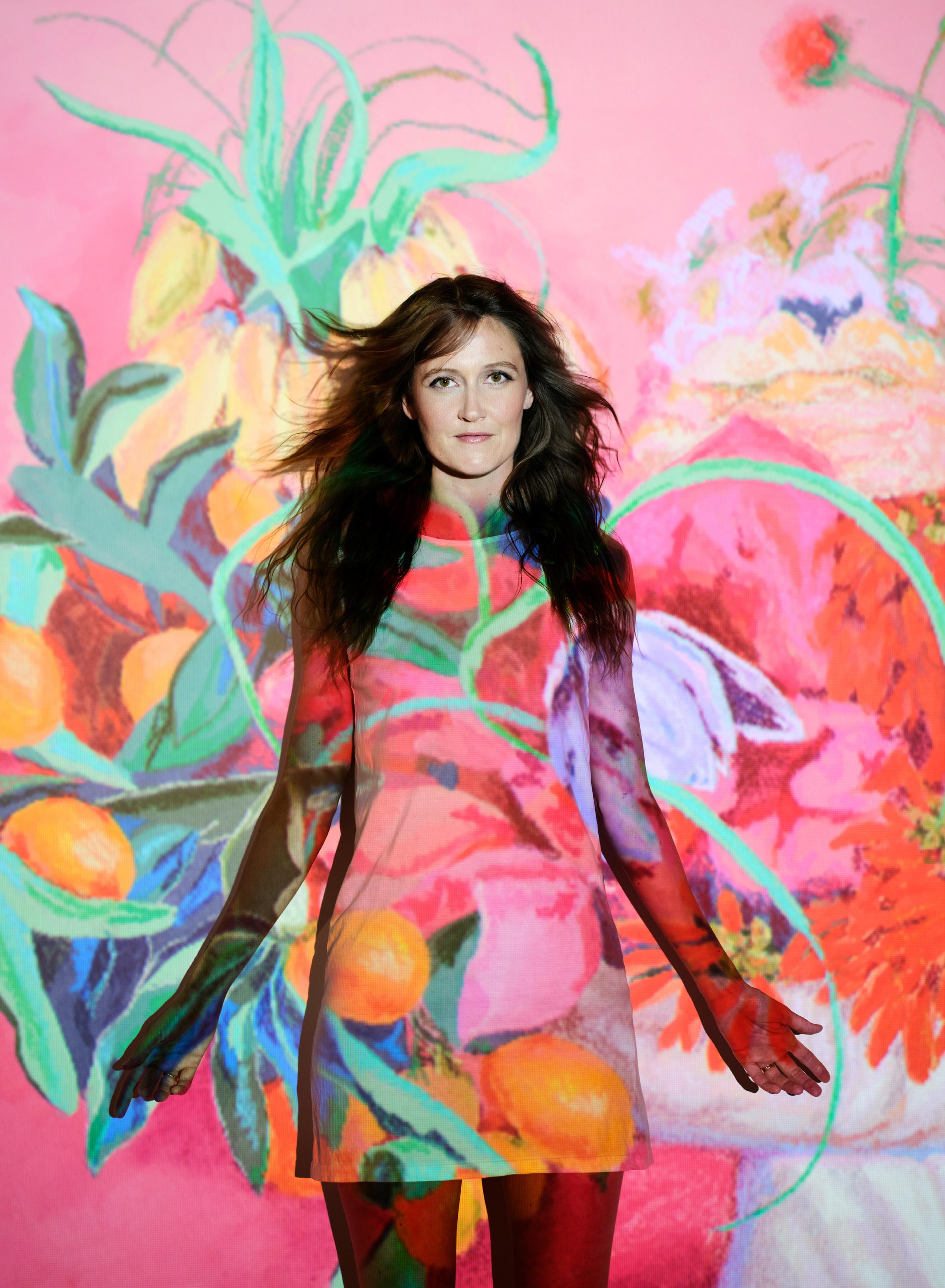
$7.95 FALL 2023 hamiltoncitymagazine.ca NO. 6 - THE ARTS + CULTURE ISSUE ONE-YEAR ANNIVERSARY MURAL ARTIST KAYLA WHITNEY HELPS US CELEBRATE OUR 50 years of HAMILTON PLACE. A deep dive into local ART GALLERIES. Shining a light on the HOMELESS IN THE CITY. The exciting GREY CUP FESTIVAL. And the rising of a NEW DOWNTOWN. All this and more are packed inside!
Be the future of Hamilton, one of Canada’s largest cities and most diversified economies. Home to an active and inclusive community; thriving arts, cultural and music scenes; and a mecca of food and culinary experiences. A waterfront city that embraces its natural environment and beauty with hundreds of kilometers of hiking trails, and so much more. Join our diverse, talented and ambitious city team who embody our commitment to service quality, a passion for nurturing change and a dedication to steadfast integrity. Our engaged, empowered employees make a difference. So will you. Hamilton is happening. #BeTheReason
Consider joining the City to advance your career in public service.
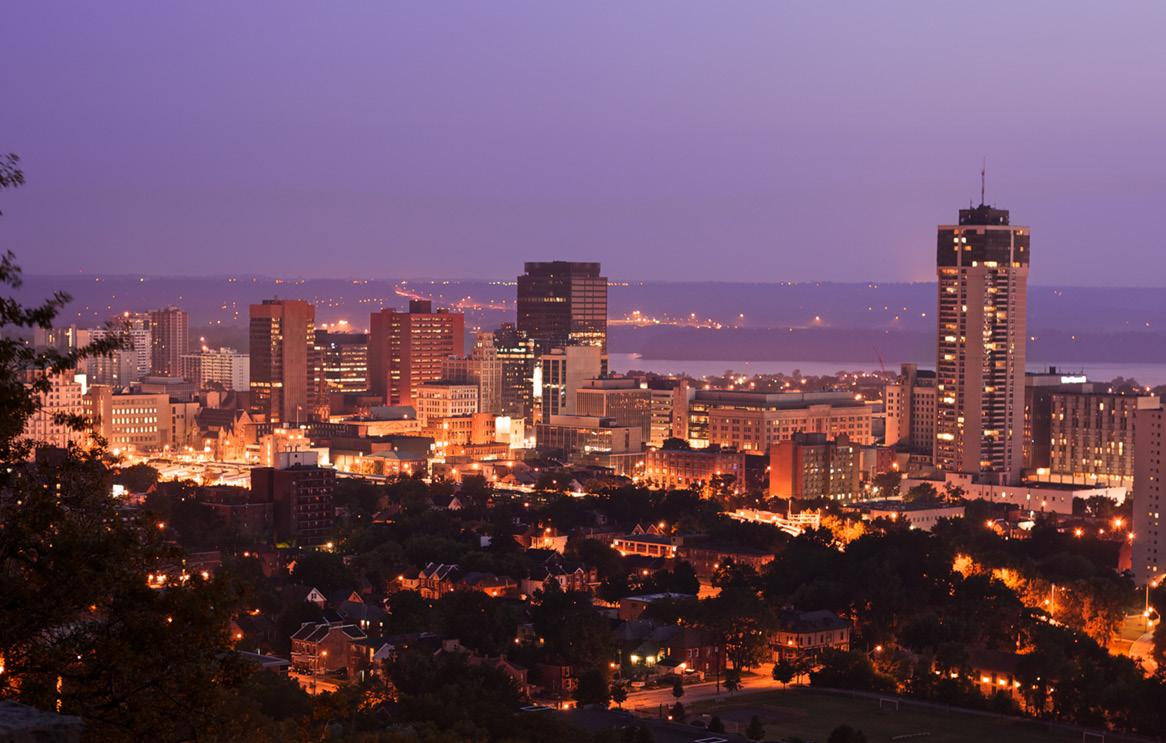
Scan the QR code or visit hamilton.ca/careers
hamilton.ca/careers


October 20, 2023 – January 7, 2024
Art Gallery of Burlington
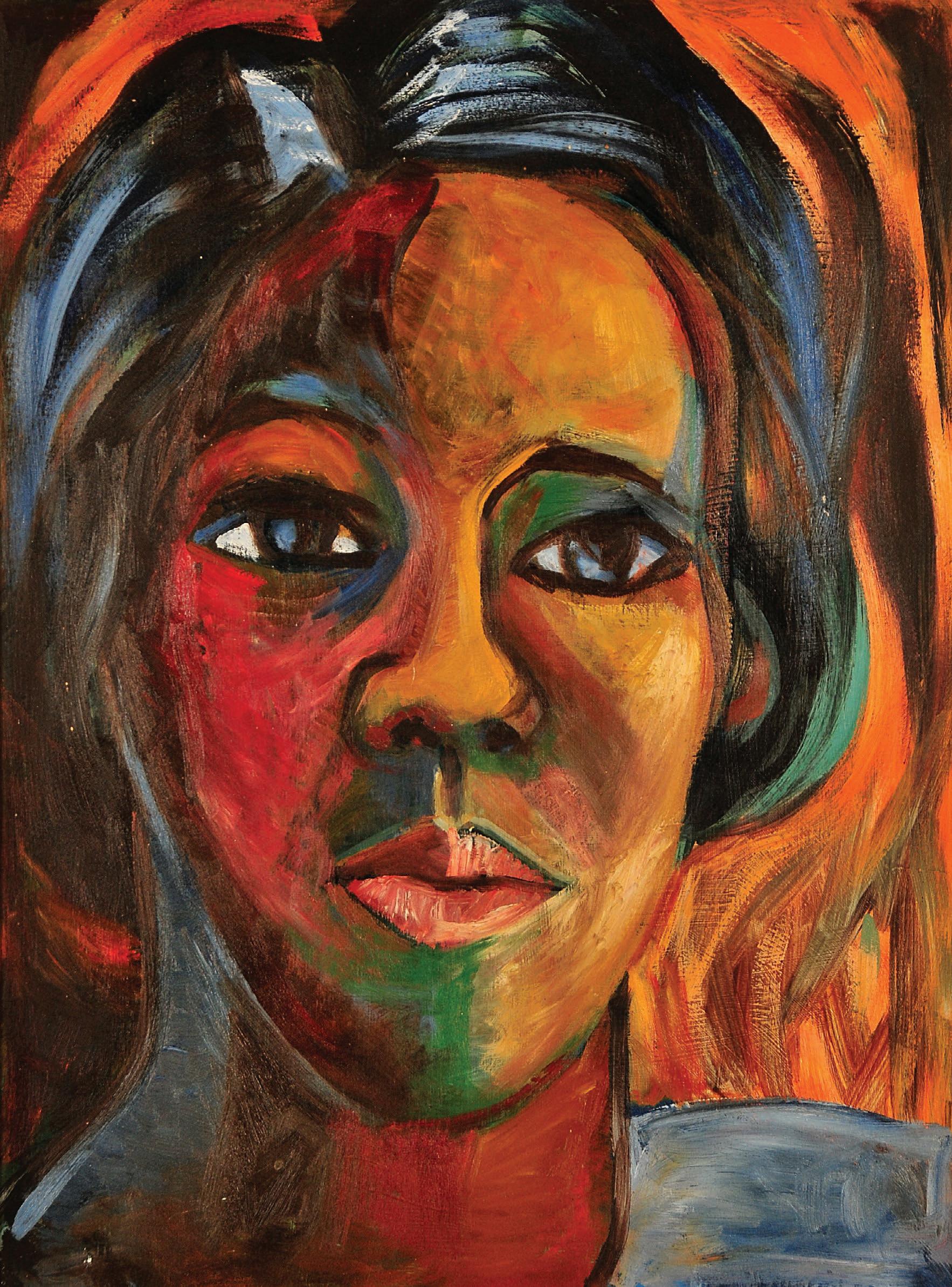
Gallery Hours
Tuesday – Thursday 10 am – 9:00 pm
Friday – Sunday 10 am – 5:00 pm
agb.life | @artgallburl
Sybil Atteck
The AGB is generously supported by the City of Burlington, Ontario Arts Council, Ontario Trillium Foundation, and Canada Council for the Arts.
Sybil Atteck, Self-Portrait, 1973. Acrylic on board. 71.12 × 55.88 × 2.54 cm. Courtesy of Helen Atteck.







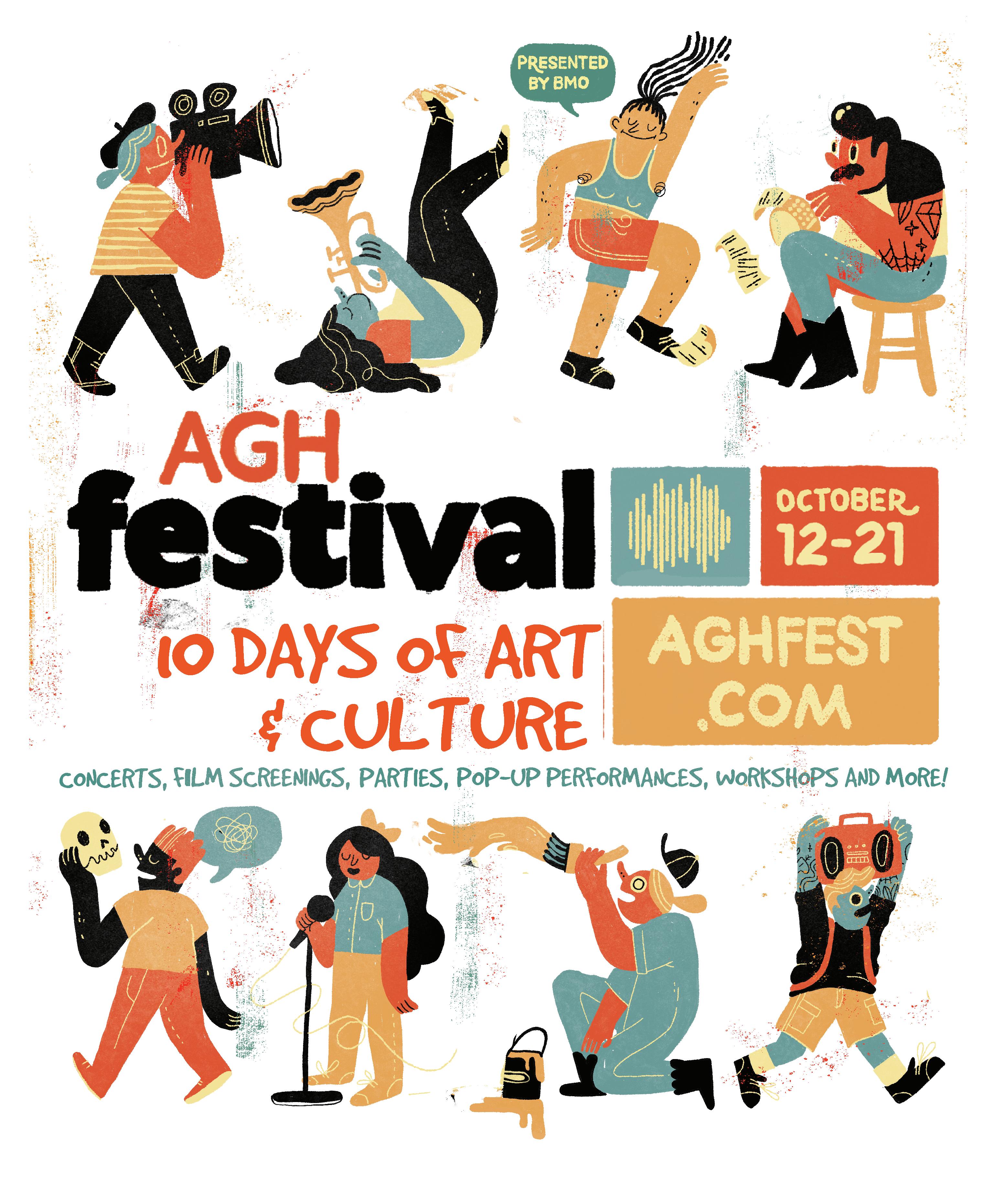
CMY
SCAN HERE FOR FULL SCHEDULE DETAILS AND MUCH MORE!
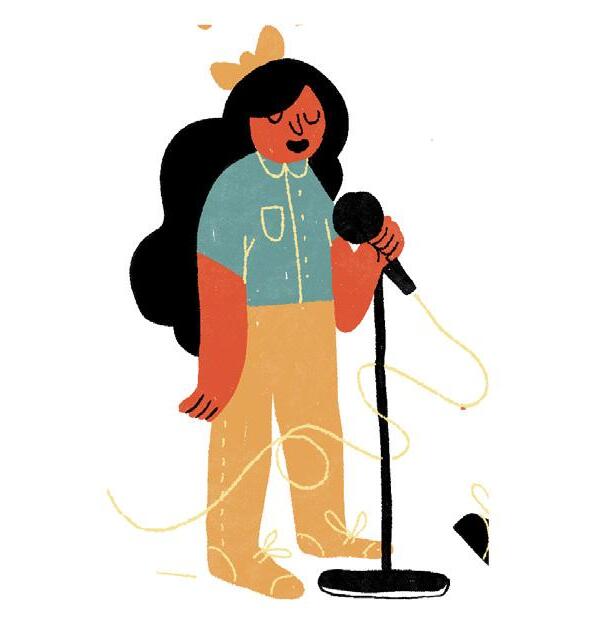












AN EVENING OF WONDER DAY ONE THURSDAY, OCTOBER 12 7PM-10PM AGH FRUIT SALAD X WONDER DANCE PARTY 8PM-12AM AGH VAULT TOUR DAY TWO FRIDAY, OCTOBER 13 12PM-1PM AGH AGH PAVILION POP-UP PERFORMANCE BIMBOS IN SPACE 7PM-8PM AGH
THREE SATURDAY, OCTOBER 14
WORKSHOP 11AM-2PM CENTRE [3]
HOP EVOLUTION SCREENING & PANEL 7PM-10PM NEW MUSIC VISION HALL
ANNIVERSARY OF HIP HOP PARTY AGH 11AM-5PM
POP-UP CONCERT AGH LOBBY 2PM-3PM INTRO TO WEAVING HAMILTON CRAFT STUDIOS 2PM-4PM FAMILY FUN DAY DAY FOUR SUNDAY, OCTOBER 15 11AM-5PM AGH SOUND BATH DAY FIVE MONDAY, OCTOBER 16 7PM-9PM AGH PAVILION DAILY ART PRACTICE MINDFULNESS IN ARTMAKING AGH FISCHER GALLERY 7PM-9PM POP-UP PERFORMANCE FOR YOUR ENTERTAINMENT AGH 6PM-7PM AGH FISCHER GALLERY 7PM-9PM DAY SIX TUESDAY, OCTOBER 17 THOMAS DUXBURY POP-UP CONCERT AGH LOBBY 6PM-7PM PROFESSIONAL ARTIST DEVELOPMENT WITH ALISSA SEXTON AGH 7PM-9PM BOOK TALK WITH BRITT WRAY INTRODUCTORY HIP HOP CLASS DAY SEVEN WEDNESDAY, OCTOBER 18 7PM-9PM AGH PAVILION SCREENPRINTING WORKSHOP 6PM-9PM CENTRE [3] LIFE-SIZED CITY SCREENING 7PM-9PM AGH FISCHER GALLERY BREAKING THROUGH THE VAULT AGH FISCHER GALLERY 4PM-6PM DAY EIGHT THURSDAY, OCTOBER 19 MINDFUL DRAWING AGH FISCHER GALLERY 1PM-2PM DISCOCAB POP-UP PERFORMANCE 7PM-8PM AGH LOBBY THE CLOSING CONCERT: WHITEHORSE & GOLDEN FEATHER 7PM-11PM PRINT EXPO DAY TEN SATURDAY, OCTOBER 21 11AM-5PM AGH PAVILION/ NEW MUSIC VISION HALL FISCHER GALLERY BLOOD AND WATER SCREENING & PANEL 1PM-4PM THE WESTDALE AGH VAULT TOUR DAY NINE FRIDAY, OCTOBER 20 12PM-1PM AGH BIPOC hArt DANCE 8PM-10PM THE WESTDALE FABULICIOUS! 5PM-10PM ACCA BANQUET HALL
DAY
SCREENPRINTING
HIP
50TH
WHITNESS
PUBLISHER
JEFFREY MARTIN jeff@hamiltoncitymagazine.ca
ASSOCIATE PUBLISHER + EDITOR

MEREDITH M acLEOD meredith@hamiltoncitymagazine.ca

CREATIVE DIRECTOR
WILL VIPOND TAIT will@hamiltoncitymagazine.ca
FINANCE DIRECTOR GORDON MUISE accounting@hamiltoncitymagazine.ca
COPY EDITOR
SHERRI
TELENKO
HAMILTON CITY Magazine (HCM) is published by Hamilton City Publishing Inc.. All rights reserved. Content may not be reprinted without written permission. ©2023 Hamilton City Publishing Inc.
HCM is a member of Magazines Canada. HCM basic price: $35 (HST includedfive issues). Single copies: $7.95 (plus HST).
HCM (ISSN 2816-7449) is indexed in the Canadian Periodical Index. Printed in Canada by Dollco Print Solutions Group. Canada Post Publications Mail Agreement #44039515.
Contact Us: 270 Sherman Av N, Studio 301 Hamilton, ON L8L 6N4 info@hamiltoncitymagazine.ca hamiltoncitymagazine.ca



It’s been a year since we published our first issue! We are proud to have made it to this milestone and hope we have many more in our future.
This is yet another killer edition that we are thrilled to show you. And it’s our first cover in colour – thanks to artist Kayla Whitney for being our model!
If this is your first time seeing HAMILTON CITY Magazine – perhaps we just showed up in your mail – we hope you love it.
This has been quite a year, to say the least. Nearly everyone who heard we were bringing a print magazine back to Hamilton wished us luck but said we might be crazy. They weren’t wrong. Print is incredibly challenging and producing a high-quality, beautifully designed and written magazine is an expensive and demanding undertaking.
We firmly believe that Hamilton, Burlington and our region need and deserve a magazine focused on arts, culture and city life. There is so much to talk about. Our list of
story ideas is long and ever-growing.
But ad sales and other forms of revenue have been slower to materialize than we had hoped. We are working as hard as we can to make this thing a success.
We urge you, if you appreciate what we are doing and what HCM brings to civic life (and we know there are many of you!), please find a way to support us.
Spread the word, subscribe, and support our advertisers. If you own a business in Hamilton, please consider becoming an advertising partner. If you know business owners who would see value in joining us, please connect us to them.
And if you are an experienced ad salesperson who knows and loves Hamilton, we are looking for you.
We continue to be determined and we are so grateful for all of you who have already got behind HCM. Together, we can do amazing things!
–The HCM team

4 HCM FALL 2023
From award-winning writers to world-class photographers, hamilton city magazine is proud to support incredible local creative talent. scan the qr code to read about our amazing contributors. @hamiltoncitymag @HamCityMagazine @HamiltonCityMagazine @HamiltonCityMag @hamilton-city-magazine
OUR FIRST ANNIVERSARY!
MURAL ARTIST KAYLA WHITNEY WORE HER ART FOR OUR FIRST-EVER COLOUR COVER. BEHIND THE SCENES: SCAN THE QR CODE TO SEE A VIDEO OF OUR COVER SHOOT!
THE HEADLINERS
14/ FROM TRAGEDY TO TRIUMPH
A family and a community united to beat the odds after a father’s catastrophic injury.
26/ GETTING TO THE CORE

Thousands more people will be living in Hamilton’s downtown in the coming years. This will change how downtowners live, work and play.
30/ ‘YOU WILL BE WOWED’
Six days of Grey Cup Festival events ahead of the CFL’s championship game in November will showcase the best of Hamilton.
34/ EVOLUTION IN ART
Art galleries in Hamilton, Burlington and McMaster University are breaking down barriers and envisioning the way forward.
38/ THE MARVELLOUS HAMILTON PLACE TURNS 50
Yes, we know it’s officially called the FirstOntario Concert Hall, but its original name endures, as does its importance to Hamiltonians.
42/ ‘THIS IS THEATRE, BABY!’
Hamilton Conservatory for the Arts offers theatre, dance, music, and arts classes, workshops and camps for children, teens and adults, along with chances to perform.
59/ HESS VILLAGE: THE VETERANS AND THE NEWCOMERS
Hamilton is a city blessed with great food and dining districts. We will regularly be profiling local culinary corridors and we start with Hess Village.
pg56
DISHING ON THE DELIS
wH et H er p olis H , p ortuguese, J ewis H or i talian, t H ere are plenty of local delicatessens serving up delig H tful meats, sandwic H es, sweets and H ot entrées.
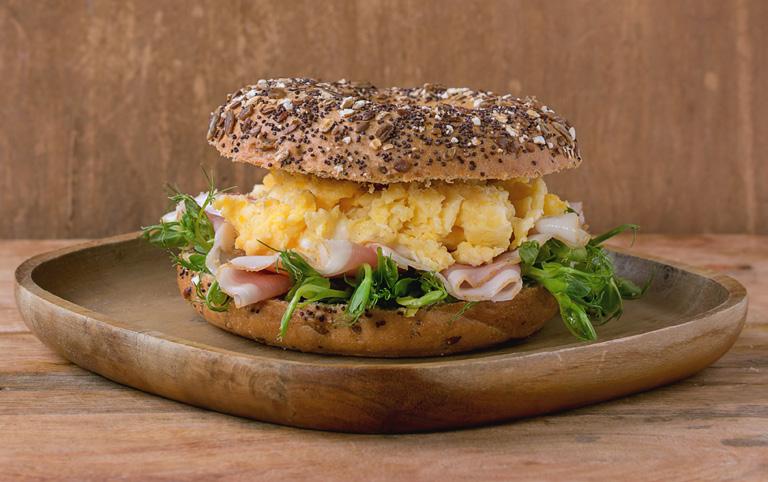
FALL 2023 HCM 5 inside
ON THE COVER: KAYLA WHITNEY Photographed by Marta Hewson for HAMILTON CITY Magazine | Photo assistants: Katelyn O’Neil and Jerrold Hewson
Human Beings of Hamilton s H ines a powerful spotlig H t on t H ose living on t H e streets of t H e city.
pg18 FOCUSING ON HUMANITY
Never stop learning.

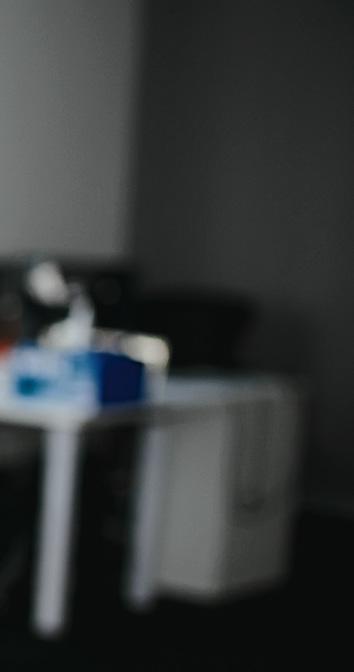
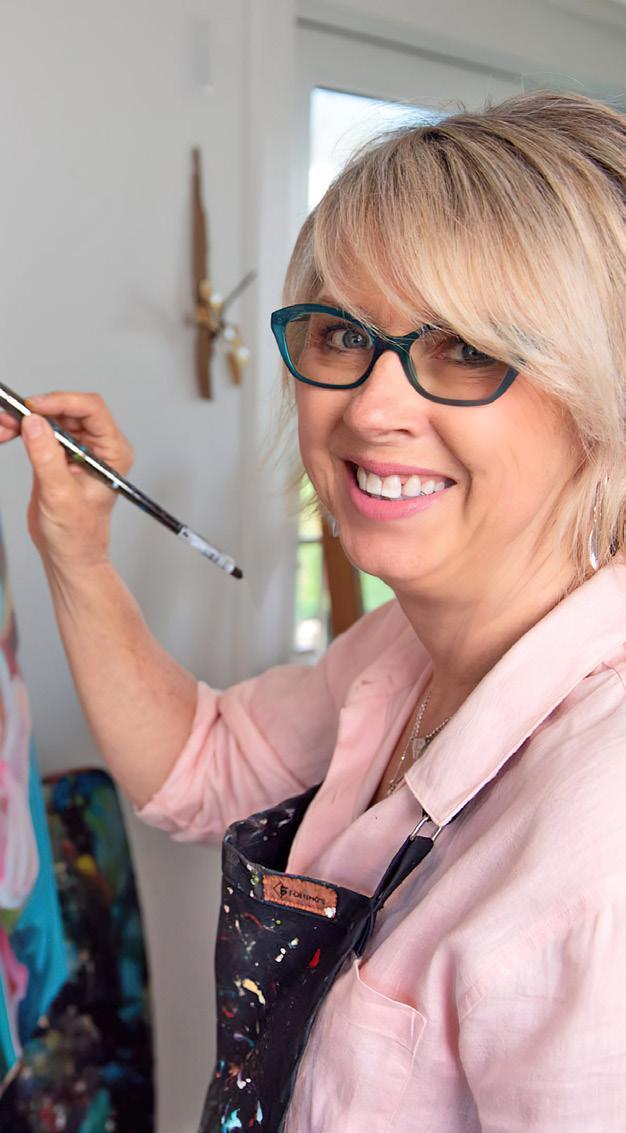
LAND ACKNOWLEDGEMENT

The City of Hamilton is situated upon the traditional territories of the Erie, Neutral, Huron-Wendat, Haudenosaunee and Mississaugas. This land is covered by the Dish With One Spoon Wampum Belt Covenant, which was an agreement between the Haudenosaunee and Anishinaabek to share and care for the resources around the Great Lakes. We further acknowledge that this land is covered by the Between the Lakes Purchase, 1792, between the Crown and the Mississaugas of the Credit First Nation.
Today, the City of Hamilton is home to many Indigenous people from across Turtle Island (North America) and we recognize that we must do more to learn about the rich history of this land so that we can better understand our roles as residents, neighbours, partners and caretakers. Both the National Day for Truth and Reconciliation and Orange Shirt Day take place on Sept. 30 and recognize that at least 150,000 Indigenous children from across the country were forcibly separated from their families and their communities.
6 HCM FALL 2023
MAIN ATTRACTIONS 7/ CITY LIFE 25/ MADE IN HAMILTON 33/ ARTS + CULTURE 55/ FOOD + DRINK REGULAR STOPS 10/ FOR THE LOVE OF HAMILTON 23/ LIFE IN THE CITY 52/ HAMILTON READS 62/ CITY VIEW a rtist Julia v eenstra and H er family H ave opened a gallery and café on ottawa s treet n ort H t H at aims to elevate artists and make art accessi B le. pg46 A NEW ART EXPERIENCE
Flexible options geared to your success. Diplomas | Certificates | Micro-credentials | Courses | Workshops Discover Continuing Education ce.mohawkcollege.ca
Riding for a cure
KRIS NOAKES HAS A GENETIC FORM OF ALS. SHE’S LEADING A RIDE IN DUNDAS TO RAISE MONEY AND AWARENESS ABOUT THE DEVASTATING DISEASE.
Kris Noakes found out two years ago, at the age of 48, that she has a genetic form of amyotrophic lateral sclerosis (ALS), just like her father, grandmother, aunts and uncles and a cousin.
ALS is a progressive neurological disease in which the brain loses the ability to communicate with the body’s muscles. Over time, someone living with ALS will lose the ability to walk, talk, eat, swallow, and eventually breathe.
One in 300 people will develop ALS. Every 90 minutes someone is diagnosed and every 90 minutes some loses their fight.
“People are either terrified or perplexed when I share my diagnosis. It’s either their worst nightmare or they don’t know what it is.”
It’s not readily apparent that Noakes has such a devastating disease. But she increasingly struggles to open lids or button a shirt. She had to move into a bungalow in Dundas because her beloved home in Hamilton had too many stairs.
Noakes, a former police officer, is quick to laugh and talks about her disease with a steely determination to do all she can to fend off its progression and to fight for
others, including her children. The only time emotion floods forward is when she acknowledges she may not see her daughter, who is 13, grow as old as her son, who is 28.
She estimates it costs the average family about $150,000 a year, including home modifications, accessibility devices, uncovered medications and private home care.
“This is an absolutely horrible disease that plunges families into financial crisis,” says Noakes, who sits on the board of ALS Canada. “It will take anything you ever worked for away from you.”
Though there isn’t nearly enough money going into ALS research, Noakes says discoveries are being made that make her hopeful a cure is coming.
Noakes, who is Indigenous, has thrown herself into advocating for those with ALS. She is vice-chair of Revolution Ride, a charity bike ride for ALS that will start and end at Shawn & Ed Brewing Co. in Dundas. The Sept. 24 fundraiser includes 12 km, 40 km and 90 km routes that wind through Westdale, Ancaster, and Hamilton.
“For me, it is a celebration that every year I am able to still ride my bike is a year I am winning the fight against this relentless, devastating disease.” n revolutionride.ca
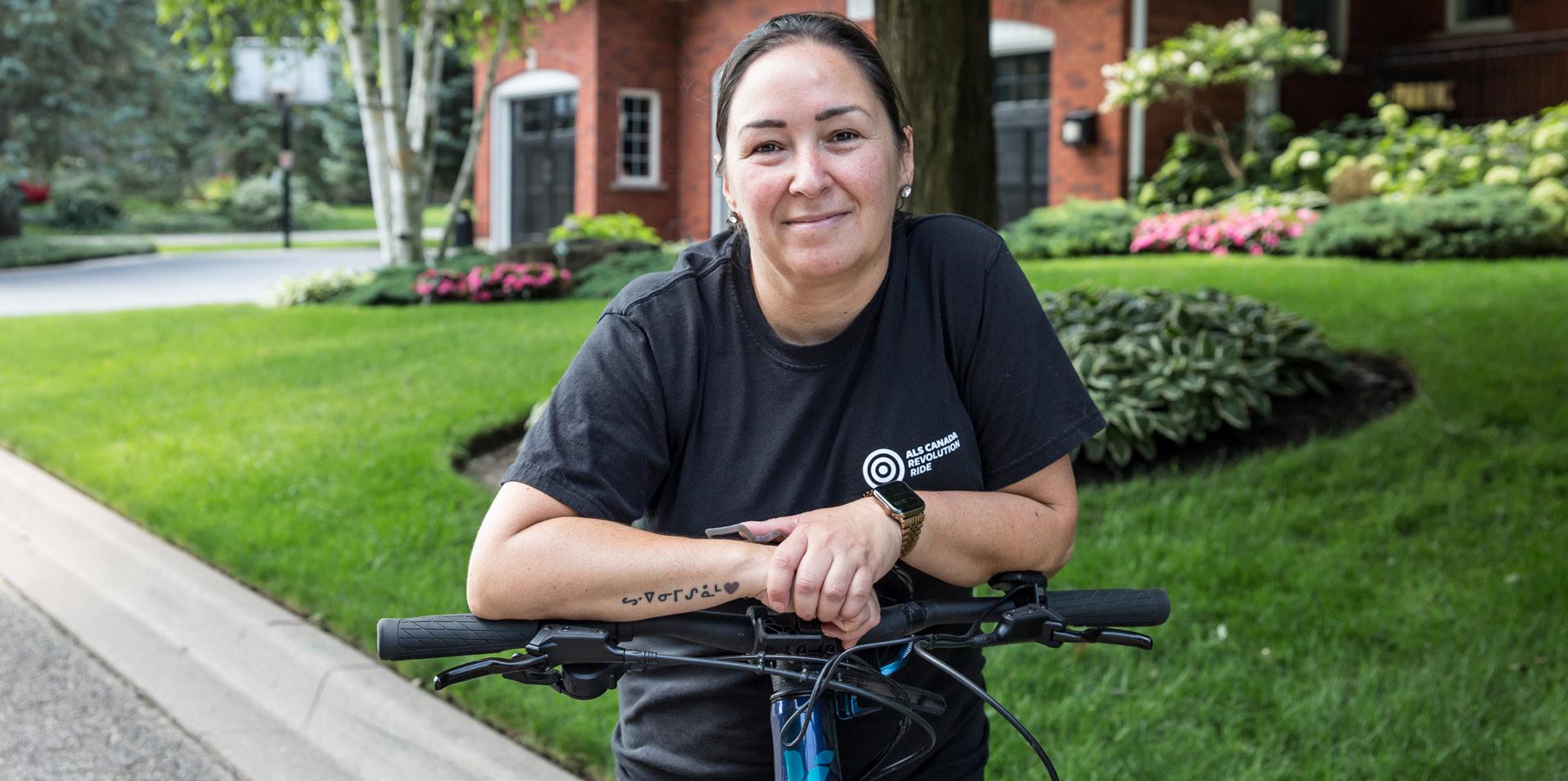
FALL 2023 HCM 7
DUNDAS RESIDENT KRIS NOAKES IS LEADING THE REVOLUTION RIDE ON SEPT. 24, WHICH WILL RAISE AWARENESS AND FUNDS FOR RESEARCH INTO ALS. PHOTO: LISA MACINTOSH PHOTOGRAPHY
DENSITY IS THE ANSWER TO THE HOUSING CRISIS
WE NEED TO BUILD MORE HOMES – OF ALL KINDS – IN HAMILTON. THAT MEANS UNDERSTANDING THAT WE CAN’T SIMULTANEOUSLY HOLD FAST ON THE URBAN BOUNDARY WHILE FIGHTING INTENSIFICATION IN EXISTING NEIGHBOURHOODS.
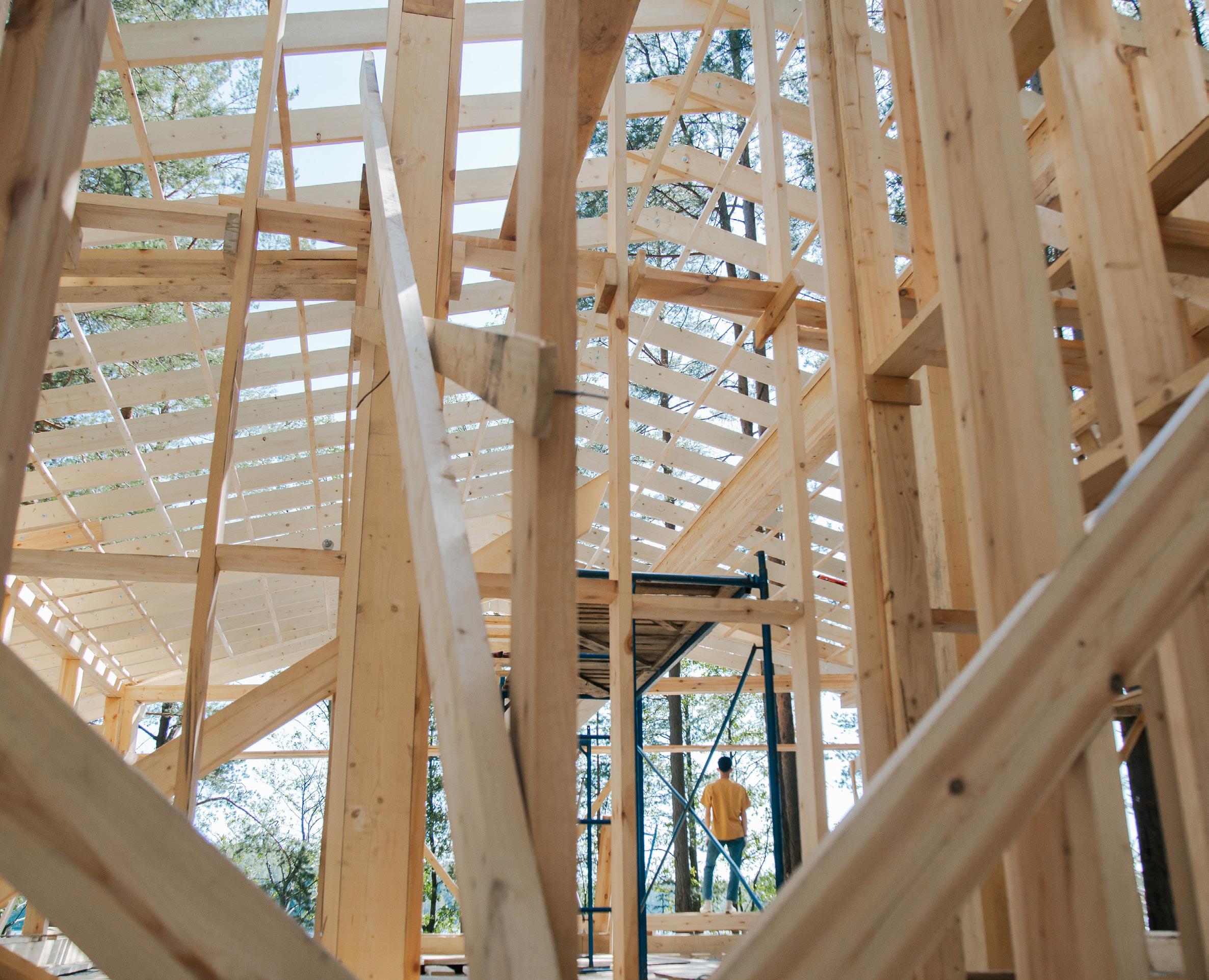 By RYAN MCGREAL
By RYAN MCGREAL
8 HCM FALL 2023
/CITY LIFE
We are in a housing crisis, in Hamilton specifically and across Canadian cities more broadly. The principal cause is surprisingly straightforward: our population is growing faster than the number of dwellings.
The housing crisis is fundamentally a housing supply crisis, and the more clearly we understand this, the better we can focus on how to mount an effective response.
In Hamilton, according to census data, the population grew by 6.04 per cent while the number of dwellings grew by only 5.29 per cent between 2016 and 2021. This is new: from 2001 to 2016, the number of dwellings consistently grew faster than the population.
If we zoom out to the Hamilton census metropolitan area, which also encompasses Burlington and Grimsby, the population increased by 5.04 per cent from 2016 to 2021 while dwellings increased by only 4.59 per cent.
This disparity has widened in the past two years. Canada’s population grew by a million people in 2022, but there were only 261,849 new housing starts. If we assume an average of 2.5 residents per dwelling, that means we started enough homes for 650,000 people –well short of the total.
Canada’s population is on track to grow by another 1.15 million people in 2023. But the number of new housing starts across Canada over the first half of this year totalled just 110,893 units – a little less than half of what we need.
Yes, persistently low interest rates in the years following the Great Recession played a role in driving up house prices. Cheap borrowing costs enabled more people to borrow larger amounts of money, which increased the pool of people who could afford to take on a mortgage and drove up house prices.
But the Bank of Canada’s concerted efforts since March 2022 to dampen market demand by raising interest rates have had only a relatively modest effect on house prices. In Hamilton, the average house price is down some 15 per cent since last year.
There’s a limit to how much you can suppress demand for housing without adding new supply. A home is not a discretionary expense that consumers can defer when interest rates are high. Everyone needs somewhere to live!
This is why rental prices continue to rise at unsustainable rates. In Hamilton, rents are up 17 per cent since last year to $1,800 for a one-bedroom apartment and $2,300 for a two-bedroom.
It also helps explain the increasing scale, visibility and immediacy of the city’s unhoused population. The number of unhoused people in Hamilton increased by a staggering 70 per cent from 1,000 in 2020 to 1,700 this year.
In cities like Hamilton, where demand for housing has
been growing fast, when there isn’t enough housing for everybody, the poorest and most vulnerable residents are at higher risk of getting squeezed out of their homes.
The trauma of losing a home triggers a self-reinforcing spiral of loss, instability, abuse, violence and fear, all of which make the mission to stabilize, support and rehouse people more challenging – even when there is physical housing available.
So what does all this mean for policy?
At the most basic, we need to dramatically increase the supply of housing. Nationwide, we are currently on track to build a total of about 485,000 new homes over 2022 and 2023, but based on population growth, we actually need 860,000 new homes. That’s a shortfall of 375,000 homes.
We need more of everything: more shelter space, more transitional housing, more deeply affordable housing, more affordable housing, more middle-income housing and more upper-income housing. This may seem counterintuitive, but a market shortage at any segment of the housing market spills over into other segments and people with more purchasing power end up outbidding people with less.
We need housing built faster – a lot faster. The reasons housing takes so long to build are myriad and thorny, and we need to be bold and strategic about addressing them.
This past April, the City declared a state of emergency for homelessness. So let’s act like it’s an emergency.
The city can’t solve the housing crisis by itself but there are things we can do.
We can rethink rigid mandatory minimum parking requirements that make no sense, for example in supportive housing projects. We can stop delaying projects for months while wrangling over how waste will be collected.
We can face the searing need to increase density across the city. Far too often, folks who already own homes are quick to wield municipal policy toolsincluding environmental assessments - to stall, delay and deter infill projects that could make the communities they rightly love accessible for more people.
Infill development makes more sustainable, costeffective use of existing public infrastructure, enlivens existing neighbourhoods, taps into community resources and provides residents with more options to get around.
We need to stand up to the persistent but baseless NIMBY fear that infill housing will somehow lower property values or reduce quality of life. This fear fundamentally misunderstands what makes urban neighbourhoods so functional and desirable in the first place: the proximity of other people!
In a city that overwhelmingly supported the recent campaign to maintain our urban boundary, we can’t simultaneously fight to protect the Greenbelt from destruction while also fighting against intensification in our existing neighbourhoods. n
FALL 2023 HCM 9
FOR THE LOVE OF HAMILTON
THIS REGULAR FEATURE WILL HIGHLIGHT PEOPLE FROM ALL WALKS OF LIFE WHO HAVE EMBRACED HAMILTON AS THEIR NEW HOME.
KAYLA WHITNEY
who she is: Mural artist
interviewed by: Meredith MacLeod
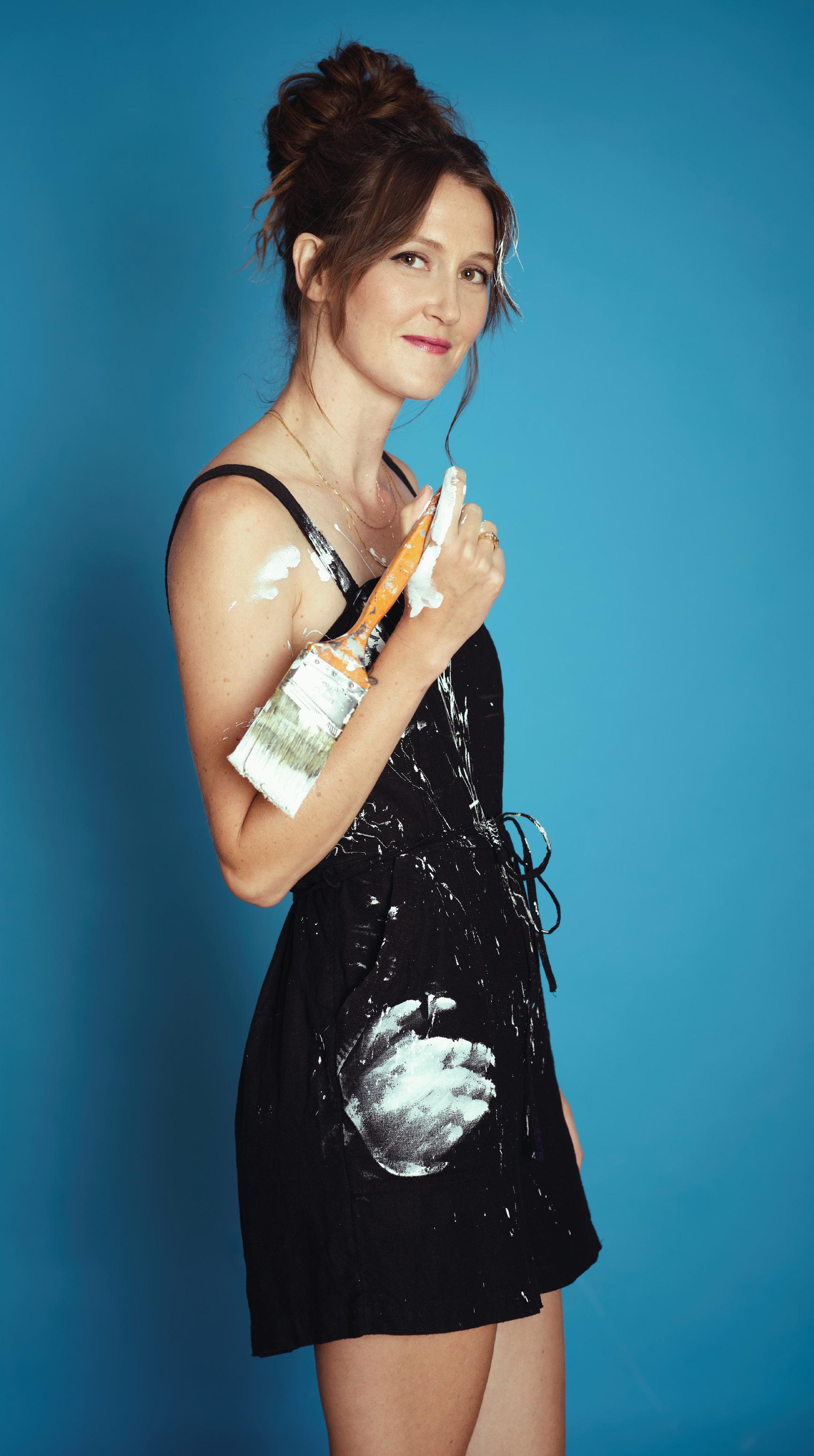
Don’t miss an in- D epth story online:
rea D the full interview with Kayla w hitney, view pictures of her art an D see a behin Dthe-scenes vi D eo of our cover shoot: scan the qr co D e
10 HCM FALL 2023
photo by: Marta Hewson for HCM
/CITY LIFE
KAYLA WHITNEY IS FROM CHATHAM, Ontario. She attended OCAD University in Toronto and opened Koe Design, a commercial arts studio offering illustration, design and mural services, in 2017. Effective public art, she says, “makes everyone feel good, feel represented, feel included, feel beautiful, feel heard, feel at home, feel safe, and feel welcome.” She lives in the North End.
A LIFE IN COLOUR
What brought you to Hamilton?
In 2016 my husband and I had just wrapped up a few years of life in the country and concluded farming was not our thing, we desperately needed to return to city life. I think artists are always seeking that place where you can afford to live and make your work and that also has a thriving arts community, and that’s what initially drew us here. Being able to rent something affordable that would have space for studios for both of us was all very enticing. We moved here having never even been here before, and then just immediately fell completely and passionately in love with this city.
How would you describe your artistic style?
My artistic style is vibrant, playful, expressive and heavily influenced by colour. I tend to lean towards organic imagery like birds, fruit and florals because I find so much room for expression and exploration within their forms.
What is your favourite project so far?
The project that I am currently working on for Carol Anne’s Place, which is inside the YWCA downtown, has instantly become my favourite project ever. I believe so deeply in what they are doing there, and the way they are supporting the people of our community who need it most ... Now to be there onsite, using the mural to infuse the space with a sense of love, light, ease and belonging that will hopefully come through the mural and into each person who spends time there – it is a really moving process. I am supporting a beautiful organization that is changing the lives of so many people here in Hamilton.
What’s the one thing you brag about Hamilton to outsiders?
I brag about the way Hamilton feels, the way the
community, and my neighbourhood, and the city generally, and the people here – the way it all feels. But no one really gets it. Sometimes I feel like ‘getting it’ is like this filtration system. Most people won’t get it, and won’t choose to move here, but the special few who do truly get it, they are the ones who move to Hamilton, and that’s how the city remains so great.
What’s your take on Hamilton now that you’ve got some roots here?
Hamilton is … the first thing that comes to mind is completely insane but like I absolutely deeply and purely love it here. It’s got grit, as they all say, and our housing crisis and substance abuse issues are getting worse and worse by the day. But at the same time, the community response to these issues is not something I see in other cities. There is a heart here – like a deep sense of connection, and loyalty to one another. Some kind of understanding that we are all each others’ responsibility and there is room for everyone. As an artist, I have never ever felt a sense of competition from anyone, the attitude has always always been “What do you do? This is what I do, how can we work together?”
What’s Hamilton’s best-kept secret? Oh. I would never tell.
What does Hamilton need more of?
Affordable housing. Accessible, abundant and safe overnight shelters. Community responders – for when police intervention isn’t appropriate. Clean, accessible public restrooms. Street cleaning – everywhere not just on the gentrified streets. Bike lanes – though we are doing better. Careless driving enforcement and pedestrian protection. Outdoor dance parties (bring back Sous Bay!)
FALL 2023 HCM 11
YOU’D LIKE TO BE FEATURED IN FOR THE LOVE OF HAMILTON,
CONTACT meredith@hamiltoncitymagazine.ca
IF
PLEASE
/continued online
HAMILTON’S EXPENSIVE FICTION
By PAUL SHAKER
Understanding the type of city you are helps communities plan for the future. If you are a tourist town, you gear infrastructure and communications to attract visitors and boost local business. If you are a tech centre, you focus on an innovation ecosystem and quality of life to attract talent to live and work in your city. However, if you are a bedroom community, you tend to facilitate development that gets people out in the morning, and back home in the evening. Approving new housing near highways is accelerated and the construction of supportive commercial clusters, like big-box malls, is prioritized.
So what type of city is Hamilton? There are competing answers to that question – some based in fact, others based in fiction. Let’s start with the fiction.
For decades, there has been a pervasive
idea that Hamilton is a commuter suburb. The conventional wisdom, starting in the early 1990s, was that with industrial decline, Hamiltonians had to look elsewhere for work and thus the workforce had shifted to an “out-commuting” culture. More recently, Hamilton’s housing prices ushered in a new narrative that says waves upon waves of Torontonians are moving to Hamilton and thus Hamilton is full of commuters who make the trek to Hogtown daily. There are many problems with these assumptions, but two major ones stand out.
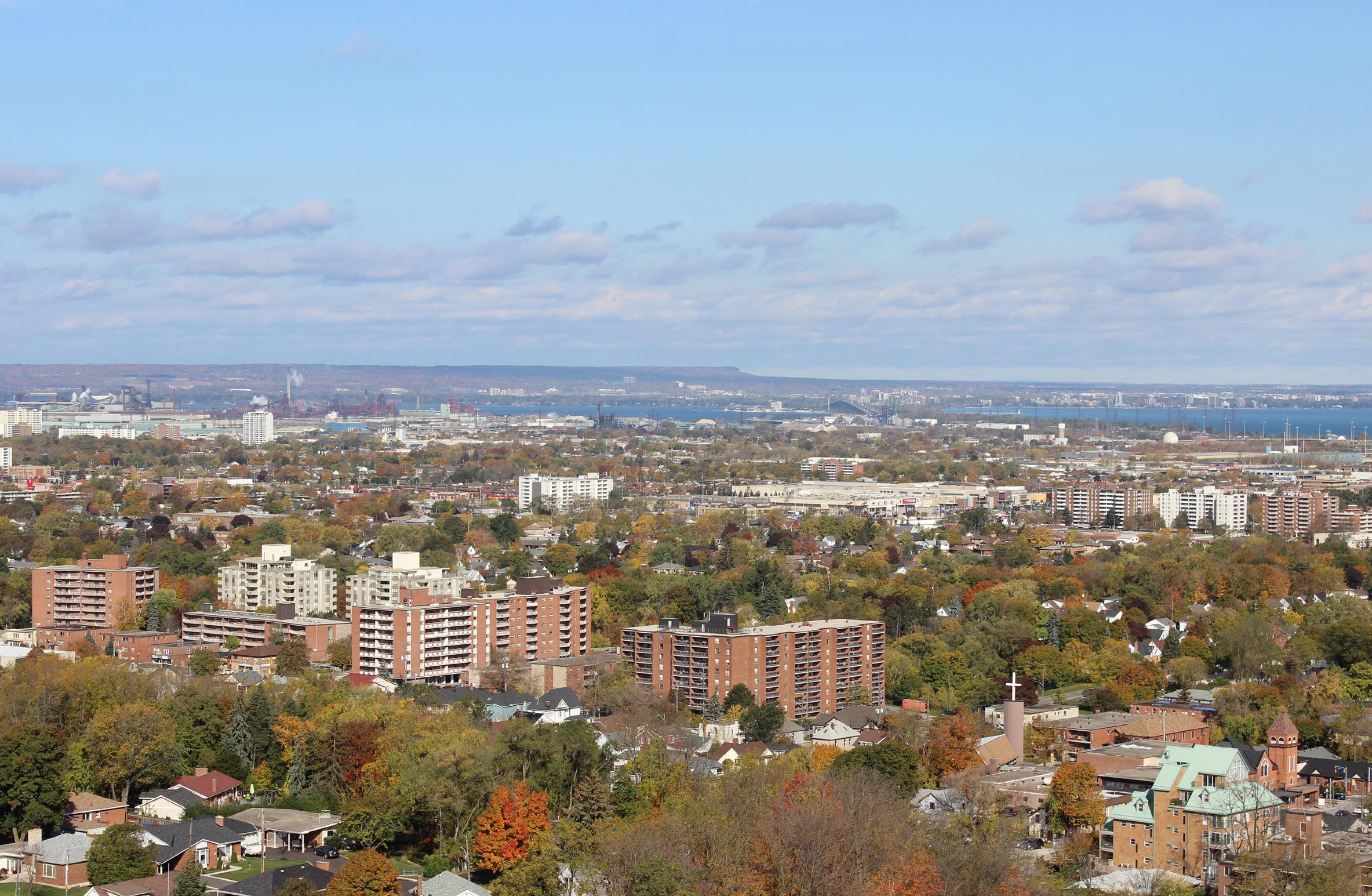
First, the actual data on where Hamiltonians work doesn’t back this up. Second, while operating under this false idea of the city, certain planning and investment decisions were made that were not properly focused on building the city that actually exists.
Let’s start with the data. Statistics Canada keeps track of commuting destinations each census. The most recent 2021 census
12 HCM FALL 2023
/CITY LIFE
FALSE NARRATIVES THAT HAVE GUIDED PLANNING DECISIONS FOR DECADES HAVE RESULTED IN COSTLY URBAN SPRAWL. IT’S TIME TO PLAN FOR THE CITY THAT REALLY EXISTS.
TOP 10 COMMUTING DESTINATIONS FOR HAMILTONIANS
department, downtown Hamilton is the city’s largest employment node, with an estimated 26,305 jobs.
In terms of the types of jobs, a survey of downtown businesses revealed that there is a mix that includes government, professional and scientific, retail and entertainment, FIRE (finance, insurance and real estate), healthcare, social services, creative industries, education, and non-profits.
So what we have is a city where the vast majority of people live and work locally and where the single largest employment hub is the downtown, which contains a healthy mix of good-paying jobs from a variety of sectors.
Given these realities, how has Hamilton planned and invested in itself over the last number of decades? From an economic development perspective, the goals have been mixed. On the one hand, strategies such as downtown and waterfront renewal were developed to create a vibrant city with enhanced local quality of life in order to attract business and talent. On the other hand, new development has moved things in the opposite direction. In the last 20 years, growth has occurred on the outskirts in the form of urban sprawl. Specifically, while the population grew by about 14 per cent between 2001-2021, the urban area grew by 28 per cent.
and ’90s, Hamilton decided to focus its money and efforts elsewhere. Even when regional GO transit was finally brought to Hamilton, it was initially set up as an out-commuting service.
Likewise, since the 1990s, Hamilton approved the tripling of the number of massive large-format big-box malls that were located beside these commuter neighbourhoods. Did the local market suddenly become three times as wealthy in order to justify this expansion, or did existing local commercial districts get cannibalized in the process, leading to the decline of older retail areas?
This debate is not unique to Hamilton, but it has real consequences for residents, not the least of which is in the impact on City services, infrastructure and property taxes. Simply put, sprawl is expensive. The City of Ottawa put a cost on sprawl and revealed that it costs $465 per person each year to serve new low-density homes built on undeveloped land, over and above what it receives from property taxes and water bills. That’s up $56 from eight years ago. On the other hand, high-density infill development, such as apartment buildings, pays for itself and leaves the city with an extra $606 per capita each year, a financial benefit that has grown by $151 in those eight years.
shows that the overwhelming majority of Hamiltonians, 70 per cent, live and work in Hamilton. When they do commute out, the major destinations are Burlington (11 per cent), Oakville (3.5 per cent), Mississauga (3.2 per cent), while Toronto comes in at (2.7 per cent). Additionally, these percentages have remained roughly the same since 2006.
This means that most out-commuters are not even leaving Hamilton’s census metropolitan area, and they are working in neighbouring Burlington. Meanwhile, less than 3 per cent work in Toronto, which is completely counter to the narrative of Hamilton as a bedroom community for Toronto.
So, if the vast majority of Hamiltonians live and work in the city, where do they work within Hamilton? While employment is spread around the city, according to the City’s planning and economic development
This sprawl wasn’t by accident. It was facilitated by deliberate decisions. Hundreds of millions of dollars were spent to build highways that make it easy to get out of Hamilton. Some of these roads were connected to new business parks, but most resulted in adjacent subdivisions built on farmland advertising an easy commute out of town. Under this model, Hamilton is reduced to a peripheral community on the outskirts of the Toronto region, instead of a diverse city itself that invests in its own economic and social sustainability.
This is a familiar playbook used for GTA cities like Markham, Mississauga and Oakville, but did it make sense for Hamilton? Was there an equivalent investment that looked to build the future of the city that actually exists? For example, we are only now, in the 2020s, developing light-rail transit that will help people get in and out of the downtown, the single largest employment node, more easily. While other Canadian cities, including Ottawa, Calgary, Edmonton and Vancouver were developing rapid transit in the 1980s
It is not unreasonable to assume these numbers are similar for Hamilton. The cost of this sprawl is why existing streets in the city are not maintained properly, services are not what they should be, and why we are looking at big property tax increases year after year for the foreseeable future.
Needless to say, the status quo is not sustainable. Fortunately, as the city continues to grow, there is a chance to get things right. While the provincial government is forcing more sprawl on the city with its decision to open the Greenbelt, Hamilton still has the power to make game-changing investments that will focus growth for decades to come. That is what projects like LRT are all about. However, sustainable change will only happen by shedding the fictions that have guided past planning decisions and refocusing efforts on building the success of the Hamilton that actually exists. n
FALL 2023 HCM 13
Paul Shaker is a Hamilton-based urban planner and principal with Civicplan.
70.0% 11.0% 3.5% 3.2% 2.7% 1.5% 1.1% 0.9% 0.7% 0.6% HAMILTON BURLINGTON OAKVILLE MISSISSAUGA TORONTO BRANTFORD MILTON CAMBRIDGE BRAMPTON HALDIMAND COUNTY
A FAMILY AND A COMMUNITY UNITED TO BEAT THE ODDS AFTER A FATHER’S CATASTROPHIC INJURY.

FROM TRAGEDY TO TRIUMPH
By JEFFREY MARTIN
Brian Campbell’s story could be called a tragedy. But it is better described as one of determination, love and hope. He’s a living testimony that when disaster strikes, you can overcome and move on with your life.
Campbell, a 46-year-old father of two, fell from a ladder while putting up Christmas lights on his Waterdown house in November 2017. He landed on the lawn.
“And thank God not on the car or concrete. I landed on my shoulder blades with enough force it took my whole body over my head. I was on the garage roof and not the high roof, which would have ended much worse. I wouldn’t be here now.”
Brian’s wife Claire was inside with their 11-month-old son, Charlie. (Emily, their fiveyear-old daughter, was in school at the time.)
“Charlie was having a nap when I heard
the ladder come crashing down outside and Brian screaming,” says Claire. In an instant, the Campbells’ lives changed forever.
The force of the impact cracked the T12 vertebrae and ruptured his spinal cord.
Brian was in surgery for almost five hours, with doctors fusing three vertebrae with titanium screws to provide support.
He would spend four months in Hamilton General Hospital. With the prospect of a
14 HCM FALL 2023
/CITY LIFE
| Photos By JON EVANS FOR HCM
BRIAN CAMPBELL’S LIFE ENTIRELY CHANGED IN 2017. BUT, THANKS TO PLENTY OF SUPPORT, HE’S FOUND A WAY BACK TO DOING THE THINGS HE LOVES.
bleak Christmas in a hospital bed looming, the family experienced their first outpouring of community goodwill.
Restaurateur Ronn Mattai stepped up to provide a fully catered dinner, including a server, linen tablecloths, wine and decorations.
The family was surprised and delighted. There was so much food, they shared it with nurses and staff.
“And he wouldn’t take any money from us. It was simply amazing and heartwarming,” says Claire.
It was a bright light in a rough time for the Campbells. Brian’s recovery was long and slow.
“Just sitting up properly and the blood pressure readjusting were significant challenges,” says Claire. “He came out of the hospital in February, then moved over to the rehab centre next door on Victoria Avenue. The HHS Regional Rehabilitation Centre professionals were amazing as they’re always running at 150 per cent all the time.”
REHABILITATION
Rehabilitation is about getting a patient strong enough and skilled enough to return home and live with as much independence as possible.
“A spinal cord injury is a life-altering injury for most people,” says Mike Finlay, a physiotherapist working in outpatient spinal cord injury rehabilitation. “Brian was good. He was very grounded and focused on what he needed to do because there’s a lot of burdens that kind of come along with a spinal cord injury.”
Along with learning to use mobility assistance devices, including a wheelchair, the hardest thing to deal with, says Brian, is relearning all the physical cues that your body tells you, including managing bowel and bladder issues.
“It is so difficult because you don’t have the same sensations or sometimes no sensations at all. You have to relearn the information your body is telling you.”
There was the added frustration of pressure sores from lying in bed so long that went on for almost eight months. Brian couldn’t do hydrotherapy because of the bed sores.
“I was in the gym twice a day for three hours at a time,” he says. “Getting closer to my discharge date – they asked if we needed support, a PSW, so we ended up taking all the
help they offered. It took until April to get it all in order. The PSW came in twice a day to keep me functioning, a nurse came in once a day, and a proper hospital bed was provided. It was a time with so much change and so many challenges for all of us – me, Claire, our kids Emily and Charlie.”
FINDING A NEW HOME
Claire recalls that when Brian got out of hospital in February 2018, it was the darkest time of their lives. The Campbells had to figure out what they would do with their home in Waterdown and how to accommodate the new reality for Brian.
“We had a quick estimate and it was going to cost at the very least, $15,000 to $20,000 to get a walkway/ramp done so Brian could get in the door,” says Claire. “Then there was the need for a porch lift, new concrete, and more, so we decided to sell it.”
Brian’s parents lived in east Burlington. They widened the home’s bathroom door and made other adjustments. The Campbells were there for 18 months.
“We looked everywhere for a house but they all needed so much work – renovations and accommodations for Brian to get around. We ended up buying a house on Beach Boulevard.”
The house had a ground-floor bedroom and bathroom that had already been renovated for a person with mobility challenges. The Campbells also bought the porch lift.
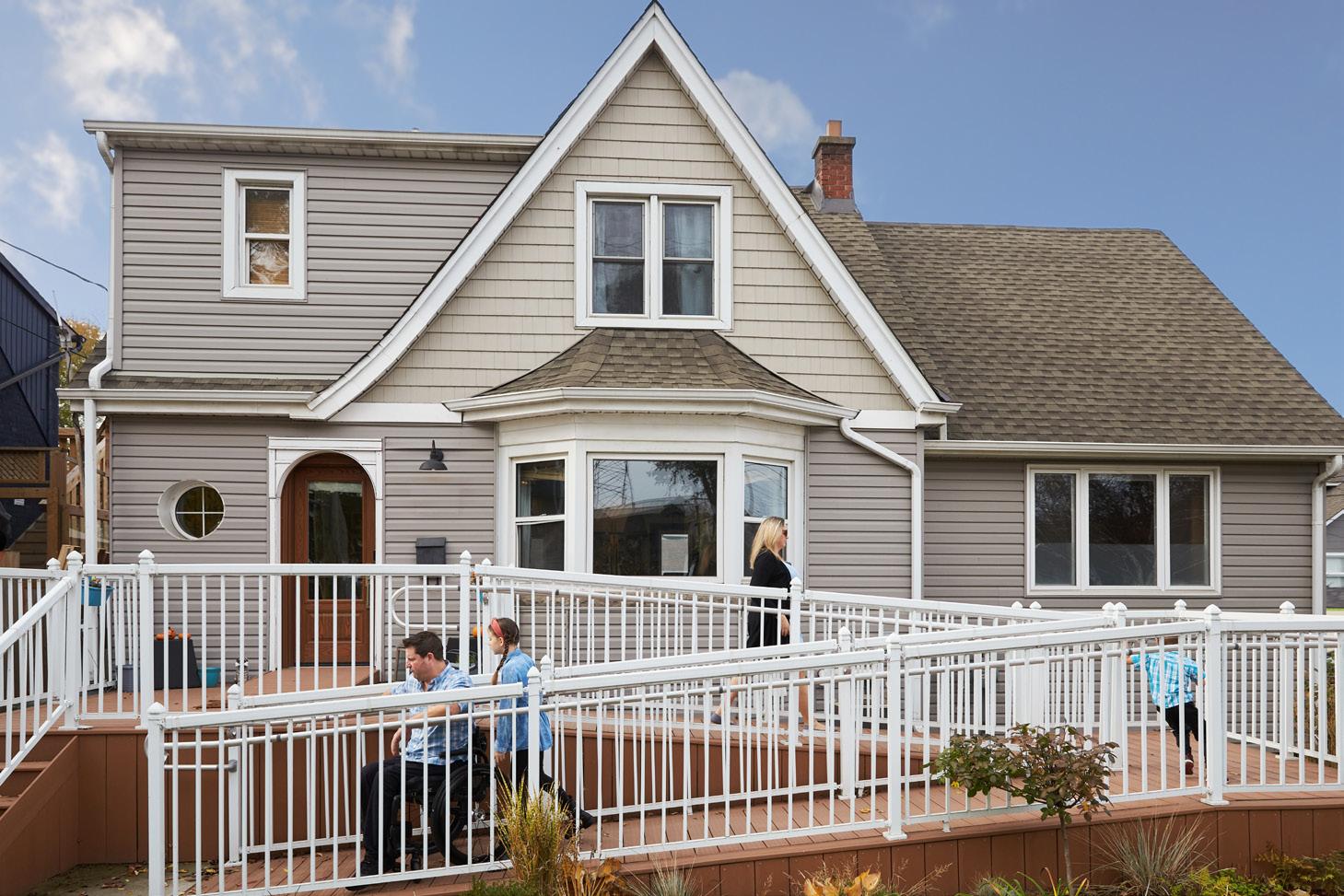
RETURNING TO WORK
Brian has been the production manager and technical director at the University of Toronto’s Hart House Theatre since 2010. He wasn’t able to return to his job until about 18 months after his accident.
Campbell lauds his employer for putting in everything he needed, including door assists and a new ramp into the building.
“And not just for me. But for overall accessibility and that’s a good thing for anyone coming to the theatre who might need it.”
Regardless of the accommodations, Brian has had to change the way he works.
“I can get into the theatre but I can’t get onto the stage and have a look with my eyes at things, so I have to rely a lot on my crew,” he says. “Before my accident, I was very hands-on. If I didn’t plan something up to its minutia, I knew in the back of my mind, I could jump in and do something. So, I’ve had to do more day-to-day planning in advance. I have to think about things very differently and do a lot more delegating.”
COMMUNITY SUPPORT
The Campbells moved into their new home in August 2019, but there were still structural limitations and physical barriers for Brian.
Denise Zammit, one of Claire’s friends, had heard HGTV was looking for families for a new TV home makeover show. She completed the application that got the Campbells
/continued on next page
FALL 2023 HCM 15
THE CAMPBELL’S BEACH BOULEVARD HOUSE INCLUDES A FULL RAMP TO THE FRONT DOOR.
selected. The TV crew was on-site doing measurements before the house deal even closed.
After two months of renovations, the Campbells moved back into their newly redesigned, renovated and fully accessible house in November 2019.
“Brian couldn’t go upstairs to say goodnight to the kids,” says Zammit. “But he can now. They had put in a track to get him up the stairs. They had to change all the doors. Nothing was suitable to allow him to go upstairs and do things with the kids. He was a family man. Those kids are everything to him. And the kitchen was reconstructed and completely redesigned.”
Brian uses the lowered cupboards with drop-down shelves in the kitchen all the time. “It was a game changer for me – for someone who likes to cook. Now everything I need is accessible, it’s all right there for me.”
Campbell is also a big golfer and after the accident, he figured he was never going to be able to play again. But someone he knew said Flamborough Hills Golf Club had a Solo Rider, a single-rider car that is designed to travel on any part of the golf course, including tees and greens, without damaging the turf. It has hand controls and a swivel seat. And thanks to some lessons, Campbell was able to relearn how to swing his clubs.
FUNDRAISING
The Campbells have received an outpouring of support from their community, friends and from people they’ve never met.
“Our friends and family came together and raised $25,000 to help us transition our lives. As for my outlook, I believe there’s still lots of good in this world, and all of this community outpouring and support really restores your faith in humanity.”
During their house renovations, the Campbells decided it was time to pay it forward and give back to the people and organizations that had done so much for them. And at the top of the list was Spinal Cord Injury Ontario (SCIO), which supports people with spinal cord injuries and their families in their transition back into the community. The organization provided air cushions for his hospital bed to relieve pressure sores, along with peer support and advice.
“They’re a great organization. They give so much help to people who have had these
MORE ONLINE:
the more knowledge you have, the better the quality of life. And that’s what it’s all about. Now Brian is paying it forward.”
hamiltoncitymagazine.ca
kinds of tragic accidents and injuries. Most people can’t afford the things they need to make their lives manageable, tolerable. They don’t have the health and medical benefits,” says Brian.
“Brian really exemplifies the spirit of our community,” says Dr. Stuart Howe, CEO of SCIO. “Brian and Claire are just a dynamic couple who really show what can be achieved and how you can live a very, very full life from a chair.”
Howe emphasizes that when it comes to this type of injury, knowledge is power.
“A spinal cord injury is really life-changing, a rollercoaster journey. We spend a lot of time on education and training for people with a spinal cord injury and their families and supporters. It’s very specialized. And

Brian organized a golf fundraiser for SCIO that raised about $20,000. Campbell also became a member of the SCIO southwestern executive committee. He wants to help others navigate a bureaucratic and complicated healthcare system.
“It’s not simple or straightforward. You can’t get anything done without help – trying to get things done on your own, just doesn’t happen, it’s nearly impossible. You need a physical therapist to sign off on certain things, you need an occupational therapist to sign off on other things, and if you don’t know this, it’s very difficult.”
The Campbells also participate in the Strides for the General 5K Run/Walk (now called Strides) at Hamilton’s Bayfront Park to raise money for new equipment.
“Rolling Thunder is our team,” says Brian. “We have 11 adults and seven kids on our team, including staff from the HHS rehab centre.”
/continued on page 54
16 HCM FALL 2023
/CITY LIFE
scan the qr code to see more photos as well as statistics about canadians living with disabilities.
THE CAMPBELL FAMILY ACROSS FROM THEIR HOME ON HAMILTON BEACH, FROM LEFT: CHARLIE, BRIAN, EMILY AND CLAIRE.
THIS CONTENT IS BROUGHT TO YOU BY THE INCITE FOUNDATION FOR THE ARTS
DECADES OF JAZZ AND ART
INCITE FOUNDATION FOR THE ARTS SUPPORTS THE CONTRIBUTIONS OF HAMILTON ALL STAR JAZZ BANDS AND HAMILTON ARTISTS INC.

The Incite Foundation for the Arts has contributed more than $6 million to 30 Hamilton-area organizations, through grants from $2,500 to $150,000, since it was founded in 2011. It is the legacy of the late Carl and Kate Turkstra who believed the arts are key to quality of life and critical to the future of Hamilton. And they believed anyone, regardless of circumstance, should be able to enjoy and pursue music, theatre and visual art.
HAMILTON CITY Magazine is showcasing the incredible, creative and talented recipients of Incite grants. Here we share the work of Hamilton All Star Jazz
HAMILTON ARTISTS INC.
Hamilton Artists Inc. (The Inc.) is a charitable, not-for-profit artist-run centre. It was founded in 1975, incorporated in 1979, and received charitable status in 1981. The Inc. offers an alternative to commercial spaces and established public galleries and museums.
We present local, national, and international exhibitions, workshops, artist talks, and professional development services. We provide our more than 300 members with an accessible and inclusive forum to address the social and professional needs of artists through workshops, lectures, and our dedicated Members’ Gallery.
HAMILTON ALL STAR JAZZ BANDS
2024 marks 40 years of producing great music for the Hamilton All Star Jazz Bands. Formed in 1984, HASJB Inc. is one of the premier community-based big band programs in Canada. Membership in three youth bands is open to student musicians aged 12 to 25 years. Since its inception, more than 1,500 young musicians have participated in HASJB programs. An adult band was introduced in 2022.
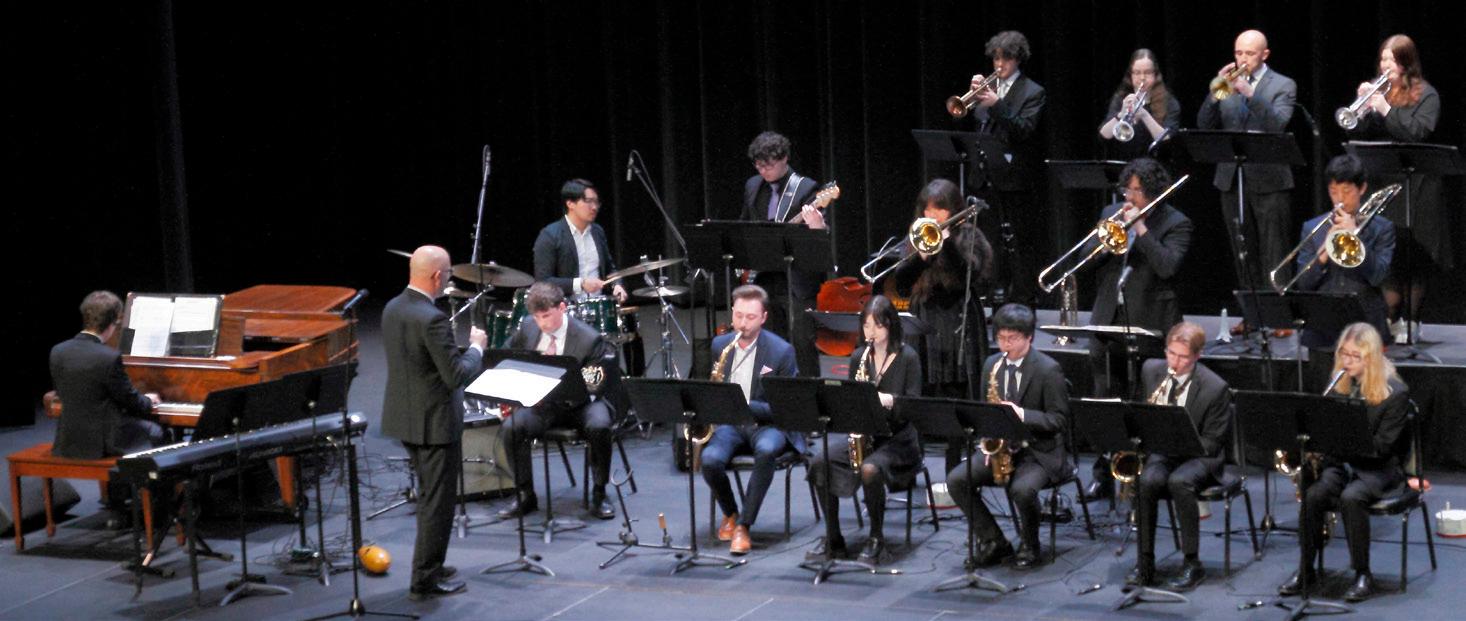
The band directors are accomplished and charismatic educators. Our youth bands have won countless gold awards for excellence at national competitions. The All Stars, the organization’s founding and premier ensemble, has performed before the prime minister, two governors-general, the lieutenant governor of Ontario and for Queen Elizabeth’s Golden Jubilee. The All Stars have toured Europe five times, released 10 CDs and has alumni who have been part of 55 JUNO
nominations and 12 wins. Two of our alumni are also Grammy Award winners.
“The Incite Foundation for the Arts has played a very important role in our success,” says founder and executive director Russ Weil. “Each year Incite has helped us to bring the very best professional Canadian jazz artists to work and perform with our student musicians. Known as our artist-in-residence program, each guest works with our young players in rehearsal, then performs a concert together with them, featuring their professional colleagues live on our studio stage. It is truly inspiring.”
As an artist-run centre, Hamilton Artists Inc. empowers artists to take risks with their contemporary visual arts practices and present their work in a critical context. We offer education and mentorship, facilitate regional and national dialogue, and encourage collaboration, conversation, and critical inquiry.
Our programs are free and open to everyone. Hamilton Artists Inc. aspires to identify and remove systemic barriers, and support artists and practices that reflect the people of our region. We aim to be a destination for critical, unconventional, and challenging art practices that contribute to regional and national discourses.
hamiltoncitymagazine.ca
Funding from Incite Foundation allows us to continue to prioritize artist-driven programming centring experimentation, artist agency, community and collaboration. This funding goes directly into the hands of artists in our community, and enables us to create meaningful artistic programming that seeks to address systemic hierarchies, and be accessible and inclusive. Hamilton Artists Inc. is incredibly thankful for the ongoing support we have received from Incite Foundation, and the opportunities for play and growth it has allowed us to support. n incitefoundation.ca
FALL 2023 HCM 17
Bands and Hamilton Artists Inc.
HAMILTON ALL STAR JAZZ BANDS, WHICH WILL CELEBRATE 40 YEARS IN 2024, USES INCITE FUNDING TO SUPPORT ITS ARTIST-IN-RESIDENCE PROGRAM.
PHOTO: SUPPLIED
scan the qr code to read more about incite and the legacy of carl and kate turkstra.
MORE ONLINE:

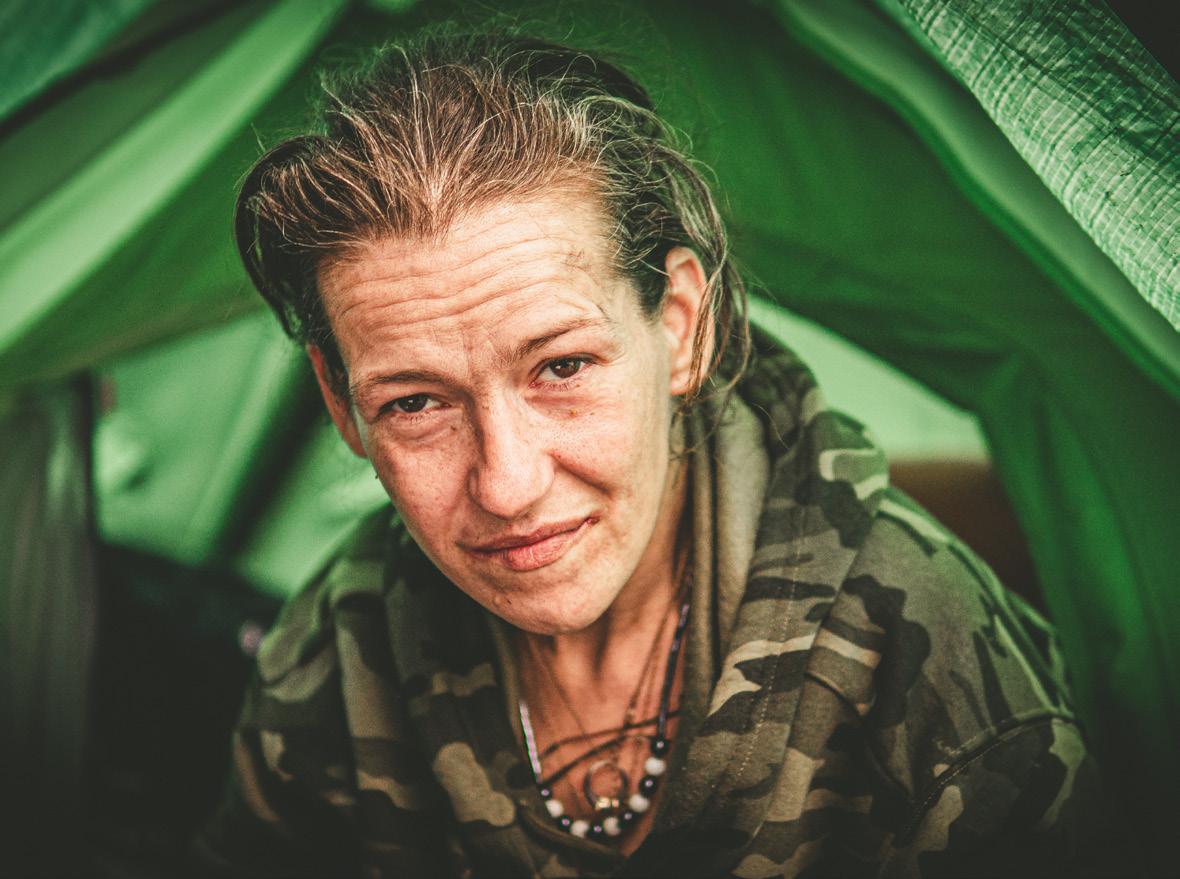




18 HCM FALL 2023 /CITY LIFE
FOCUSING ON HUMANITY
HUMAN BEINGS OF HAMILTON SHINES A POWERFUL SPOTLIGHT ON THOSE LIVING ON THE STREETS OF THE CITY. THE MAN BEHIND THE FACEBOOK PAGE HAS WALKED THAT ROAD HIMSELF.
By KATHRYN DUNMORE | Photos By JACK SOULE
Human Beings of Hamilton started as a Facebook page, sharing photography taken over the past decade that showcases the reality for those living on the streets of Hamilton. It swiftly became a movement fuelled by generosity and community.
In March, a man posted his stunning photography, under the penname Jack Soule, on a page he called Human Beings of Hamilton. It artfully and accurately displays life for the homeless. But what he is doing –his mission if you will – captured the hearts of the many people affected by addiction and mental illness in their families – and even those who aren’t.
His mission is simply one of humanity and connection.
What he was doing quickly spread among the streets of Hamilton. You could walk into a Starbucks and hear staff talking about the efforts of the people running Human Beings of Hamilton. But it’s only one man; a man who keeps himself anonymous to keep attention from himself for his own reasons.
“There are so many reasons,” he says in an interview, “I’ve seen people harassed in other cities for similar efforts … I also feel that by being free from self-display, people can trust me, and (know) that this project isn’t just some virtue signal. As an artist, it’s my job to learn the rules like a pro, so I can break them like an artist.”
His critics say he doesn’t get permission for his pictures. But he does in most cases, providing money to his subjects and explaining his project and how the photos will be used.
“There are, however, some of which I can’t obtain permission for, that I feel are important to take. For instance, if a person is nodding out in a highly public
place, like a busy intersection, or out front of a public establishment such as Tim Hortons. In these cases, I feel the historical value outweighs the moral question of consent. It’s good to remember that, as a Canadian, we have freedom of expression. This includes the right to take and publish photographs in a public space, as well as private spaces that are open to the public,” he says.
“Some say I am just virtue signalling. I feel these people don’t understand the point of the project, which is to put a face, name, and voice to our homeless population. It’s to make people realize how easily this could happen to them.”
Soule pays each person he has photographed. He takes them for meals, he treats them as friends, often sitting beside them as they tell their stories of how they got to the point of living on the streets.
He often contemplates how the work he’s doing today will impact the future.
“I think the true artist doesn’t really care so much about how they are perceived today. We do it because we want to leave something behind that says I was here. Already, it’s a nice feeling knowing that if I died tomorrow, I would leave some legacy in the hearts and minds of some people at least. One that will hopefully inspire them to carry on this work in some way.”
Soule has an unassuming presence, wearing casual cargo shorts with a plain grey T-shirt. In his 40s, he blends in and seamlessly slips into any group of homeless people or conversations on the street where he can help. He has a calm demeanour that likely comes from reading and reflecting on himself for decades now.. He doesn’t own a television and hasn’t for 20 years. He gains information through life.
/continued on next page
FALL 2023 HCM 19
MY STORY
I was one of the family members looking for a loved one’s face among the photos posted on Human Beings of Hamilton. I was first drawn into the art then saw others commenting that they recognized their loved ones in his photos, so I started searching the Facebook page for my little sister. But my sister wasn’t there; she isn’t here either as she died from opioid poisoning in 2020. Every day, there are apparently 22 families in Canada who are delivered the news that a loved one has died, often on the streets. It was a foundational loss for us, especially my sister’s six-year-old son.
Hers is a common tale. She had back surgery in late 2017 and was prescribed opioids for the pain. By April 2020, she was gone. We watched her die. The addiction took her dignity, her willpower and her strength. There were times she valiantly fought back, seeking treatment and counselling, but while waiting, addiction would drag her back down time and again until she succumbed to it.
She never sought to feel high, she once told me, but to escape the pain and overwhelmingly negative feelings. She died while on a waitlist for a rehab placement –there are too many people in need of them and not enough spaces to help everyone.
Those on the street are someone’s son, daughter, brother, sister, nephew, niece, grandchild, mother, father – and each one of them do not want to be there.
My sister fought so hard but her life was cut short. There is no more hope for my family. My hope now is for families affected by addiction – and clearly there are so many of us – to heal or at least start the healing process
The root problems that make opioids an epidemic must be addressed by all of us, especially those in charge. I hope that won’t come too late for your family.
–Kathryn Dunmore
Also, Jack was once an addict, so he knows many of those currently eking out an existence on the city’s streets – many others have passed on due to their illnesses and addictions. Now, more than a decade later, he is sober, working and living in Hamilton. Still, he says, he has an understanding that many don’t, not even those working in the organizations who seek to help this population.
He can relate as he was once them. He doesn’t judge and only works to help them. With his guidance, some have also sobered up and moved from the streets to homes and jobs. It’s a huge, neverending job because Hamilton draws many people from other cities looking for help. The need has quickly and exponentially outgrown the resources.

Much of the crisis is driven by the opioid epidemic that is sweeping through North America and affecting anyone of any age (but especially young men in skilled trades as they seek treatment for physical ailments from the job). In Canada, currently, 22 Canadians die a day from opioid poisoning.
“I was seeing the opiate crisis brewing 10 years ago, and the very young street kids shooting up in downtown Hamilton,” says Soule. “It shook me to my core, and that’s when I started doing something about it, besides just taking pictures. My efforts were aimed at inspiring their creativity, such as studio time for young musicians, buying instruments and taking them out on birthdays for dinner and clothing. My subjects tell me all the time that more than the money, items and food I give, it’s my time and just listening and sharing experiences
that they value most.”
The Human Beings of Hamilton Facebook page has skyrocketed in popularity. Within the first month, he had thousands of followers, many of them with loved ones on the street who were looking for them in his photography, just to confirm they were still alive, or wanting to connect with them. So, he often relays messages. People write in to say how much it meant to be able to see their loved ones in his work.
“Most families out there are so grateful for even the pictures, let alone the items we provide,” he says. “The work we do here screams ‘I’m still alive’ to friends and family who’ve lost touch with their loved ones. That’s why I keep plodding along this path. All the while, being cheered on by my friends on the street, who’ve never showed me anything but love and respect.”
Beyond his photography, it’s also his words, the individual stories of the people he includes with his photos. They give insight to how people ended up living on the streets. They show how a little help goes a long way, but more so, they highlight compassion, for as we read these stories, it’s a lot more understandable as to how the situation came to be. But, at the same time, it’s a little less understandable as to how it can continue.
Alison French’s best friend told her about Human Beings of Hamilton in the hopes it could lead to finding out about French’s son, who stuggles with addiction and lives in Hamilton.
“I began following the page the day Ryan, my 28-year-old son, was profiled. I wept
20 HCM FALL 2023
/CITY LIFE
THE PURPOSE OF HUMAN BEINGS OF HAMILTON IS TO SHINE A LIGHT – THROUGH A LENS OF COMPASSION – ON THOSE WHO ARE OFTEN SIMPLY OVERLOOKED.
reading it. Both happy and sad tears. Sad, well, because he suffers from addiction and is homeless, but so hopeful to hear that the man I raised is still in there somewhere and his true personality came out during his interview. This page has meant the world to me,” says French, who lives a few hours away from Hamilton.
“The message I wanted to get to Ryan was relayed and I received the most amazing gift of another picture of Ryan. Given his circumstances, I am unable to communicate with him, which is by far the hardest part of being the parent of an addict. HBOH shows these lost souls in a very honest and unique light and reminds us all that, regardless of their circumstances and why they are homeless, they are human and deserve to be treated as such.”
It wasn’t long after he set up HBOH that Soule had readers requesting to help, sending tents and sleeping bags to him to deliver to his friends on the streets. It came about when he posted that a tent donated by a family to someone on the street was stolen, so he asked the community if he could get another one.
There were so many offers, he organized a space in Hamilton, The Hub, where people could drop off donations. Then, to make it even easier for donors, he started accepting purchases of tents and sleeping bags through his local Canadian Tire. He anonymously picks them up to deliver directly. Everyone who received a tent was so appreciative for some shelter from the spring rains and summer storms, he soon jokingly called himself Tentman.
He did become a superhero to many.
As of this writing, he has delivered approaching 150 (and still going) tents, plus sleeping bags, tarps, even solar panels. Soon he had community organizations reaching out to him, along with bigger donors. A local man, who was in the liquidation industry, was so inspired by the page that he connected with a business partner out west who ended up donating 48 tents, shipped (delivery fee covered) from British Columbia.
Matt has been living on the street for almost three years and has also battled addiction. With the help of HBOH (who worked behind the scenes to help him during this time) and his mother who connected through the page, he started a detox program towards a sober life.
“I remember the first time I met Jack, it
was late in the evening and myself and six or seven others were congregating on the corner of Dundurn and Main,” says Matt. “Jack walked up and asked each of us how we were doing, then proceeded to buy everyone there something from Tim Hortons. He took extra care to ensure that everyone got exactly what they wanted. When you’re on the street that’s huge, as you’re typically treated as cattle. Jack made sure we were treated as individuals.”
Jack bought so much he needed someone to help him carry it all back.
“He continued to treat me as human being, helping me and my spouse with a tent and sleeping bags, and then advocating on my behalf to get me a bed at a men’s detox in Hamilton where I started my road to recovery. He still regularly checks in to encourage me, and congratulates me on my accomplishments, which has helped me to get to this point of being a month sober and starting treatment in a week. He is a great advocate for those of us struggling with homelessness, mental issues, and addiction. Thank you, Jack, for all of your help. You have been the hand that lifted me up from the ground when I thought I was all alone.”
(As an update, Matt has completed detox and has since moved into treatment.)
“I heard about Jack from friends on the street,” says Lilly, who has lived on the street for four years due to family issues. “When I finally met him, it was the first heatwave of the year, and he bought me food and gave me a tent and sleeping bag, which I desperately needed and was thankful for. Human Beings of Hamilton is exactly what we needed to humanize those living on the margins of society. The homeless community has Jack’s back and is thankful for all he does.”
His profiles of those living on the streets touched many – even leading to job offers for some of those profiled.
Readers write in to express how the page is affecting their daily lives:
“I just wanted to share that I’ve been following you (Human Beings of Hamilton) for a week or two,” wrote one reader. “Since starting, I have had a shift in how I see others around me. Today I found a lady sleeping on my workplace’s front lawn. I immediately connected with some colleagues and went out to offer her a submarine sandwich, a blanket and then see if we could help. She said she was trying to get to Toronto and that
she didn’t have anyone to call and didn’t want to go to a shelter. I asked if she needed a tent (and) right away she said, ‘Yes, that would be great!’ So I left to Walmart and grabbed one … I would never have dealt with this situation like that in the past. Thank you for your work. It really is making a difference in reminding us of each other’s humanity.”
His page continues to make connections between families and loved ones lost for years to the streets. In July, George, a man in his 70s who lives in Cornwall, saw his son Shawn in one of the pictures and reached out to HBOH. Soon, the two were connected and Shawn made the trip to Cornwall to visit his dying father – a connection George has wanted for decades.
Within three months, the page amassed 5,000 followers and it continues to grow each day. As of mid-August, HBOH has about 8,500 followers, more than St. Patrick’s Church, which has probably done the most outreach to people who are homeless in recent years, says Soule.
As he tells his readers: “This is so much more than a Facebook page, it’s a movement. And you’re just as big a part of this as me. I would not be here today without you reacting, commenting, sharing and sending your love and well wishes. You’ve lifted me back up (when) the critics get the best of me time and time again. And you’ve donated so many items so far, I’ve seen how they light up the eyes and lives of our friends on the street.”
Ultimately, Soule hopes this page will motivate others to help those around them.
“The point of this is to inspire others to have compassion, to help your corner of the universe while I work to inspire my corner,” says Soule, holding a rolled-up sleeping bag.
Our conversation ends and I watch him walk across a big intersection in downtown Hamilton, right into a group of homeless young adults, introducing himself (likely unnecessarily) and holding up the sleeping bag in offering.
Those in his corner are grateful. n scan the qr code to view many more powerful photos & stories from human beings of hamilton.
MORE ONLINE:
hamiltoncitymagazine.ca
FALL 2023 HCM 21
NOT TO BE MISSED
STAYING MUM
Since it first sprouted in 1920, Hamilton’s Fall Garden and Mum Show has grown into a must-see event for those who know their way around a garden centre. While the event is a celebration of horticulture in general, the riotously vibrant chrysanthemums are the true stars of the show, providing dramatic swathes of colour throughout the Gage Park Tropical Greenhouse. In addition to workshops and seminars, each year the show’s featured blooms – more than 100,000 of them – are creatively styled to fit a different theme, and this fall things are getting downright medieval. Visit the website for tickets and more information. Oct. 20-29, Gage Park, hamilton.ca
HALLOWEEN FUN FAIR
Do some Halloween pre-gaming during the third annual Halloween Fun Fair at the Dundas Driving Park. Activities at the free event include broomstick racing – whether on land or in air is TBD – along with crafts where participants are invited to make a mummy of their own. Food trucks and local vendors will offer snack and retail therapy. A highlight of the free family-focused afternoon event will be the costume contest where the kids can show off their trick-or-treating outfits in daylight for a change. Oct. 14, 11 a.m. to 4 p.m., Dundas Driving Park
FALLING FOR THE FAIRS

GREAT PUMPKINS!

After selling out in 2022, the Great Pumpkin Trail returns to Hendrie Park at Royal Botanical Gardens – a 1.5-km rambling walk through the park, the path beautifully illuminated by the flickering glow of hundreds of jack-o-lanterns. More magical than spooky, the timed-ticketed evening offers visitors live entertainment, interpretive displays, and campfire pit stops along the way, along with the relief that comes from knowing that they didn’t have to carve all those pumpkins themselves. Visit the website for full details and tickets. Oct. 20-22 and 27-29 rbg.ca
PET-TY FUN
Ancaster’s Triple C Farm is a spot quite like no other – an idyllic patch of country heaven that offers sanctuary to a literal menagerie of farm animals. Commune with nature while getting in your furry fix by scheduling a visit to the farm’s petting zoo, and just try to not fall in love with at least one of their charges who, by the way, cannot go home with you. Feeling flexible? Check out the farm’s website for other memorable offerings including animal walks, horseback rides and – no kidding around – goat yoga. Visit the website for full details and to register. triplecfarm.ca
A sparkling midway on a warm fall evening, the sweet smell of cotton candy dancing in the air, the cacophonic din of the game stalls, there is something so uniquely nostalgic and comforting about hitting a local fall fair that it takes the sting out of the back-to-school grind. The Hamilton region’s fall fair scene is as rich as its agricultural landscape with multiple events to choose from, each continuing to offer its unique flavour since nearly the dawn of time. The youngest of the bunch –Binbrook – is celebrating its 170th year. Fried food, midways and live performances are a given of course, as are the lucky folks trying to figure out how to navigate the aisles with that oversized plush they tried so desperately to win, but each of our fairs has a unique draw. We encourage you to take them all in. Meet some cows, pet some sheep and support the agricultural societies that support the local farmers who work tirelessly to help feed our families. Besides, those corn dogs aren’t going to eat themselves. Binbrook Fair Sept. 15-17, binbrookfair.org; Ancaster Fair Sept. 21-24, ancasterfair.ca; Rockton World’s Fair Oct. 6-9, rocktonworldsfair.com
22 HCM FALL 2023
Fall is a gorgeous time to get out and enjoy what the city and region have to offer. With that in mind, here are a few of our favourite local happenings.
scan the qr code Make our t hings to d o section your go-to destination for city life and arts and culture events listings! ha M iltoncity M agazine.ca /CITY LIFE EVENTS
LIFE IN THE CITY
From festivals and films to galas, galleries and gigs, Hamiltonians love to have a good time and these photos are definitely worth a thousand words. HAMILTON CITY Magazine was there – were you?

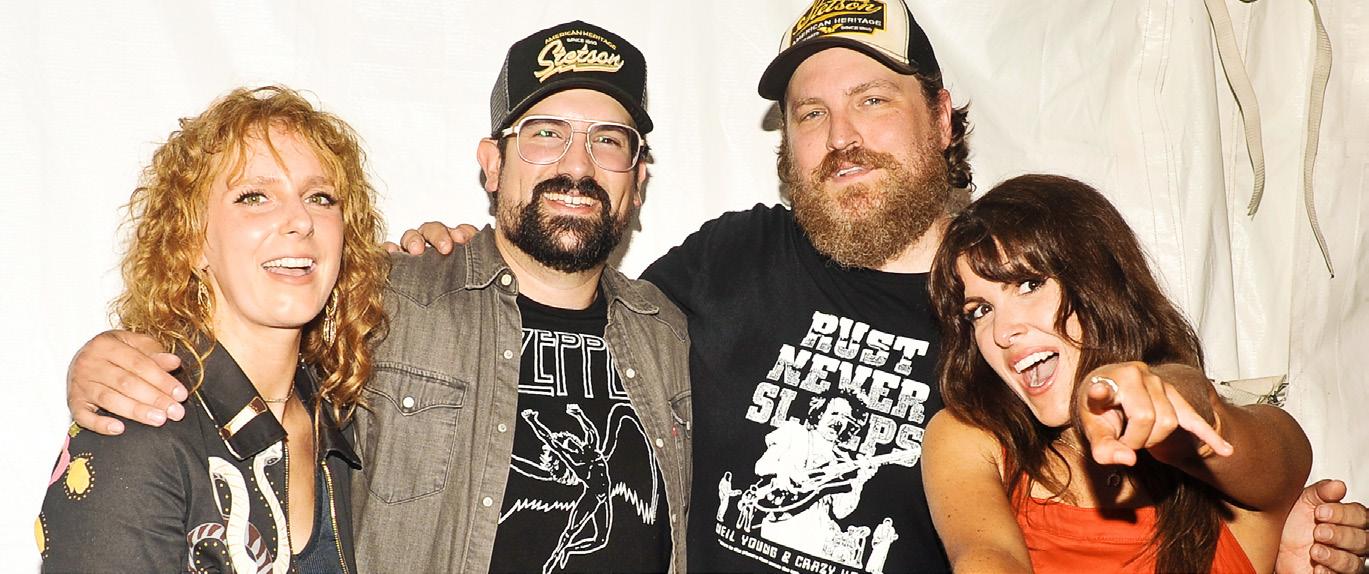
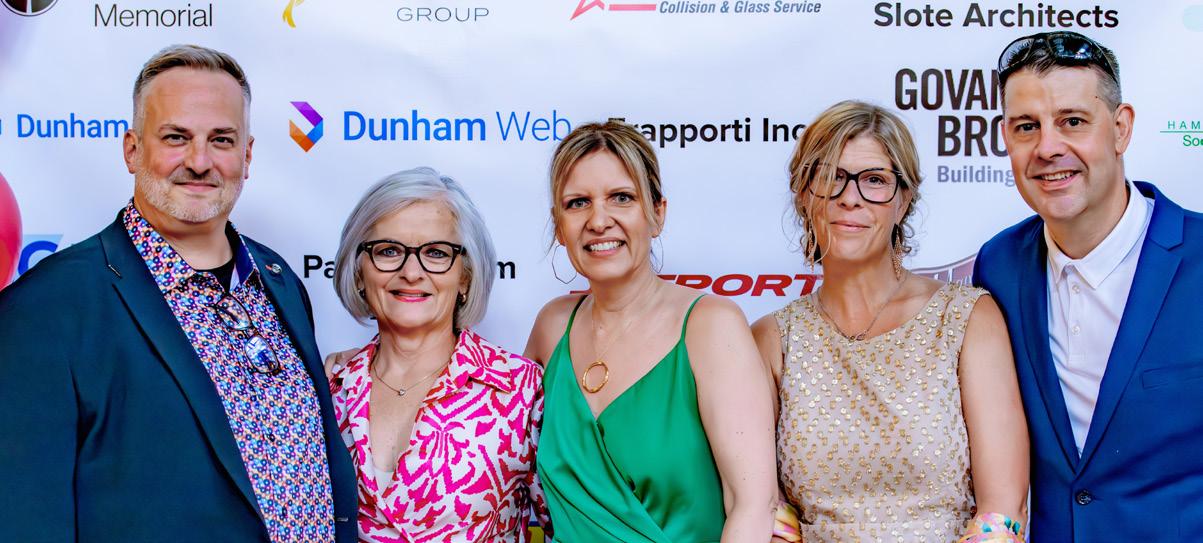
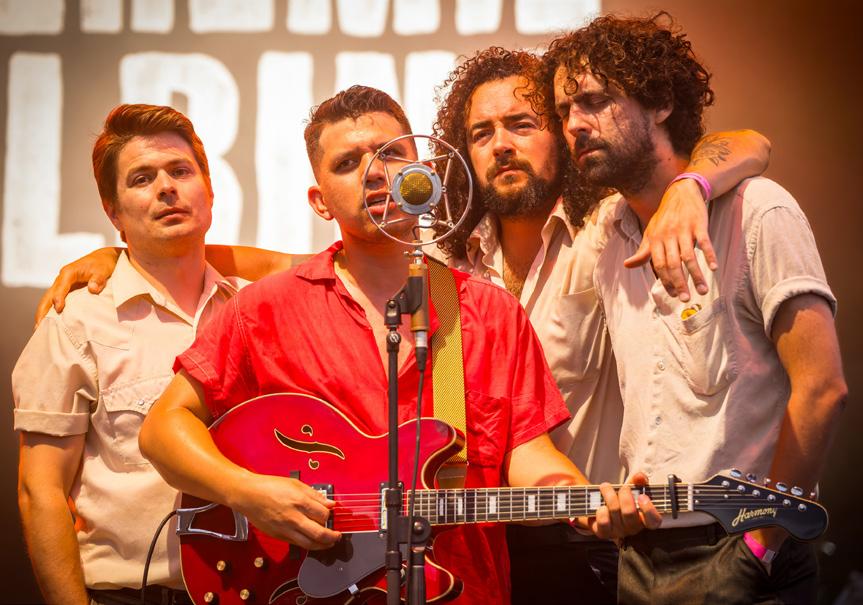

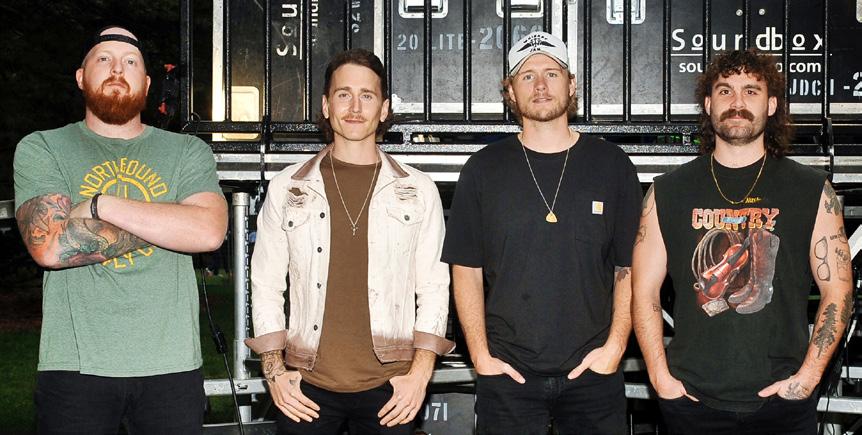
Performers at the Festival of Friends, Aug. 4-6 in Gage Park, included:

To check ou T more phoTos, scan T he qr code

FALL 2023 HCM 23
photos By B rent perniac, Donna Waxman an D Gary Green
1. Doug Mattina, Janice Shearer, Danielle Millar, Suzanne Conroy and Brent Perniac at the Imagine Summer Gala of the Rotary Club of Hamilton AM, Aug. 11. Proceeds went to Keaton’s House, a pediatric hospice project of Dr. Bob Kemp Hospice.
2. Anthony Paikin, Ben Curtis, Jeffrey Paikin at the Ben Curtis tournament at Hamilton Golf and Country Club, Aug. 10.
3. Canadian singer-songwriter Jully Black was the headliner at It’s Your Festival, July 2.
4. Hamilton’s roots-country-rock band The Redhill Valleys; 5. Americana-folk artist Jeremie Albino
1 3 5 8 6 7 2 4
6. Canadian country group James Barker Band 7. Hamilton’s Melissa Marchese, (one of our cover stars in July!) 8. Jon Harvey of Hamilton rock band Monster Truck.





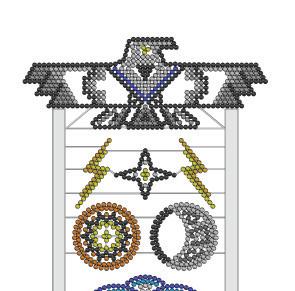
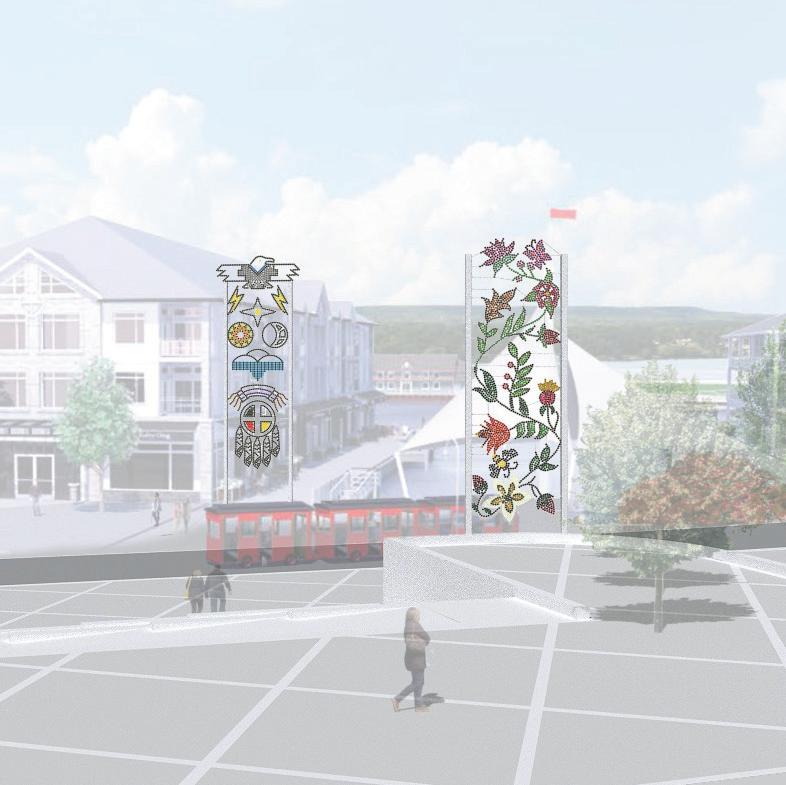
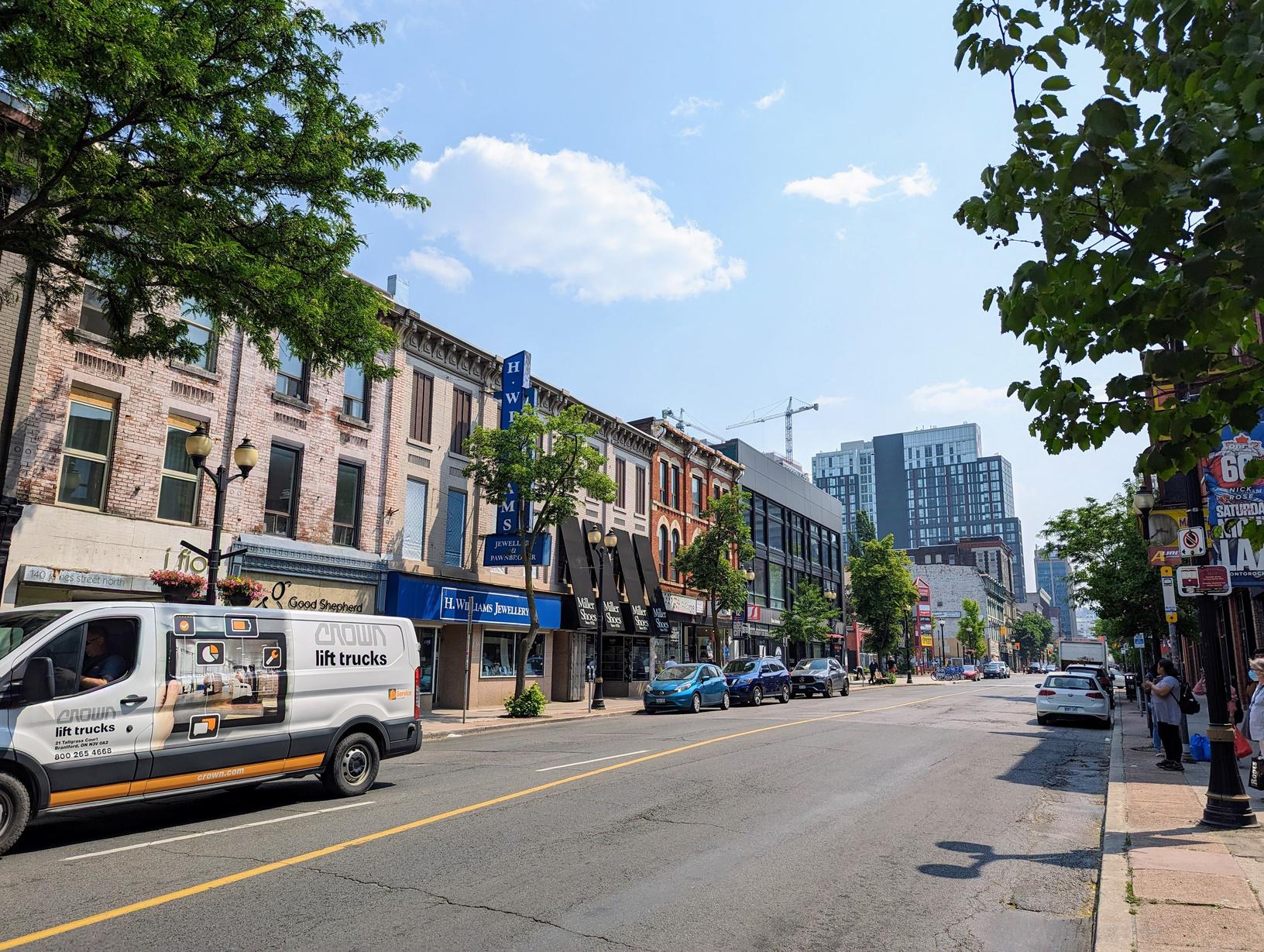
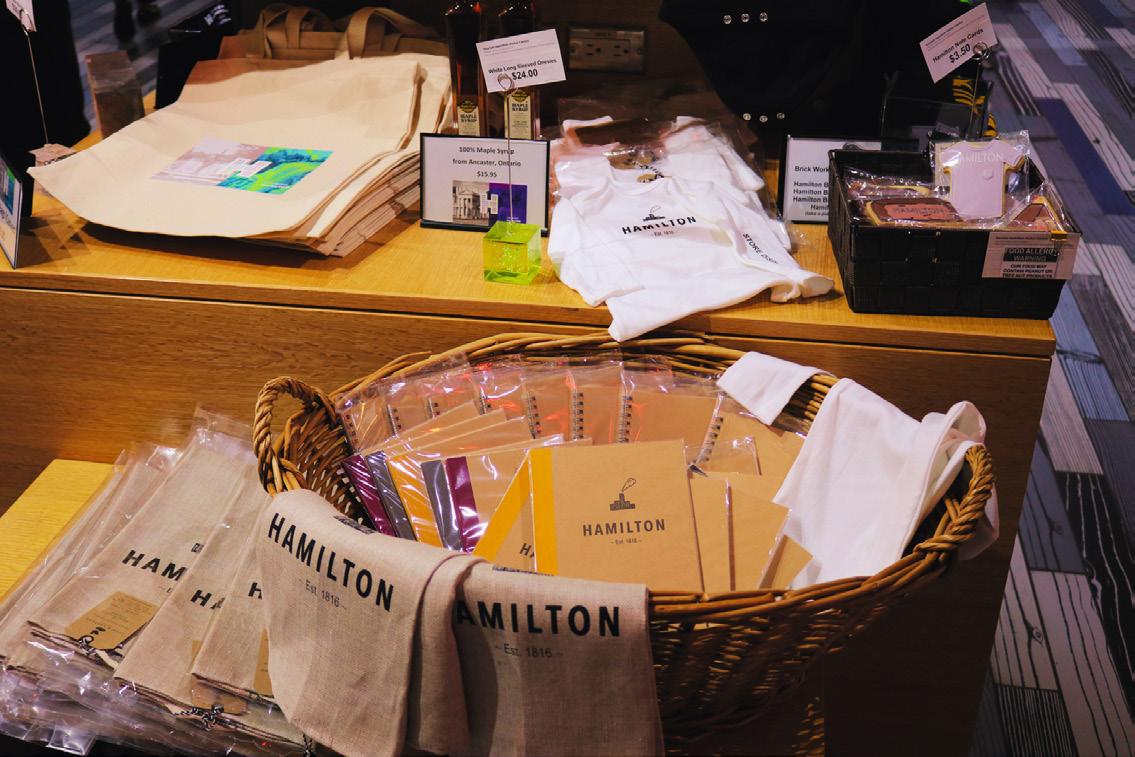

JOIN US for a Public Art Ceremony Saturday September 30 10:30am to 4pm West Harbour – James Street Plaza at the foot of James Street North (North of Guise Street) Featuring a new work of Public Art All Our Relations by Angela DeMontigny leading artist team Cobalt Connects, Paull Rodrigues and LaFontaine IronWerks. URBAN INDIGENOUS Hamilton STRATEGY hamilton.ca/IndigenousRecognition YOU POP-UP
WE PUT DOWN SOME BUCKS Did you know there’s money available to help you achieve your pop-up retail dream? FOR MORE INFORMATION investinhamilton.ca/incentives
A BIZ
Finding life’s ‘moments’ through art
ARTFUL MOMENTS WAS DEVELOPED IN HAMILTON FOR LATE-STAGE DEMENTIA PATIENTS. IT’S NOW SERVING AS A TEMPLATE BEING USED ACROSS THE COUNTRY.
The Art Gallery of Hamilton’s Artful Moments has been providing art experiences to people with dementia for 14 years. Now, it is being shared as a template for other galleries and museums across the country.
Artful Moments began through a partnership with St. Peter’s Hospital when the behavioural health unit formed a patient focus group to choose art to purchase.
Over the course of a couple of months, AGH staff took in 40 to 50 pieces and led discussions about each. One day, a woman who didn’t engage verbally anymore shared a memory triggered by a painting of the Gage Park fountain.
“That was the spark for all of this,” says Laurie KilgourWalsh, wellness lead at AGH.
Staff at AGH and St. Peter’s collaborated, found funding and launched a pilot program in 2009 in which participants, along with caregivers, studied and discussed art and completed a guided art activity.
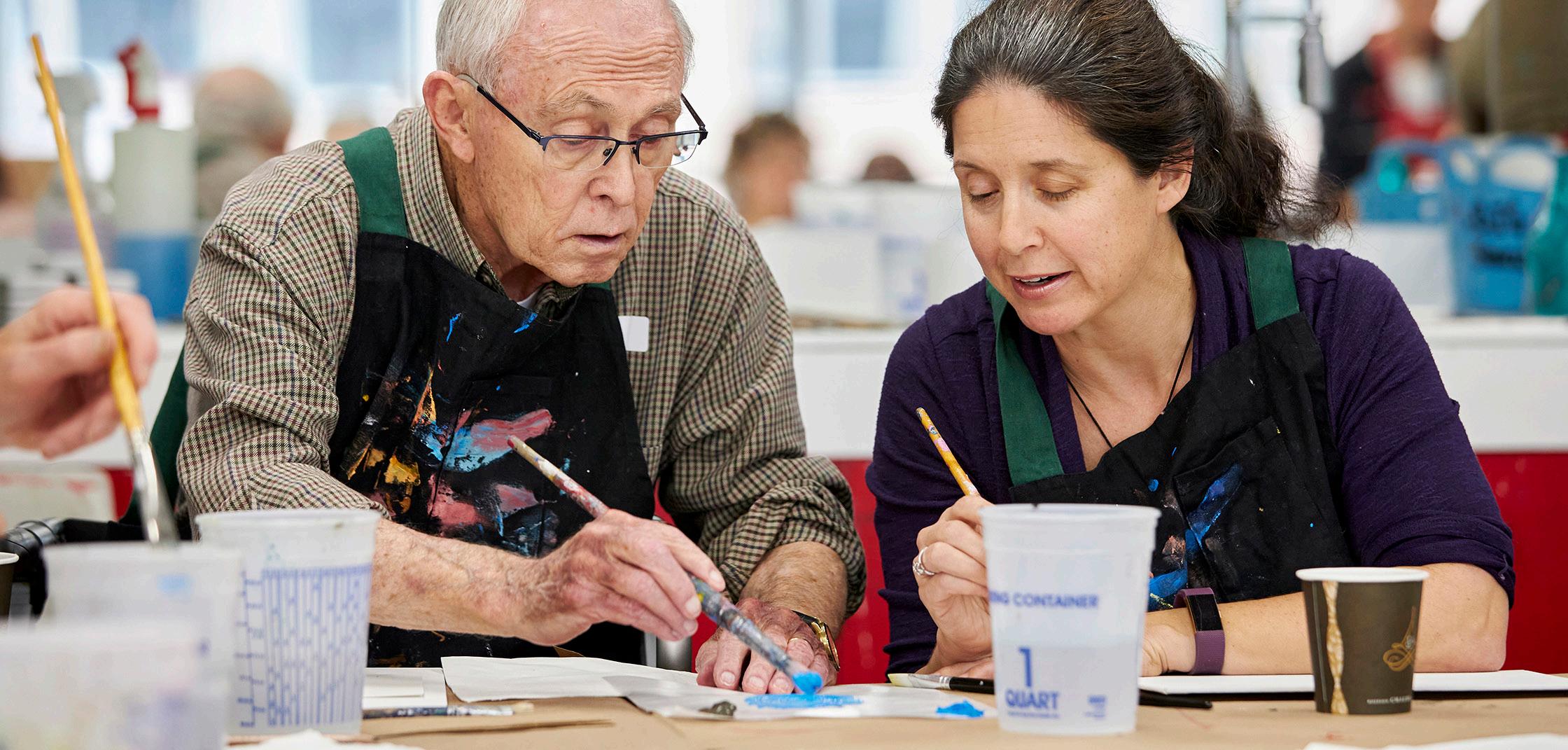
“With the hands-on art activities, it was important that people could feel successful. Every one of them painted. Every time,” she says.
Between 400 and 500 people have taken part.
“It’s not about targeting a cure or permanent change
but about making a difference in that moment,” says Janis Humphrey, the now-retired lead of the dementia unit at St. Peter’s. She was repeatedly touched by the memories the art evoked and the laughter and conversations that happened.
“People look so forward to the program. They research the art and artists for the week and come in ready to talk about it in a deep way.”
The program was expanded to those with dementia living in the community and at long-term care homes, along with those with mental illness, brain injury and autism, as well as isolated seniors, youth, and women at risk.
But it was during the pause of COVID that the team behind Artful Moments decided to build a virtual program for its participants that could be replicated by other institutions. The team spent 18 months building a website with 90 videos, training modules and learning materials.
Now, Artful Moments at AGH is a mixture of in-person and conference call meetings. Participants are provided a binder with weekly materials, as well as an art supplies kit and a sketchbook. The fall session of Artful Moments begins Sept. 26. Registration is required by Sept. 17. n artgalleryofhamilton.com/learn/wellness
FALL 2023 HCM 25
MADE IN HAMILTON IS SPONSORED BY CITY OF HAMILTON ECONOMIC DEVELOPMENT INVEST IN HAMILTON
SHANNON STANNERS, A SPEECH-LANGUAGE PATHOLOGIST AT ST. PETER’S, ACCOMPANIES HER FATHER-IN-LAW IAN TO ARTFUL MOMENTS. HE DOESN’T REMEMBER THE SESSIONS BUT HE ‘SHINES’ WHILE HE’S THERE, SHE SAYS.
PHOTO: JULES LEE
GETTING TO
By EUGENE ELLMEN | Photos By LORRY CUMMING FOR HCM
Hamilton’s downtown, long marked by abandoned storefronts and empty streets, is undergoing a rapid transformation. Construction cranes now dot the city’s skyline, reflecting a surge in residential development.
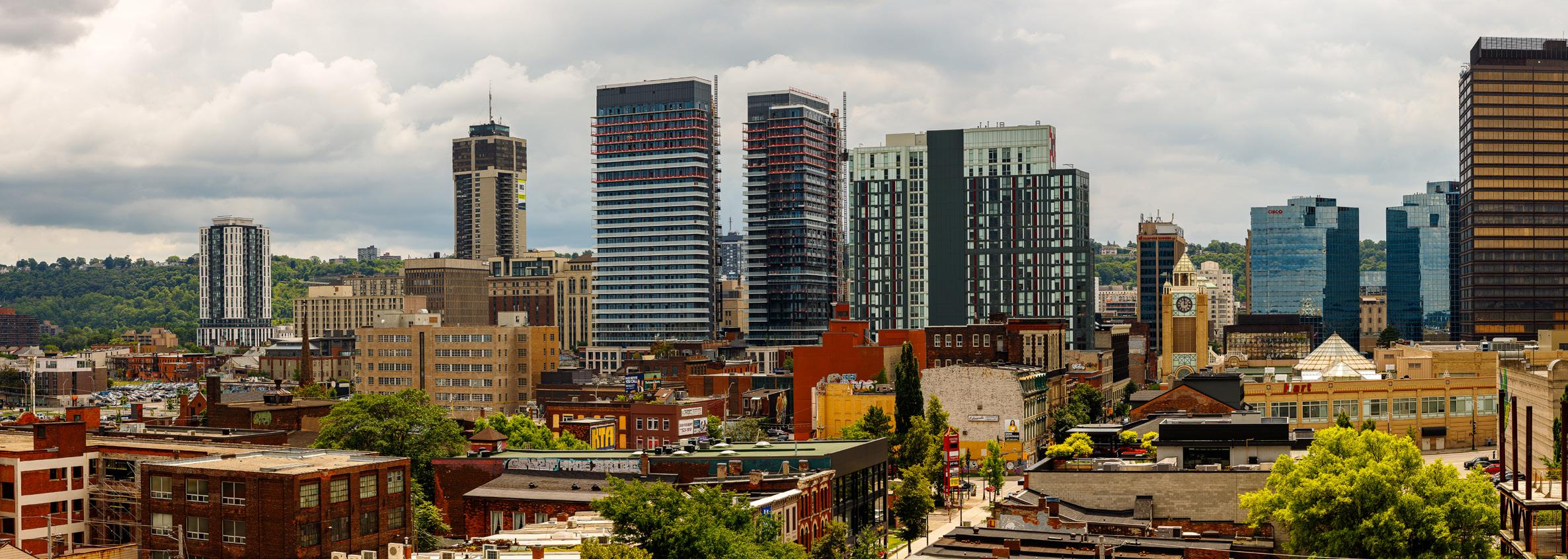
This will bring thousands of new residents to the core, creating jobs and economic opportunities while changing the culture and life of Hamilton’s downtown. But it will also create new pressure on the City to address the needs of its large vulnerable population, a situation made dramatically worse by the recent pandemic.
“We’re likely to have a whole lot more people living and shopping and eating and recreating in and around the downtown and that, inevitably, is a good thing,” says Terry Cooke, CEO of the Hamilton Community Foundation. He has been deeply engaged in the life of the city through philanthropy, politics, and business since the 1990s.
But his optimism is tempered by the
realities of Hamilton’s growing street population.
“If the encampment, homelessness, addictions and mental health situation continues to worsen, and we don’t have an intentional plan to find dignified supportive housing for our most vulnerable, that will inevitably undermine the renewal and sense of safety, security and vibrancy. We’ve got to pay attention to that.”
THOUSANDS ARE COMING
The transformation is being led by a flood of residential high-rise construction in the downtown, defined in the city’s official development plan as bounded by Queen, Hunter, Victoria and Cannon streets, with narrow extensions along James to Charlton in the south and Stuart in the north. About 4,000 new residential units have been added or are under construction in this area since 2017, according to the City of Hamilton’s economic development department. An
additional 5,500 units are approved but have not yet broken ground, and 2,700 units are proposed, for a total of 12,200 units (including some units completed since 2017).
With an expected occupancy average of between 1.5 and about two people per unit, that means that 18,000 to more than 24,000 additional residents are expected to live in the core, increasing downtown Ward 2’s population from 37,000 in 2021 to up to 58,000 in coming years.
Some of the large projects already underway include the Cobalt Residences, two 30-storey towers nearing completion at King and Hughson; another 30-storey tower at King and Bay that will house a new McMaster graduate students residence; a 34-storey condo at 75 James St. S. and the 32-storey Television City project which has just broken ground at the former CHCH studios at 163 Jackson St. Over 2,300 units will be added with these projects alone.
This flood of new residents will more
26 HCM FALL 2023
/MADE IN HAMILTON
THOUSANDS MORE PEOPLE WILL BE LIVING IN HAMILTON’S DOWNTOWN IN THE COMING YEARS. THIS WILL CHANGE HOW DOWNTOWNERS LIVE, WORK AND PLAY.
THE CORE
than make up for the decline in downtown office workers caused by increased remote work arrangements since the pandemic. Experts estimate foot traffic in Canadian cities is down about 20 per cent from before the pandemic. In Hamilton, which has an estimated 26,000 downtown office workers, this could mean as many as 5,200 fewer people in the core on any given workday.
Reports from some businesses suggest the decline in Hamilton is even steeper, with vendors at Jackson Square and the Hamilton Farmers’ Market complaining of slow weekday business.
In a recent article for Bloomberg, urban researcher Richard Florida, a professor at the University of Toronto School of Cities, said this is part of a larger trend in which central business districts “are the last vestige of the industrial age’s packing and stacking of knowledge workers.”
In an interview, Florida said this decline should not be a serious long-term problem for cities – like Hamilton – that are rebuilding their downtowns.
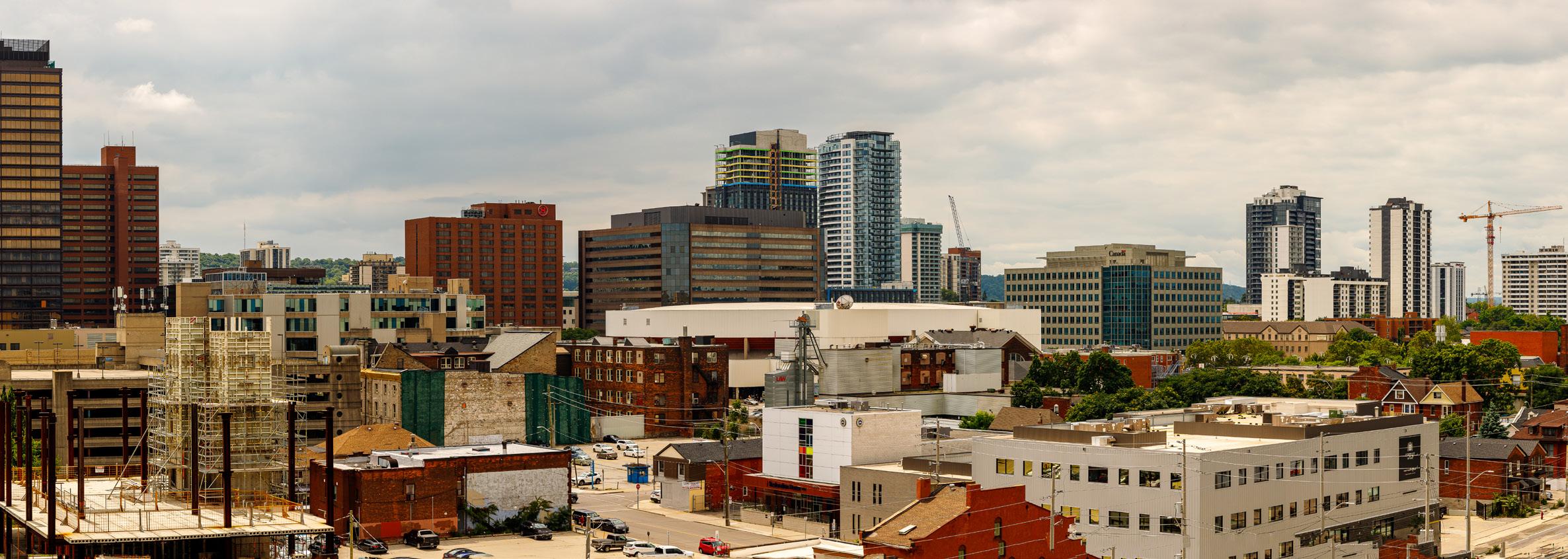
Young workers with the freedom to work from home will increasingly choose to live in downtown neighbourhoods because of their amenities, he said.
“They work from a café. Sometimes /continued on next page
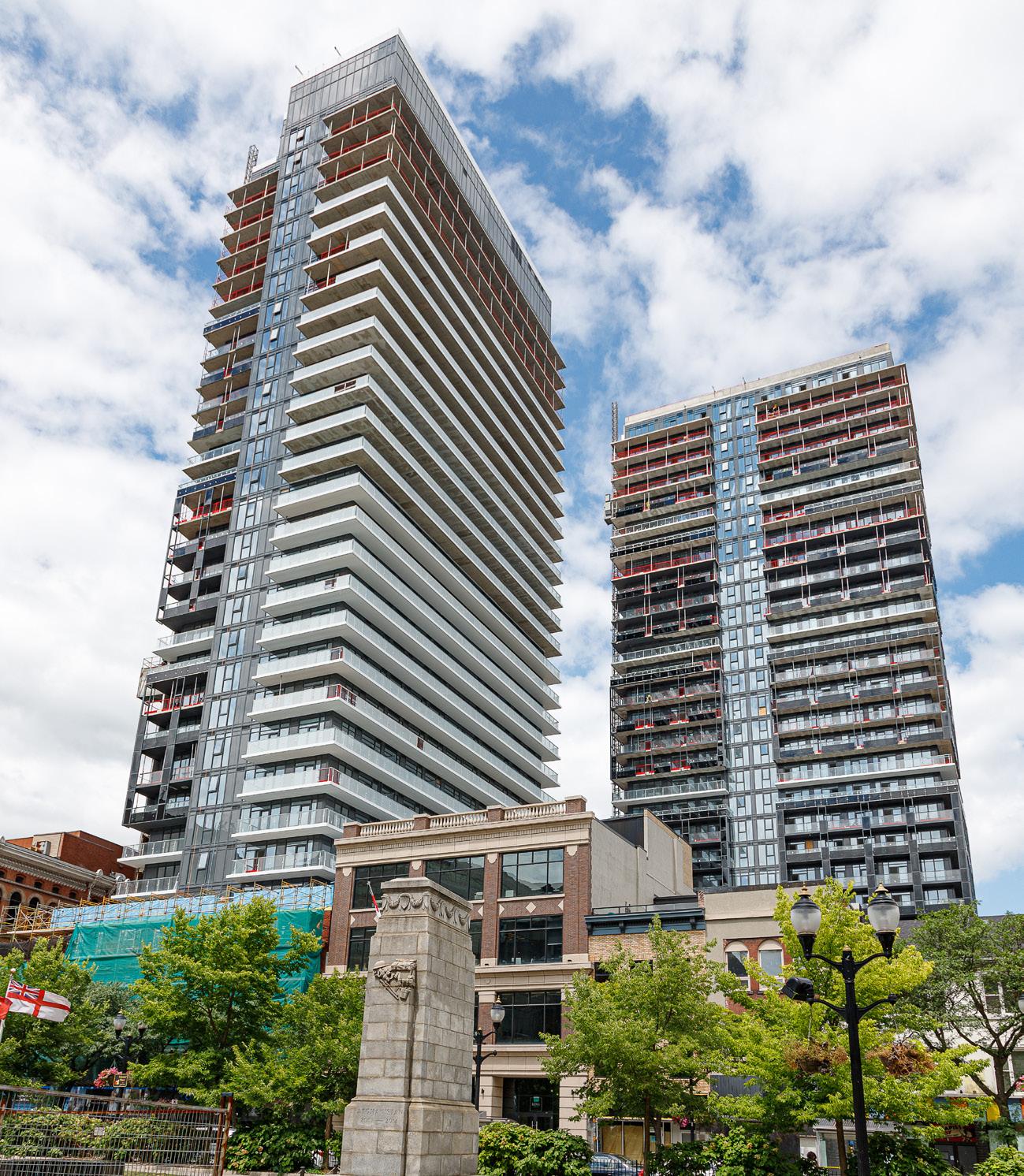
FALL 2023 HCM 27
TWO HIGH-RISE RESIDENTIAL TOWERS BY LIUNA ARE HELPING TO TRANSFORM THE KINGJAMES AREAS OF HAMILTON.
DEVELOPER PIONEERS UNIQUE SOCIAL PARTNERSHIP
Hamilton company Core Urban Inc. is forging a new model for development by working with a non-profit agency to provide desperately needed social housing while creating additional rental and commercial units for the market.
“We think that development can be used as a tool for good,” says Steve Kulakowsky, CEO of Core Urban, a local developer that only works in Hamilton’s downtown.
In its 15-year history the company has won numerous design, heritage and urban regeneration awards. Among its properties are the new apartment buildings at Augusta and James and the Templar Flats and Empire Times buildings on King William.
With the company’s latest project, it has swapped a building at 400 King St. E. (the former Canadian Red Cross building near Wellington Street) for two buildings owned by Mission Services at 325 James St. N., a men’s shelter with 58 emergency shelter beds and 12 transitional beds.
Core Urban renovated 400 King to Mission Services’ standards, increasing the privacy and dignity of its surroundings and expanding badly needed transitional beds from 12 to 52 (transitional beds include private rooms for up to a year for people looking for permanent housing).

Mission Services has moved into the new property and construction will begin soon on the office, commercial and rental project at James Street.
Kulakowsky says he hopes the project will be an example of how developers can partner with social service agencies.
“We’re really proud of that project from all angles, because, from our opinion, it’s net benefit all the way around.”
they work from a coffee shop. They will occasionally work from a co-working space, or from a library, or from a friend’s home.”
Urban planning researcher Markus Moos of the University of Waterloo has called this the “youthification” of downtowns.
But Florida said Hamilton’s downtown will attract other kinds of newcomers as well, including empty nesters seeking a downtown lifestyle. Hamilton’s relative affordability will also attract a large share of Canada’s international immigration, forecast to be nearly 500,000 annually in coming years.
And while Hamilton is often called a post-industrial city, Florida believes that new sustainable manufacturing will provide growing employment in Hamilton’s traditional industries, creating additional demand to live downtown.
“For Hamilton, the opportunity really is how do you create a super vibrant, exciting 24 by 7 live/work place downtown that’s a hub for its workforce but also for the remote workers who telecommute from Hamilton.”
DECADES OF DECLINE
“Consider what makes a city centre magnetic, what can inject the gaiety, the wonder, the cheerful hurly-burly that make people want to come into the city and to linger there,” wrote urban activist and writer Jane Jacobs in her influential 1958 article “Downtown is for People.”
The article was Jacobs’ passionate defence of life in traditional and historic downtowns, and a manifesto against the prevailing 1950s ethos to saddle them with more and bigger highways and fortress-like convention centres, apartment buildings and commercial centres.
“These projects will not revitalize downtown; they will deaden it,” Jacobs predicted, we now know, correctly. “They banish the street. They banish its function. They banish its variety.”
Hamilton’s councillors and planners shared the prevailing mindset of the 1950s. In 1956, they imposed a one-way street system across the lower city to make it easier for industrial workers at the waterfront to commute to their homes in the suburbs. In the process, they devastated shopping districts on King, Main, James and John streets.
In the 1950s and ’60s, settlement shifted to the city’s growing suburbs, resulting in abandoned downtown storefronts and
neighbourhoods that became a refuge for low-income populations.
Buildings were destroyed to make way for parking to serve growing legions of office workers centred at King and James, creating a bustling downtown core during the day and an abandoned streetscape at night.
In 1972, Lloyd D. Jackson Square opened its first phase, creating a new shopping complex in the heart of downtown in a dramatic attempt to offer an alternative to the city’s growing suburban shopping malls. More than 43 acres of streets and Victorian buildings were levelled in the process.
The Eaton’s Centre (later renamed City Centre), built in 1990, was almost immediately troubled.
The City Centre is “the worst building in Hamilton,” writer Seema Narula wrote in an article on arts and culture in the city for British newspaper The Guardian in 2016.
“It’s an impenetrable fortress with few windows or opportunities to connect the inside and outside worlds together. Despite its desirable location it continues to suffer from low occupancy levels, leaving it eerily quiet.”
In a sign of things to come, IN8 Developments has proposed demolishing it to build four mixed-use towers (three 30 storeys tall and one 24 storeys) with outward-looking commercial space at ground level.
The complex, slated to create about 2,000 dwelling units, would be the largest downtown Hamilton construction project in 30 years.
IS GENTRIFICATION INEVITABLE?
The development industry has faced a growing chorus of criticism that accuses it of forcing up rents in downtown apartments and commercial spaces while taking previously cheap accommodation out of the market through renovictions (evictions generated by renovations).
In response, some developers are looking to create a new vision.
28 HCM FALL 2023
/MADE IN HAMILTON
MORE ONLINE: hamiltoncitymagazine.ca
scan the qr code to see more photos of downtown development projects.
ONE OF CORE URBAN INC.’S LATEST PROJECTS IS A 70-UNIT RENTAL DEVELOPMENT ON AUGUSTA STREET.
“If you approach it (development) in a positive way, it can be a net positive for the community,” says Steve Kulakowsky, CEO of Hamilton’s Core Urban Inc., which works exclusively in the city’s downtown. “We’ve never renovicted anybody, and we try not to be labelled gentrifiers.”
Kulakowsky’s company has worked on an array of projects focused on historic renewal and urban revitalization. But he’s particularly proud to be able to work with non-profits working on homelessness issues.
In 2012, the company developed the Witton Lofts at 50 Murray St., building on the original McIlwraith School property, which was being used by Mission Services for shelter kitchen services. Core Urban found a better location for Mission Services and incorporated the historic school into a new condo building, a project that would have been impossible for a non-profit agency.
Core Urban completed a similar project with the Salvation Army and is working on another project at James and Barton streets again with Mission Services (see sidebar).
It’s a model that could be replicated by other developers, such as the Hamilton Urban Precinct Entertainment Group (HUPEG), which is in discussions with the Salvation Army to move its men’s shelter on York Boulevard across the street from the planned refurbishment of the First Ontario Centre.
A DOWNTOWN FOR EVERYONE
While developers are tackling problems of downtown gentrification, a new question is now being raised. As life gets more precarious for vulnerable street people, will central Hamilton continue to be a place where better-off people will want to live?
“At the end of the day, the purchasers of those condos are going to have to be confident that it’s a safe, liveable place where you want to spend your life,” says Cooke.
Cooke traces this problem to the deinstitutionalization of psychiatric patients in the 1970s and ’80s, a situation severely exacerbated by both the opioid crisis and the pandemic.
He says the problem must be tackled on multiple fronts. Services for homeless people should be distributed and integrated into every neighbourhood. Housing affordability also needs to be urgently addressed.
“We better make sure that where there is land available, especially close to transit, or
HISTORIC COPPLEY BUILDING TO BECOME COMMUNITY BUSINESS HUB
One of Hamilton’s iconic pre-Confederation buildings, the 1856 Coppley building at York and MacNab, is part of a bold redevelopment project that will turn the former suit manufacturing plant into a community business hub.
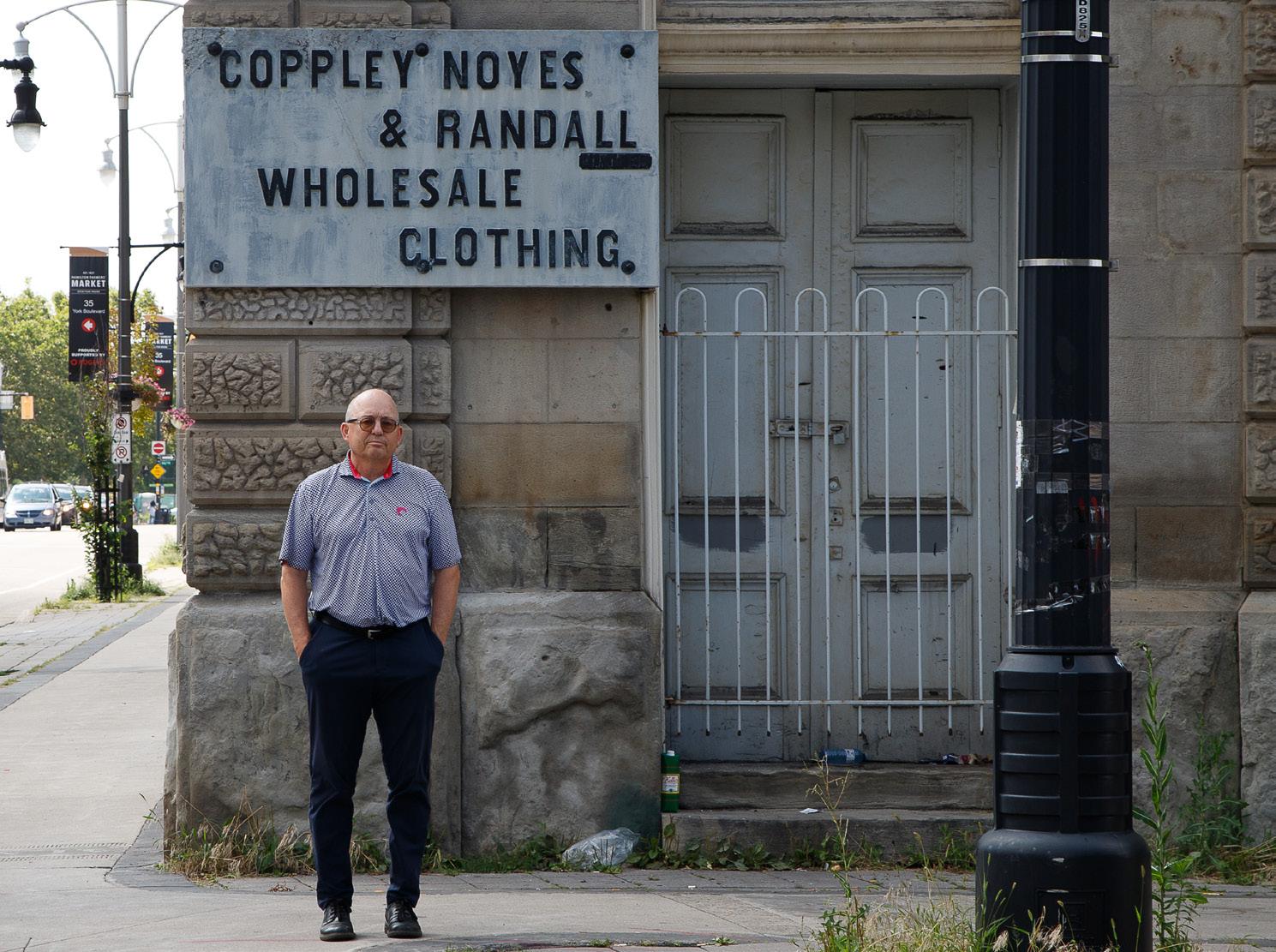
In a city with a wealth of historic buildings, the stone structure is a standout, considered by architects as one of the most important buildings in the city.
The Hamilton Community Foundation (HCF), purchased the 70,000-square-foot site two years ago together with Toronto developer TAS and it’s being renovated.
HCF CEO Terry Cooke envisions the project as an office complex appealing to business owners who want to be located in a beautiful historically designated building. But he also believes it can be a hub for charities and
the LRT, that it is protected at the very least for mixed-income development, if not for deeply affordable units.”
He argues the provincial and federal governments must be part of the housing solution. “Everywhere I’ve been, we are in a crisis situation in this country.”
Perhaps the way forward is to develop the strong citizen engagement that is part and parcel of the “cheerful hurly-burly” that Jane Jacobs said is the mark of a great community. This can grow as boarded-up shops gradually re-open and people return to
community-based organizations that can be a catalyst for social and economic action.
The building contains two large courtyards, ideal for holding HCF educational or fundraising events, which could also be made available for civic events. The project will be developed in stages with initial leasing expected in 18 months and full completion in about five years.
Cooke says the project could facilitate some novel social enterprise arrangements, such as charities taking an equity interest in the project in exchange for discounts on their rent.
“For us, part of it is investing in local real estate and the future of the downtown as an impact investment,” says Cooke. “And part of it is trying to be a catalyst for renewal and the importance of heritage architecture to the fabric of the downtown.”
previously empty streets.
Kulakowsky of Core Urban thinks this will be the case. It starts with confronting the feeling that the downtown is an unsafe place.
“I think that (feeling) will be offset by getting some of those buildings that are in planning to materialize. Each one of those buildings will make a big difference to the vibrancy of the downtown. So I’m hopeful and feel positive because of that.” n
FALL 2023 HCM 29
Eugene Ellmen writes on sustainable business and finance. He lives in downtown Hamilton.
TERRY COOKE, CEO OF THE HAMILTON COMMUNITY FOUNDATION, OUTSIDE THE HISTORIC COPPLEY BUILDING ON YORK BOULEVARD THAT IS BEING TRANSFORMED INTO A COMMUNITY BUSINESS HUB.
GREY CUP FESTIVAL : ‘YOU WILL BE WOWED’
SIX DAYS OF EVENTS AHEAD OF THE CFL’S CHAMPIONSHIP GAME IN NOVEMBER WILL SHOWCASE THE BEST OF HAMILTON.
By MEREDITH M ac LEOD
When two teams line up for the 6 p.m. kickoff of the 110th Grey Cup at Tim Hortons Field on Nov. 19, it will mark the 12th time Hamilton has hosted the CFL’s ultimate game.
That includes 2021 when a drastically scaled-down game was held in the east Hamilton stadium amid pandemic restrictions. It was perhaps one of the greatest championship games ever, with the Tiger-Cats falling 33-25 in overtime to the Winnipeg Blue Bombers. Off the field, Hamilton lost, too. COVID meant none of the traditional parties, concerts and other public events could happen.
So the CFL announced in October 2021 that it would give Hamilton the Grey Cup in 2023 and the Tiger-Cats and the city have been planning ever since.
“We have an opportunity now to do what we want and what we hoped to do in 2021,” says Gerry Fonzo, vice president of stadium events and operations with Hamilton Sports Group, which oversees the Ticats, Forge and

events at Tim Hortons Field. Fonzo is also general manager of the Grey Cup Festival, overseeing a core team of 10 that is dedicated full-time to the event.
“This will be the Grey Cup, Hamilton way.” There is no doubt this is a very special chance to shine a light on Hamilton for CFL fans.
The festival’s theme, Built in the Hammer, centres around a series of community partnerships that include Supercrawl, YWCA, Around the Bay Road Race, and the Hamilton Santa Claus Parade. There will be more than 40 events, including traditional Grey Cup staples, such as team parties in unique Hamilton venues, and many family-friendly events.
Hamilton Mayor Andrea Horwath joked at a festival event announcement in August that she ran for the top post in order to lead the city when it hosted the Grey Cup. She said she’s been a Ticat fan her whole life, going to games with her mother and grandmother, who were season-ticket holders. Horwath even worked the concession booth at Ivor
Wynne Stadium as a teen.
After the event, she told HCM that Hamilton will show off for Canada.
“We are going to invite people in to share the pride in our community. It’s a great honour to host the championship of our national league.”
SHINING A LIGHT ON HAMILTON
The last time Hamilton hosted a fullscale Grey Cup was 1996 at Ivor Wynne. It’s no exaggeration to say the city is vastly different now. The opportunity to show off a new, revived and growing Hamilton – not to mention a new football stadium – is a repeated theme among Grey Cup Festival organizers and partners.
“Thousands of visitors to our city will see the best of Hamilton and experience Hamilton for what it is now,” says Fonzo. “If you’ve been to a Grey Cup before, you’ll remember this one, and if this is your first one, you will be wowed.”
Just a few highlights of the many changes that have come in 27 years: 1996 was five
30 HCM FALL 2023 /MADE IN HAMILTON
EXPERIENCE TIM HORTONS FIELD’S UNIQUE VIEWING ENVIRONMENT, SHOWCASING NEW AND ENHANCED SOCIAL AND PREMIUM HOSTING AREAS.
RENDERINGS: SUPPLIED
years before Ancaster, Dundas, Flamborough, Glanbrook and Stoney Creek merged with the big city they surround to become the new city of Hamilton; the Eaton Centre downtown (later renamed the City Centre) was just six years old. It’s now boarded up and ready for demolition to make way for five towers. Bayfront Park, the first piece of the unlocking of Hamilton’s previously entirely industrial waterfront, was just three years old. And all those construction cranes now dotting the skyline were a generation away.
So was all the talk of the renaissance, Hamilton’s place as a foodie town, and any hope of a train running through the downtown.
“All of Hamilton is excited and should be proud to showcase what Hamilton is and what we’ve become since we last hosted a full Grey Cup,” says Lisa La Rocco, director of operations at Sonic Unyon, which brings Supercrawl to downtown Hamilton each year.
Sonic Unyon will be producing Fan Central, a street festival on James Street North that will form one of the key events of the Grey Cup Festival.
It’s part of a vision for a dense, walkable footprint linking venues together. That starts, of course, with Tim Hortons Field, affectionately called The Donut Box.


“It’s a unique fan experience,” says Fonzo. “We aren’t surrounded by a sea of parking in the middle of nowhere. We are a neighbour in a great area of Hamilton. That’s evident every game day but will be on a very large scale for Grey Cup.”
Really, this Grey Cup Festival will put five years of planning into action, says Matt Afinec, president and COO of Hamilton Sports
Group.
“We are definitely excited. We hope to really introduce the Ticats and the CFL to new kids and families who will become fans.”
CFL commissioner Randy Ambrosie said even in the muted atmosphere of the 2021 Grey Cup, the excitement in Hamilton was evident.
“This Grey Cup Festival will showcase all that makes Hamilton so special and this region so special … There are very few things more Canadian than being at a Grey Cup.”
When big events come to town, Sonic Unyon likes to get involved, says La Rocco. “We feel like we can bring Hamilton an excellent quality event and we try to benefit the musicians and visual artists who live in the city.”
Sonic Unyon has programmed Juno festivals and the closing festival for the Pan Am Games, for instance. But since the team is made up of big Ticat fans, this event will be special, says La Rocco.
“We are thrilled to be asked to help with
the street festival. We can help put on the best Grey Cup ever.”
SANTA JOINS THE GREY CUP
Ticat caretaker/owner Bob Young says the city will prove during Grey Cup week that the region should drop the T for the big city to the east and just be called the GHA. The festival will feature community partners that will integrate the Grey Cup into their events.
“This is bringing together everything that makes Hamilton, Hamilton. If we can help our partners get out their message and they can help us with ours, everyone wins. It’s a collective effort.”
The city’s historic Santa Claus Parade changed both its date and its route to take part in the Grey Cup Festival.
It’s exciting to merge the CFL and its teams, cheerleaders and the coveted Grey Cup trophy with the traditional kickoff to the Christmas season, says the parade’s chair Doug Hobson.
The parade will circle Fan Central on James Street North, providing a longer route and more places to watch from, he says.
“We are hoping this will be one of our best-attended parades ever. It just makes sense to merge Santa with the Grey Cup.”
COVID dealt a blow to the volunteer-led parade, which has wound along Hamilton’s streets since at least 1949.
“We definitely hope the Grey Cup helps to rejuvenate interest in the parade and get it back to what it used to be.”
A kids’ road race was supposed to be part of the 2021 festival before events were cancelled, says Anna Lewis, director of the Around the Bay Road Race.
/continued on next page
FALL 2023 HCM 31
WITH 90,000 SQUARE FEET, THE SOUTH PLAZA WILL FEATURE THE GREY CUP’S LARGEST OUTDOOR TAILGATE, OFFERING FOOD AND BEVERAGE EXPERIENCES (1) , LIVE ENTERTAINMENT (2) AND OTHER PRE-GAME FESTIVITIES (3)
1 2 3
THE ENTERTAINMENT STAGE IN THE SOUTH PLAZA OUTDOOR TAILGATE WILL FEATURE LIVE LOCAL MUSIC. FANS WILL ENJOY A VARIETY OF ACTS FROM THE START OF PRE-GAME RIGHT UP UNTIL KICKOFF.
Now a free race from Gage Park to Tim Hortons Field will be held on Nov. 16.
“We are honoured and happy to be a partner in a special opportunity to showcase Hamilton.”
And it’s fitting that the next ATB, the 130th running of the historic race, will finish at Tim Hortons Field due to the closure of FirstOntario Centre for renovations.
DOING THE GREY CUP RIGHT
A group of childhood friends who began gathering for game days in the cheap seats of Ivor Wynne more than 25 years ago has become the fan force known as the Box J Boys. They dress in black and gold, sporting kilts and hard hats, blowing horns and leading chants in the stands.
And they will be busy during the Grey Cup Festival, says Jason Allan, one of the founding members. In addition to team parties and fan events, Box J Boys will be hosting a party at the Corktown Tavern.
“It will be what a Grey Cup party should be. There will be two floors of live music and we’ll rock the night with people from coast to coast.”
And Allan knows Grey Cup parties. He’s been to every single Grey Cup since 1998. He says Hamilton will be a great host city and CFL fans are excited.
“If Hamilton is not your team, we are your second-favourite team. And the Ticats always put on a fantastic game-day experience, so there is no doubt it will be done right at the Grey Cup.”
END ZONE: NEED TO KNOW
GREY CUP FESTIVAL
The six-day festival includes more than 40 events.
Fan Central will close down James Street North from York to Barton from Thursday to Sunday. Programmed by the team behind Supercrawl, it will feature music, art, food and a Christmas market.
The Canadian Armed Forces will open the John Weir Foote Armoury, a national historic site, for a Fan Zone, including a flag football competition on a 35-yard turf field, obstacle courses, a Canadian Football Hall of Fame exhibit and other football-related activities.
“It’s an incredible venue that so many Hamiltonians haven’t seen, so we are excited about that,” says Afinec, at Hamilton Sports
Group.
The festival will also include a kids’ road race from Gage Park to Tim Hortons Field, a neighbourhood block party on game day, a tailgating event outside the stadium, a CFL alumni luncheon, the Tiger-Cats’ TigerTown and concert series at FirstOntario Centre, a Cheer Extravaganza featuring CFL dance and cheer teams at FirstOntario Concert Hall, an industry conference for sponsorship professionals at Tim Hortons Field, and a YWCA luncheon for youth at Liuna Station that will centre around women working in professional sports.
Local school kids in both the public and Catholic boards will even have a PA day on Friday, Nov. 17, two days before game day.
Announcements about musical performers are still to come.
The CFL has its own events during the festival, including a coach’s conference and all aspects of game day. It is also coproducing the CFL Awards event with the local organizers that will be held in Niagara Falls. Free shuttles will run from Hamilton to Niagara Falls where the CFL Awards and a concert will happen at Fallsview Casino.
Broadcaster TSN will host panels from the festival events.
If you want to be part of history in Hamilton, the Grey Cup Festival requires about 650 volunteers.
CFL
The Canadian Football League is made up of nine teams – four teams in the East Division and five teams in the West Division. Teams play 18 games in a season. Following the regular season, six teams compete in the league’s three-week playoffs.
The 2023 season has been “remarkable,” said CFL commissioner Randy Ambrosie.
Stadium attendance is up and broadcast ratings are growing each week, now hitting an average of 637,000 viewers a game, he says.
“We are a big deal and Canadians love the CFL and football fans around the world love the CFL.”
It’s a point of pride for CFL fans that the rules are different from the NFL. The major differences: Canada’s teams play on a bigger field – 30 yards longer and 12 yards wider; 12 players on the field for the CFL, 11 for the NFL; three downs per possession in the CFL and four downs in the NFL; each team has a possession in overtime in the CFL, in the NFL,
if a team scores on the first possession in OT, the game is over; the goal posts for field goals are at the back of the end zone in the NFL and at the front of the end zone in the CFL.
GREY CUP
The Grey Cup is one of Canada’s largest annual sports and television events. The Grey Cup is both the name of the championship of the CFL and the name of the trophy awarded to the victorious team. The Grey Cup is the second-oldest trophy in North American professional sports, after the Stanley Cup.
The Grey Cup was donated by Governor General Earl Grey in 1909 to the team winning the Senior Amateur Football Championship of Canada.
THE TIGER-CATS
The club traces its origins back to 1869 to the founding of Hamilton Football Club, which played as the Tigers. In 1950, the Tigers merged with cross-town upstart Hamilton Wildcats and became the Tiger-Cats.
Since the 1950 merger, the team has won the Grey Cup championship eight times, most recently in 1999. They captured the championship at home in 1972. (The former Hamilton Tigers won the Grey Cup five times, while the Hamilton Flying Wildcats and the Hamilton Alerts with one each. The Alerts played from 1911 to 1912 and won the fourth Grey Cup ever played.)
Unfortunately, the Ticats have had the longest Grey Cup drought of all the CFL teams and are the only team that hasn’t won the Grey Cup in the 21st century.
Hamilton native and businessman Bob Young, who made his fortune in software, purchased the club on Oct. 7, 2003. On Jan. 2, 2022, the club reorganized its ownership under the newly announced Hamilton Sports Group, an entity that also owns Forge FC and the master licence for Tim Hortons Field, which opened in September 2014.
The group has investment from Stelco, club CEO Scott Mitchell and Woodbine Entertainment CEO Jim Lawson. n
MORE ONLINE:
scan the qr code to see more renderings and grey cup festival videos.
hamiltoncitymagazine.ca
32 HCM FALL 2023
/MADE IN HAMILTON
Bringing Pollyanna to life
THEATRE AQUARIUS’S HOLIDAY FAMILY SHOW WILL BE THE WORLD PREMIERE OF POLLYANNA THE MUSICAL AND HAMILTON CITY MAGAZINE WILL SHOW YOU JUST WHAT IT TAKES TO GET TO OPENING NIGHT.
It’s a rare work of art that produces a protagonist so iconic that she becomes part of the lexicon.
But Pollyanna, the young lead of the 1913 classic children’s novel of the same name by American author Eleanor H. Porter has become synonymous with unfailing optimism and cheerfulness. The 11-year-old orphan goes to live with a stern aunt in a lifeless Vermont town, where she teaches those around her “The Glad Game,” in which she applies a positive outlook even in the bleakest situations.
There are more than a dozen sequels to the book, including one written in 1997.
Pollyanna has also been adapted for film several times, including a 1920 version, Disney’s 1960 adaptation that won a special Oscar for child actress Hayley Mills and a 1989 version called Polly, starring Felicia Rashad.
And now, a world premiere of a musical adaptation of the novel will be the holiday family show in Theatre Aquarius’s 2023-2024 season.
With book and lyrics written by Hamilton resident Steven Gallagher and music by Linda Barnett, Pollyanna The Musical was showcased at the 2016 From Page to Stage Festival in London, England and shortlisted for the
Playwrights Guild of Canada – Best Musical.
“We are thrilled to have our world premiere in Hamilton and at Theatre Aquarius,” says Gallagher, who is an accomplished writer, director and actor. “Pollyanna is an infectious story about the power of positivity and loving people for who they are. It’s the perfect holiday show.”
The musical will be directed by veteran director Robert McQueen, who was associate director for the Broadway and national touring productions of MAMMA MIA. He is also the director of NoteWorthy, the musical theatre development program of Acting Up Stage Theatre Company, in Toronto.
HAMILTON CITY Magazine will pull back the curtain with a digital diary documenting what it takes to bring a production to opening night. We’ll introduce you to the cast, the director, the playwright and all the people who work behind the scenes to bring a musical to life.
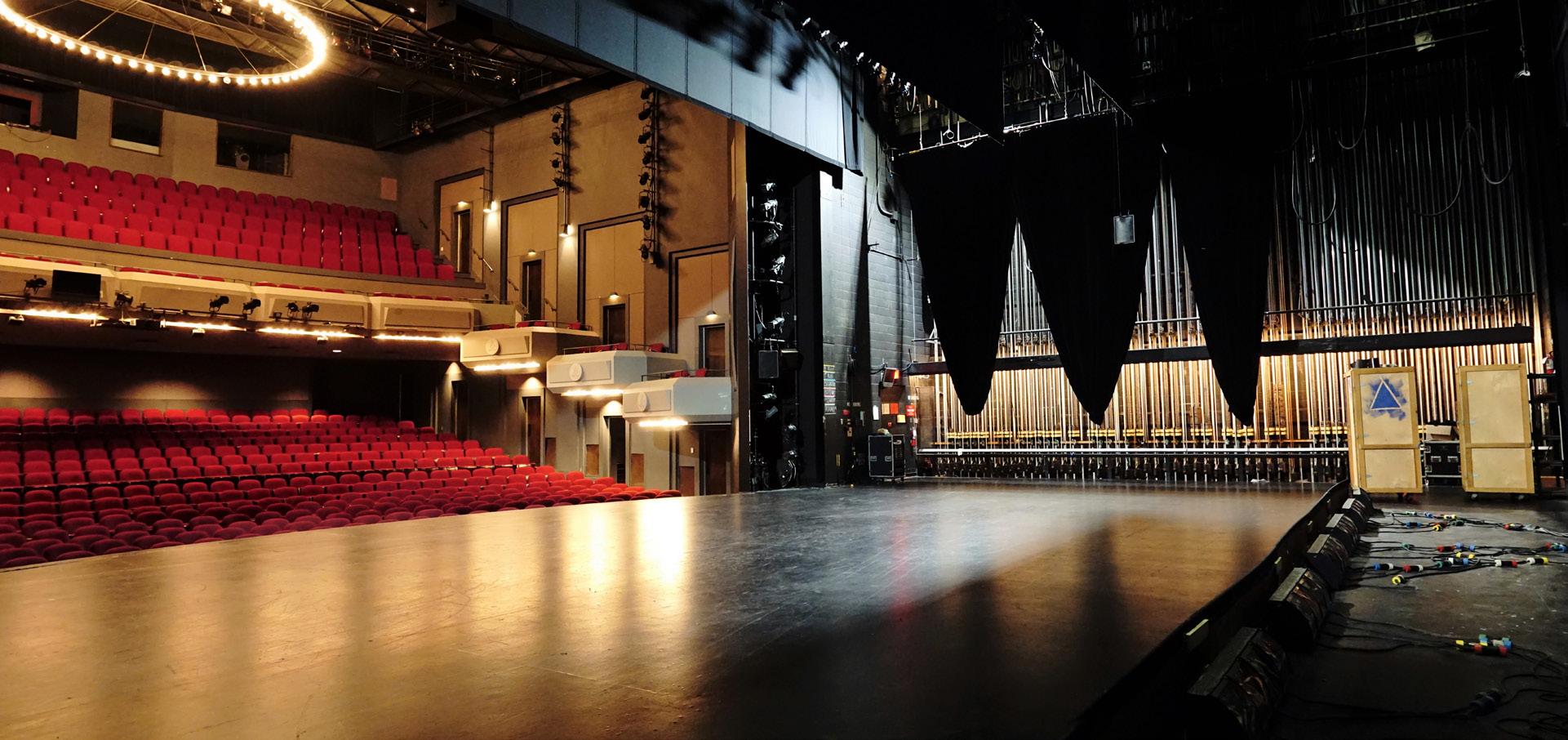
We’ll show you the auditions, the rehearsals, the building of the sets and the making of the costumes. It will all culminate in a feature in the holiday edition of HCM!
Pollyanna The Musical, at Theatre Aquarius from Dec. 6 to 23, will prove that positivity can change the world. n
FALL 2023 HCM 33
YOU WILL HAVE A BACKSTAGE PASS AS HAMILTON CITY MAGAZINE RAISES THE CURTAIN ON JUST WHAT IT TAKES TO GET TO OPENING NIGHT FOR POLLYANNA THE MUSICAL. PHOTO: SUPPLIED
EVOLUTION IN
art
ART GALLERIES IN HAMILTON, BURLINGTON AND M c MASTER UNIVERSITY ARE BREAKING DOWN BARRIERS AND ENVISIONING THE WAY FORWARD.
By ADRIENNE ROMAN
Art galleries around the world are collectively brushing themselves off, sharpening the nature and scope of their programming, diversifying their exhibitions, and addressing the intricacies of human nature as we find ourselves navigating postpandemic waters.
Artists are effecting change, participating in a long-awaited political, economic, and social evolution that’s being activated in all corners of the globe. Institutional practices are now clearly positioned under the microscope, social progress is in the spotlight, and diversity is finally gaining ground.
“Today’s artists and museums are increasingly supporting underserved communities,” says Rachel Gotlieb, former curator with the Royal Ontario Museum and the Gardiner Museum of Ceramic Art.
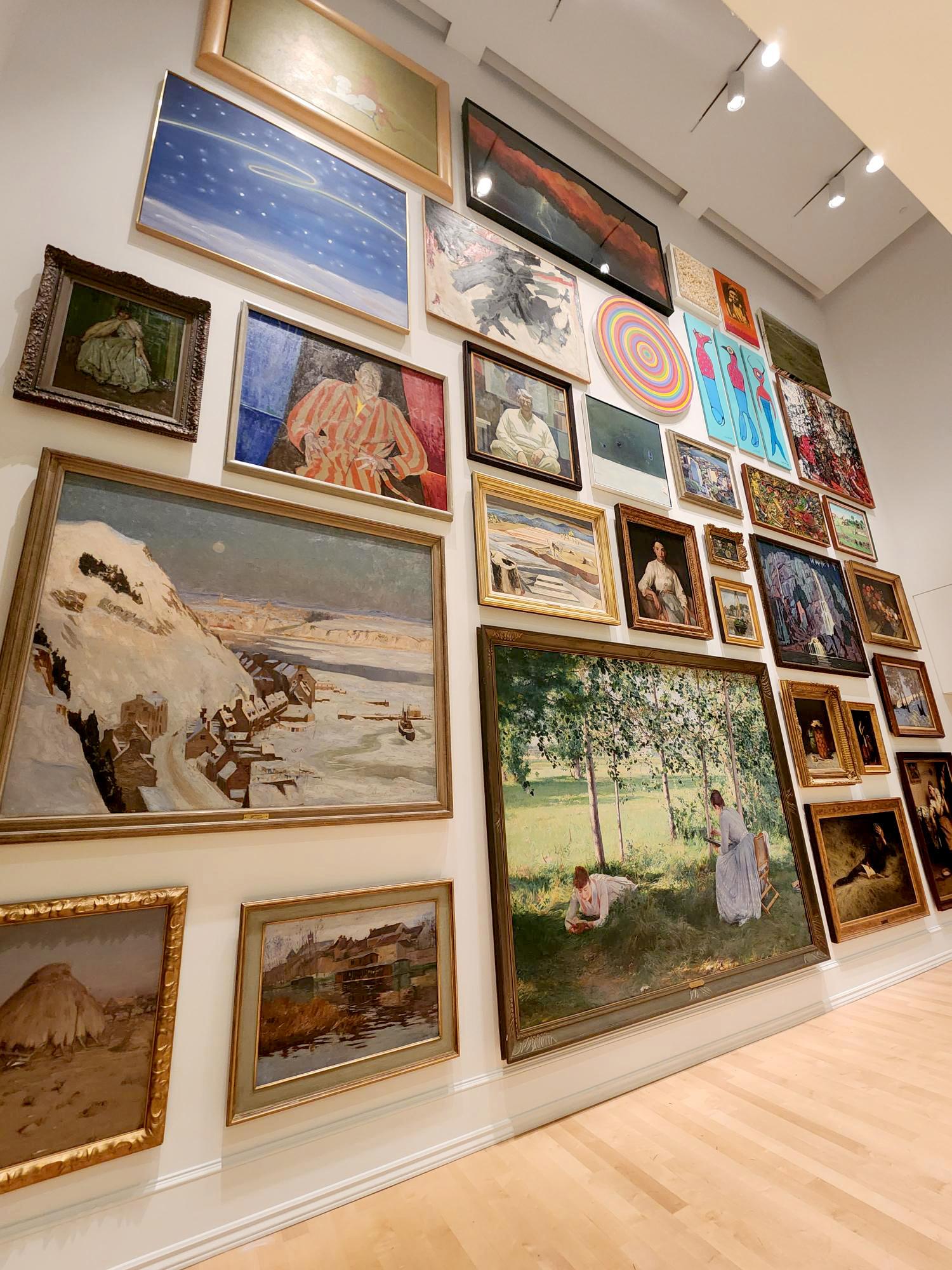
“For museums and galleries, this means evaluating the Western canon to be more inclusive in their exhibition and acquisition strategies, along with creating new opportunities to bring diverse representation and staffing, from visitor services to curators, executives, and board members.”
There is an abundance of opportunities in your local galleries and creative spaces this fall to explore vibrant art scenes, support many talented artists and crafters, and discover incredible innovation.
34 HCM FALL 2023
/ARTS & CULTURE
THE WILLIAM BLAIR BRUCE CANADIAN COLLECTION AT THE ART GALLERY OF HAMILTON BEGAN IN 1914 WITH 29 WORKS DONATED BY HIS WIDOW. PHOTO: SUBMITTED
ART GALLERY OF HAMILTON
The Art Gallery of Hamilton, founded in 1914 with an exhibition of 33 works, has served as a long-standing civic anchor within the city of Hamilton, one focused on improving quality of life and contributing to the economic and cultural vitality of the region. It’s remained a steadfast institution through times of industrial revolution, technological advances, and 20th-century growth and change.
The AGH’s established collection has grown to more than 10,500 works, including distinguished works of art that span over 700 years of history. It’s the third-largest art collection in the province, behind the Art Gallery of Ontario and the National Gallery of Canada, and operates as an award-winning multidisciplinary leader in Canada. The AGH houses masterpieces that include Canadian historic and contemporary art, American, Indigenous, and international art.
Always evolving, the AGH is focused on prioritizing both physical and digital access to its collections, creating inclusive community engagement, and joining in the revitalization of the downtown core, ultimately ensuring diverse, cross-cultural long-term relationships are forged through greater resource sharing.
“It’s important for the AGH to embody and reflect the city’s values and be embedded in the wider framework of cultural sustainability and diversity,” says Shelley Falconer, president and CEO of the AGH. “As both a cultural hub and valued educational institution, we’re in a unique position to engage and provoke meaningful discussion through the voices of artists.”
The AGH has partnered with many organizations, including McMaster University, Six Nations, the Coalition of Black and Racialized Artists, Hamilton You Poets, the Centre for Civic Inclusion Hamilton and the Hamilton Arts Council.
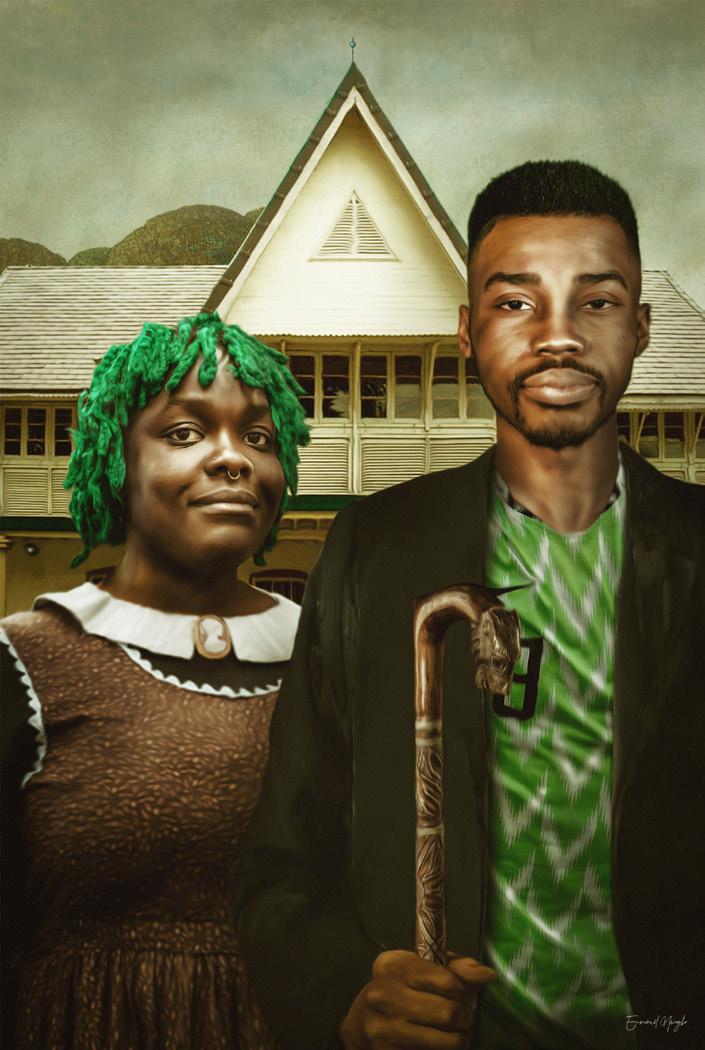
THE AGH COLLECTIONS
The AGH’s William Blair Bruce Canadian Collection, now over 100 years old, is distinguished by a number of its iconic works, including Alex Colville’s ”Horse and Train,” William Kurelek’s ”This is the Nemesis,” and William Blair Bruce’s ”Phantom Hunter.” The gallery is expanding this iconic Canadian collection – named after the Hamiltonborn Impressionist painter – with the inclusion of works by female artists, artists of colour, Indigenous artists, and a number of underrepresented artists from Hamilton and beyond.
Some of the gallery’s other prominent pieces include works of art by Toronto-born Canadian Impressionist artist Helen McNicoll (18791915), Canadian artist Jean-Paul Riopelle (1923-2002), and French artists Georges Braque (1882-1963) and Phillippe Rousseau (1816-1887).
AGH’S OTHER TREASURED COLLECTIONS INCLUDE:
The Chedoke Inuit Collection – highlighting stories of the Hamilton Sanatorium and Inuit art influenced by the tuberculosis crisis of the 1950s and 1960s
Norval Morrisseau Collection and the Woodland School – 117 impressive works by the Anishinaabe artist
Ed Burtynsky – a collection of 78 works exploring climate change by the Canadian photographer
Tom Thomson and The Group of Seven
Lawren Harris and stories of national mythmaking
William Kurelek – Immigration Stories
Female artists – Emily Carr, The Beaver Hall Group, Kenojuak Ashevak and Shelley Niro Canadian Realism and Abstraction – Alex Colville, Christopher Pratt, Jean-Paul Riopelle and the Painters 11
Social Realism – a collection of the American Ash Can School and British Camden Town Group, together with works from the Canadian social realist collection
Tanenbaum Collection – 19th-century European narrative art
African and Oceanic Collections – a collection exploring the African diaspora
UPCOMING EVENTS AT THE AGH
THE AGH FESTIVAL
A 10-day festival of arts that features visual art, music, live performances, media and film, and crafters. Oct.12-22
EXHIBITION: “WONDER: THE REAL, THE SURREAL AND THE FANTASTIC”
In an age of reality shows, social media and fake news, this exhibition featuring two dozen historical and contemporary artists explores the concept of reality. This exhibition explores the relationship between a logical view of life and the unconscious mind, fantasies, and the dream world. Sept. 23 –Jan. 7, 2024
EXHIBITION: “BREATHING IN CHINA”
Guest curated by Yan Zhou, relevant exploratory themes of air quality and smog highlight climate instability, with artists from Canada and China showcasing drawing, painting, sculpture, installation, and video. Until Dec. 31
EXHIBITION: “I AM MY MOTHER’S DAUGHTER” This is Farheen Haq’s first solo exhibition in Southern Ontario. Haq’s presentation of cultural performance, video, and sculpture weaves together the intergenerational experiences of her Pakistani heritage as a second-generation immigrant, the relationship with her mother, and her family’s responsibilities toward the work of reconciliation as settlers on Haudenosaunee territories. Until Dec. 31
RBC ARTIST IN RESIDENCE: MELISSA GENERAL General’s work can be found in the David Braley and Nancy Gordon sculpture atrium, an evolving new body of work focused on concepts of memory, land, and language, and her identity as a Mohawk artist from Six Nations of the Grand River Territory. Until March 31, 2024
FALL 2023 HCM 35
–
EMMANUEL NWOGBO, THE NIGERIAN GOTHIC, 2019, PRINTED DIGITAL COLLAGE. COURTESY OF THE ARTIST.
Mc MASTER MUSEUM OF ART
McMaster Museum of Art is a public art gallery, offering free admission, nestled in the McMaster University campus. The M(M)A follows a mandate of positively disrupting previously accepted narratives by including greater experiential and dynamic relationships between peoples and artistic practices, advancing decolonization, and collaborating with intention.
Its current exhibition “Chasm” rethinks the museum concept. The exploratory collection exhibition looks inward at the museum, reframes acquisitions to reflect on inequitable power dynamics and encourages critical dialogue of the oppressive systems embedded in museum practices. It is accompanied by a series of public events this fall.
“Chasm” is primarily interested in illuminating the centuries-old authoritarian forces that have generated divisive social structures and dominated museum culture.
“Chasm” invites visitors to challenge convention with an experience that seamlessly weaves together culture, politics, and language. Through art that explores colonialism and patriarchy, multiculturalism, love and loss, land, and language, it confronts preconceived notions of the traditional white cube gallery. The complex nature of the art object itself within a space and place provokes unexpected internal dialogues.
Guest curator and former M(M)A senior curator Pamela Edmonds, and M(M)A adjunct senior curator Betty Julian worked together to select significant pieces from the MMA’s more than 6,000 pieces of European, Canadian, and Indigenous art.
“Our interests are to consider and to actively shift hegemonic paradigms through a radical rethinking of the exhibition space,”
say Edmonds and Julian.
It offers the opportunity to continue the conversation surrounding the elitism inherent in the foundations of many art institutions, and the social reform that can be realized through critical discussion and accessible, diverse, inclusive spaces.
“Chasm” includes the work of Canadian abstract artist Yves Gaucher’s (1934-2000), which creates a stark esthetical juxtaposition of black and white, while in the same space Abenaki painter Rita Letendre’s (1928-2021) vivid works fill the space with bold colour and magical movement.

Francisco de Goya’s visual protest, “Lo Mismo” (1810-1820) urges the viewer to confront the atrocities of past injustice while simultaneously resonating with a future promise of reform.
Chasm is, above all, a diverse collection of transcultural perspectives and interpretations of selected works from the museum’s permanent collection with the addition of more recent post-pandemic acquisitions from the 1990s onward.
Visitors have a chance to look beyond themselves, to glimpse the bigger picture, with a number of progressive curatorial choices that have created a successful space for introspection and contemplation. The exhibit explores powerful subjects of pain, grief, and divide, yet concurrently offers an antithetical whimsical ride.
“Chasm” is a poignant look at the dualities of our existence and is “inescapably hybrid, like the world we live in,” say its curators.
OTHER LOCAL GALLERIES
EARL’S COURT GALLERY
215 Ottawa St. N.
A major supporter of Hamilton’s art institutions for the last half century, this year marks Earl’s 50th anniversary. Owner Bob Daniels started the gallery in 1973 on George Street and moved to the current location in 2009.
n Upcoming exhibit: Barry Hodgson and Murray Gainer exhibition featuring soft oil paintings inspired by the Sandbanks region and Prince Edward County.
Oct. 5-Nov. 11, opening reception: Oct. 5, 7 p.m.-9 p.m.
CARNEGIE GALLERY
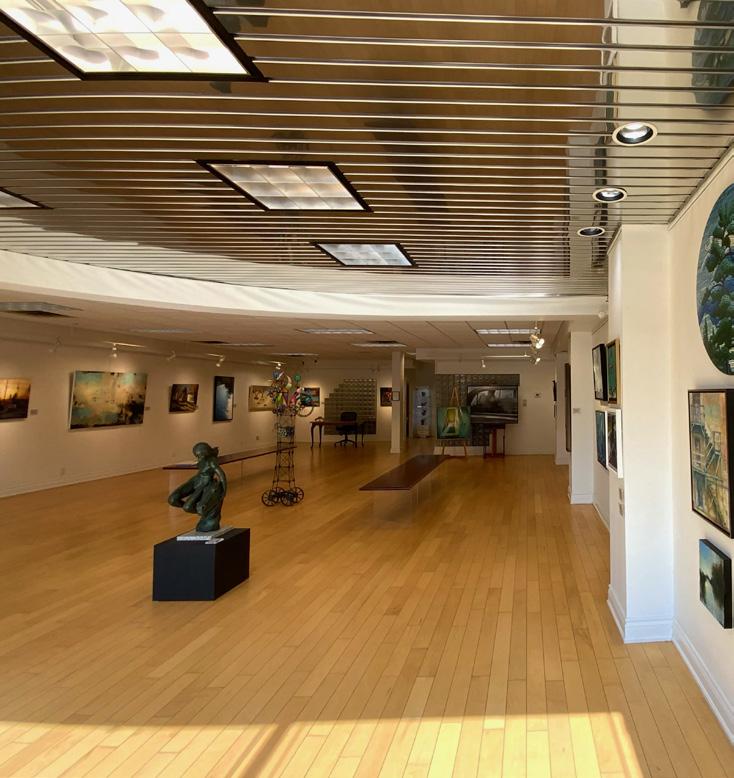
10 King St. W, Dundas
Housed within the 1910 historic Andrew Carnegie Public Library in downtown Dundas, the Carnegie Gallery is a not-forprofit gallery and shop, run by the Dundas Art and Craft Association since 1980. Exhibitions of art and crafts rotate monthly, and artists are encouraged to apply for membership.
Upcoming exhibits:
n John Miecznikowski (1943-2021)
A memorial exhibition of drawings, paintings, and sculpture by this Hamilton artist, a master of the portrait tradition and accomplished sculptor. Miecznikowski’s public sculptures includes monuments to Frederick Banting and John Galt, and portrait busts of prominent Canadians Gerhard Herzberg, David Suzuki, and Margaret Atwood.
CHASM
Curated by Pamela Edmonds and Betty Julian
Opening reception: Thursday, Sept. 28, 5 p.m.-8 p.m.
Runs until Dec. 8
36 HCM FALL 2023
/ARTS & CULTURE
“CHASM” AT THE M c MASTER MUSEUM OF ART LOOKS INWARD AT THE MUSEUM. PHOTO: DARREN RIGO
n “Sticks & Stones” – Joseph Panacci
Working from his Simcoe studio, this highly accomplished functional and sculptural ceramic artist is known for creating woodfired vessels characterized by their elegant forms and unique surface glazes.

n “Cartoons from Groundhog Hill” – Rose Anne Prevec
Lively ink drawings by Dundas cartoonist and illustrator Rose Anne Prevec. Her lighthearted cartoons feature the animals she encounters hiking the Dundas Valley trails.
HAMILTON ARTISTS INC.
155 James St. N.
Birdie Gerhl exhibit opens Sept. 6 at the Cannon Gallery. Multidisciplinary and interactive textile and sculptural works, formed by disability art.
CROWN & PRESS GALLERY
303 Ottawa St. N.
An Art Deco-inspired café and fine art gallery, curated by Canadian artist Julia Veenstra. Find food pop-ups and live painting demonstrations in this historic 4,000 square feet of space. The gallery features the work of over 30 artists from across Canada, including Holly Dyrland, Janet K. MacKay, Jessica Masters, and Michelle Paradis.
YOU ME GALLERY
330 James St. N.
Back by popular demand, The Whirlygigs exhibit, curated by Bryce Kanbara, runs Sept. 8-10.
ART GALLERY OF BURLINGTON
ON NOW UNTIL OCTOBER 8, 2023
Centrally located in downtown Burlington, across from Spencer-Smith Park and the waterfront, the Art Gallery of Burlington’s 44,000 square feet of galleries and event spaces are free to visit. The AGB, founded in 1978, maintains the largest collection of contemporary Canadian ceramics. The building has unique spaces for rentals, and inclusive arts programming options for both young and old, with classes, workshops, camps, and guilds. It bills itself as “a place of intersection where creators, cultures and communities meet and share in the wealth of human creativity.”
The AGB is generouslysupported bythe Ontario Arts Council and the Canada Council for the Arts.
Its current exhibition “The Weight of Clay” represents a celebration of the 40th anniversary of the permanent ceramic collection at the AGB.

The foundation of the collection was more than 300 pieces donated by Herbert O. Bunt in 1984 that set the stage for the growth of an exceptional body of work.
From functional pieces to sculptural, the centre of the exhibition is a selection of
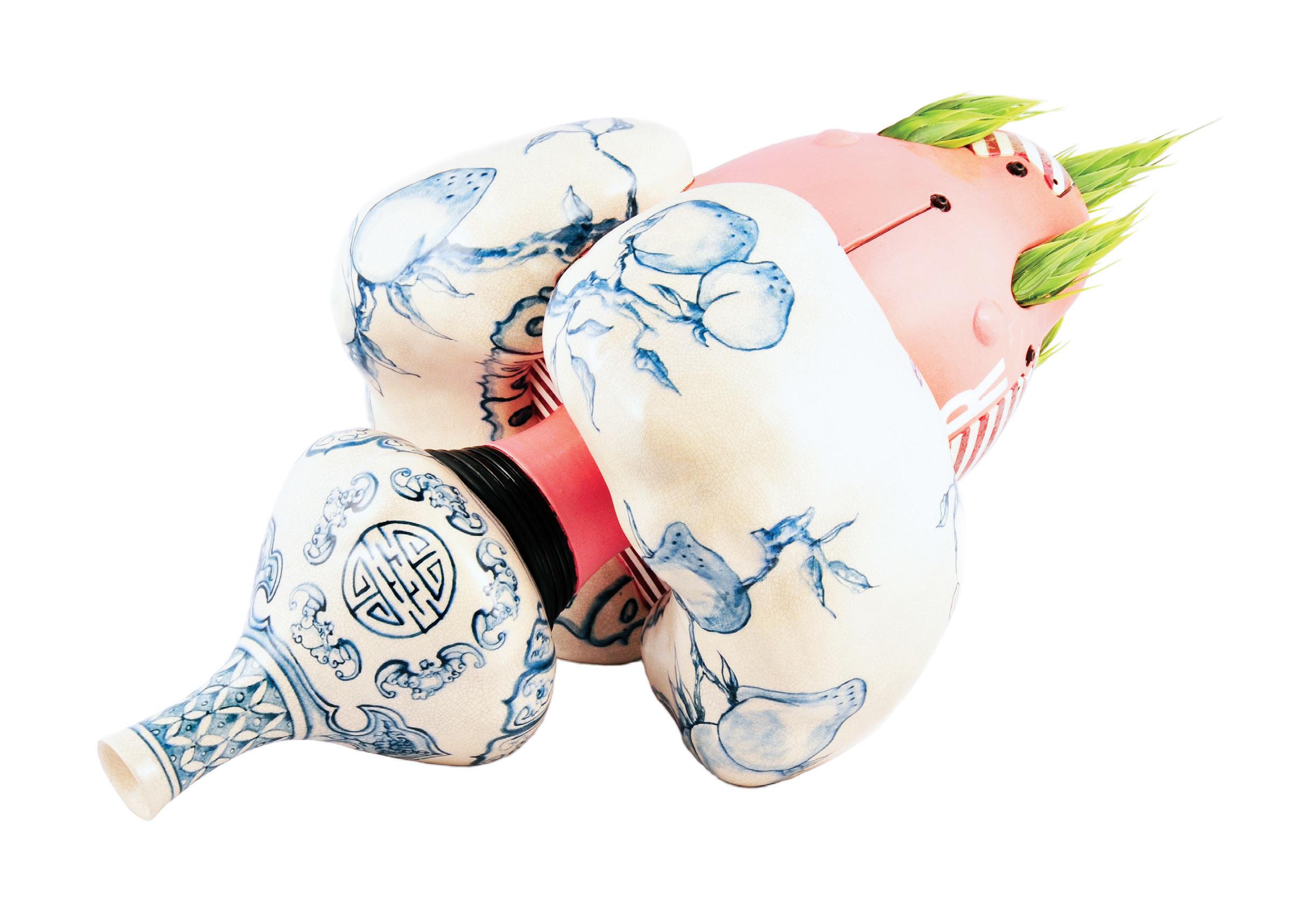
over 40 works by 40 artists, representing a chronological timeline of each year of the evolution of the collection.
Curator Jonathan Smith acknowledges the immense network of artists, members, volunteers, and gallery curators that have worked to build the collection over time, an entity that exists as both a history and an ongoing project helping to drive current discussions around clay and the future of contemporary ceramic art in Canada.
Admission to the AGB is free GalleryHours
Monday: Closed Tuesday/Wednesday10 AM – 9:00 PM Thursday– Sunday10 AM – 5:00 PM
“THE WEIGHT OF CLAY”
Lee-Chin Family Gallery, Dan Lawrie Courtyard, and corridors
Runs until Oct. 8
Don’t miss: The Conservatory, the AGB shop with 2,400 square feet of unique art, jewellery, and gift ideas from an array of exclusive Canadian artists. You can also explore the AGB’s picturesque sculpture courtyard and year-round lush indoor conservatory.
Guilds at the AGB: Burlington Fine Arts Association, Handweavers and Spinners Guild, Latow Photography Guild, Potters Guild, Rug Hooking Guild, Sculpture and Carvers Guild
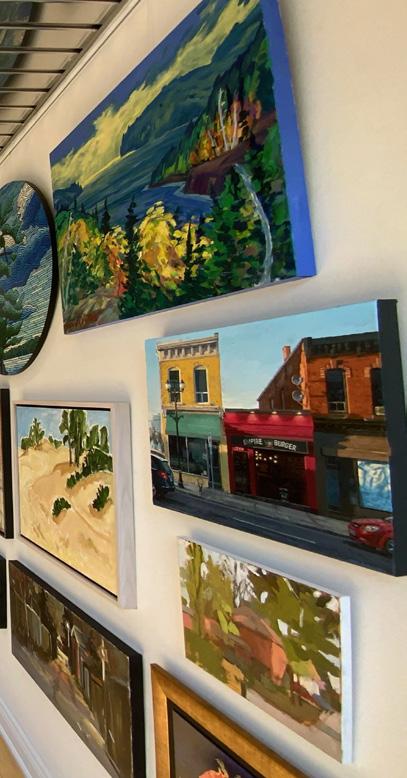
FALL 2023 HCM 37 Art GalleryBurlington | agb.life
“THE WEIGHT OF CLAY” REPRESENTS A CELEBRATION OF THE 40TH ANNIVERSARY OF THE PERMANENT CERAMIC COLLECTION AT THE AGB. PHOTO: SUPPLIED
EARL’S COURT GALLERY IS CELEBRATING ITS 50TH ANNIVERARY.
PHOTO: SUBMITTED
HAMILTON PLACE TURNS THE MARVELLOUS
By JAMIE TENNANT
You might call it FirstOntario Concert Hall, because that’s what its sign says it is.

You might have called it the Ron V. Joyce Centre for the Performing Arts at Hamilton Place, though at 17 syllables, that’s a mouthful of a name.
Odds are, though, that you call it by its “maiden name.”
“If you’ve lived in Hamilton for more than five years, you still call it Hamilton Place,”
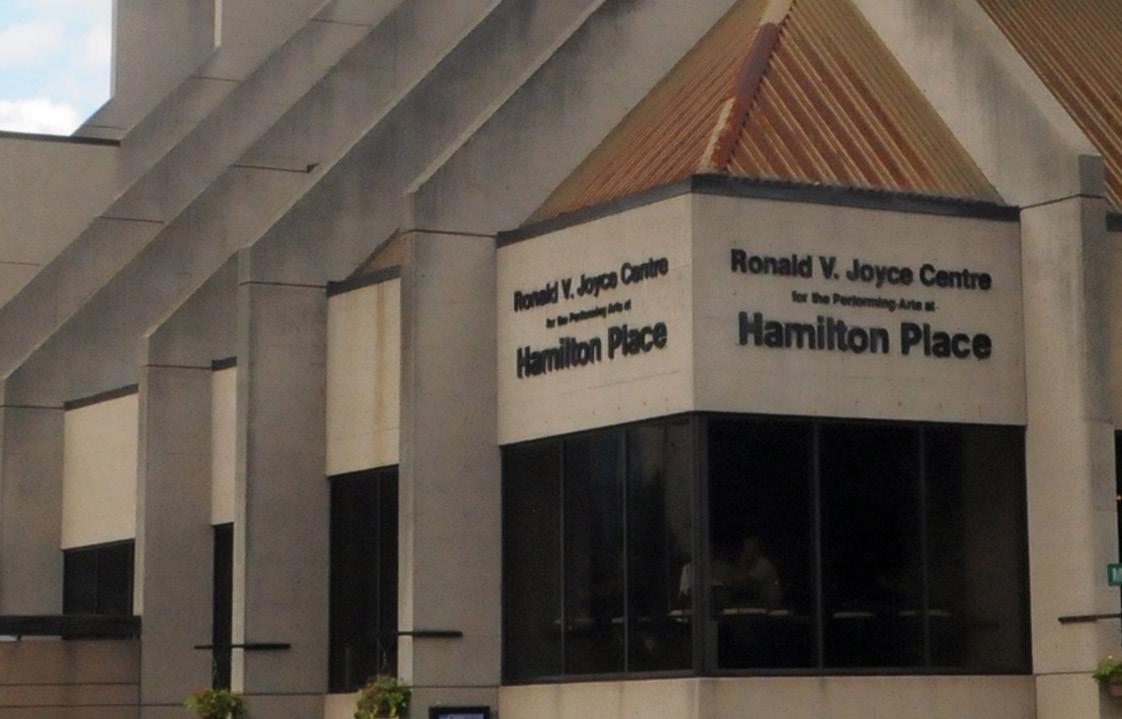
YES, WE KNOW IT’S OFFICIALLY CALLED THE FIRSTONTARIO CONCERT HALL, BUT ITS ORIGINAL NAME ENDURES, AS DOES ITS ACOUSTICAL EXCELLENCE, ITS MUSICAL LEGACY AND ITS IMPORTANCE TO HAMILTONIANS.
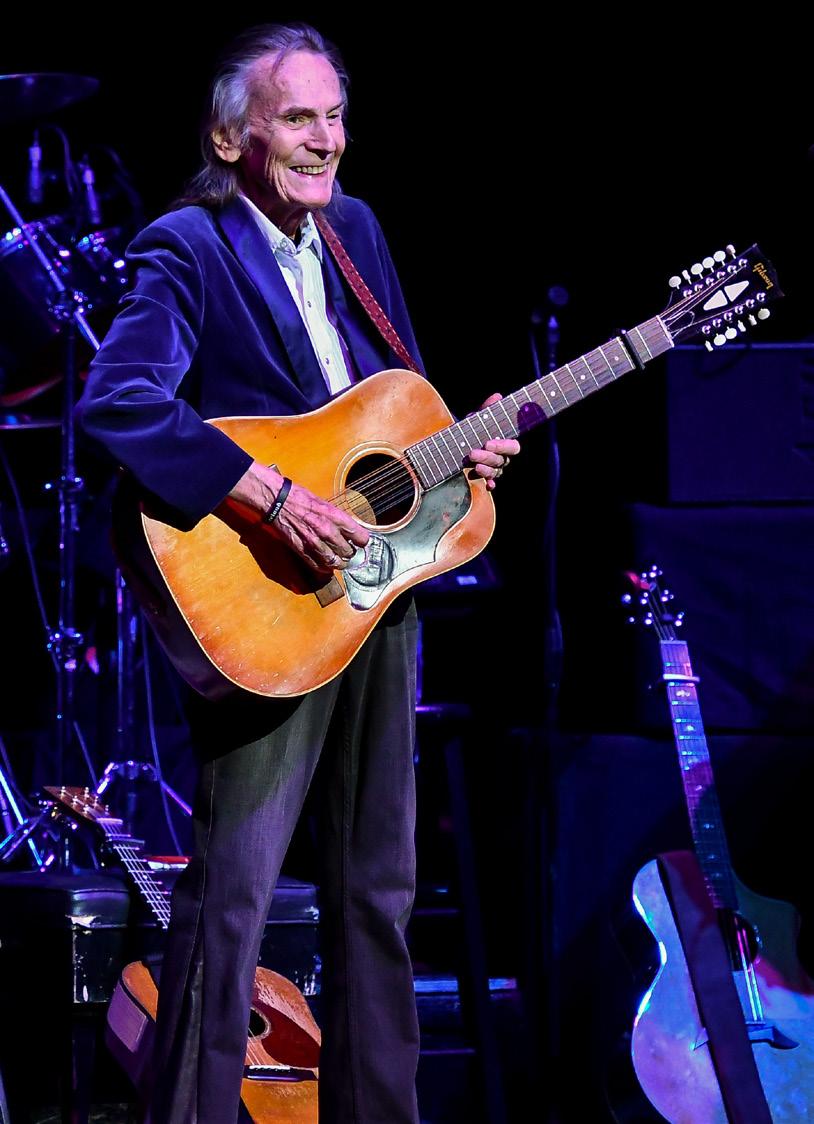

says Andrew Nash, general manager of Core Entertainment. He’s right, of course.
For Hamiltonians, Hamilton Place is iconic. That’s only partially due to its unique concrete construction and 1970s appeal, with an exterior like an accidental retro-futurist/ brutalist mash-up. It’s also because, from the start, Hamilton Place represented the city itself; the physical manifestation of our city’s long-beloved underdog-to-upset narrative.
As far back as 1912, Hamiltonians wanted a new, state-of-the-art, multi-use theatre, but it took us until the 1960s to make it a reality.
That’s when a downtown development plan emerged, with a centrepiece originally envisioned as a theatre, athletic centre, space planetarium and national science and tech centre.
Hamilton Place was to be its cornerstone. When both the provincial and federal governments declined to fund the project, Hamiltonians fought back by digging deep. The money came from City coffers, corporate donors, and donations from individuals. Hamiltonians made 16,000 to 18,000 individual contributions, raising over $3
38 HCM FALL 2023
/ARTS & CULTURE
ABOVE, FROM LEFT, THE LATE GORDON LIGHTFOOT, FOREIGNER AND JANN ARDEN PLAY THE FIRSTONTARIO CONCERT HALL, ONCE KNOWN AS HAMILTON PLACE. SEE MORE PHOTOS AT HAMILTONCITYMAGAZINE.CA PHOTOS: SUPPLIED
million. The final cost was $10.8 million (over $75 million by today’s reckoning).
On Sept. 22, 1973, the 2,200-seat concert hall opened to the public. Inside, the Hamilton Philharmonic Orchestra, conducted by the late Boris Brott, performed a piece penned for the occasion by Galt McDermot (the creator of the musical Hair). The late singer Salome Bey performed with the 64-voice Ontario Youth Choir. Outside, another 20,000 people partied to the sounds of Hamilton’s Crowbar and celebrated with fireworks.
Hamilton Place was, and to this day remains, a marvel of acoustical engineering, thanks to architect Trevor Garwood-Jones and acoustical consultant Russell Johnson. The theatre’s free-floating balconies were a key design feature, and most of the aesthetic choices – the cedar-clad acoustical shell, the depressed pyramid configuration of the bricks, the tapestries – are actually critical acoustic elements.
“The room would have been designed with pencil and paper,” says Michael Stewart. “We didn’t have CAD programs back then. Here’s a pencil, do the math, and give us the results. And they nailed it.”
Stewart’s father, Don, was the original head of audio at Hamilton Place. Today, Michael holds that title. To say he grew up at Hamilton Place is not much of an exaggeration.
“The building has pretty much stayed the same,” Stewart says. “It is built like a tank. There have been technical updates since I’ve been here – the new sound system, the line array, new consoles – but the fundamental acoustics still hold their own as some of the best. Roy Thomson Hall was designed and built years later, yet they’ve had nothing but issues with their acoustics.”
The HPO has been a resident of Hamilton Place since it opened. Music director Gemma New has worked in concert halls around the globe, and she, too, recognizes the distinctive qualities of their home base.
“There’s enough space around you that you can be in your own moment but also have that profound collective experience, which is why we go to watch a live concert,” says New. “I love the space. I really think it’s one of the best halls in the world.”
For New, it’s not simply the audience that benefits from Hamilton Place’s design. “For us as players on stage, it’s such a beautiful place to make music,” she says. “In many other halls there are ‘dead spots’ where people can’t
hear other players on stage. We don’t have that in Hamilton. People can hear each other, so they can play together more freely and comfortably, and we find these very intimate moments because of that.”
Back in 1973, word of Hamilton Place spread quickly among bookers, community groups, companies and entertainers. Inaugural GM George MacPherson worked along with the City and a board of directors to make the first season count, and though everyone expected it to run a deficit, the hall made a profit. Those pro-Hamilton articles appearing in Toronto newspapers over the last decade? They appeared in 1974, too, and Hamilton Place was always mentioned as one of the reasons Hamilton was on the ascent.
The honeymoon was, naturally, shortlived. Problems and challenges – real, imagined, and invented for the purpose of creating a political football – began to arise. Ushers went on strike. Scandals abounded. Rental costs grew too high for community groups. The list goes on. As early as 1979, The Hamilton Spectator wanted to know: “Why isn’t it working out with Hamilton Place?”
In other words, Hamilton Place was just like any other concert hall, civic project, or business in Western civilization. Anyone who expected more was being unrealistic.
What hasn’t changed – even after hirings, firings, name changes and the eventual shift from public to private operation – is that Hamilton Place is still as impressive as it was on day one. Many of us, probably most of us, have been there in our lifetimes.
“It’s been a meeting place for Hamiltonians since it opened,” says Nash, who became the GM of CORE in 2019 – just in time to struggle with the COVID-19 pandemic. The excitement of returning to the room, despite masks, bans on food service and the like, was palpable for him, the staff and the public alike.
“You can’t replace that feeling of sitting in your seat and the lights going down,” says Nash. “The excitement building for the main act to hit the stage. Streaming, drive-in shows, they helped bridge the gap, but you can’t replace the live experience.”
Hamilton Place has hosted musical heroes, comedy legends, television programs, award-winning musicals, Netflix specials, fundraisers, and so many other things that compiling a list would be a pointless endeavour. What has set it apart, for Nash and many others, is the other stuff we take
MEMORIES OF HAMILTON PLACE
Graham Rockingham (former music editor with The Hamilton Spectator): “I’ve seen many great shows at Hamilton Place. Leonard Cohen before he took his comeback tour to stadium-sized venues. The Tragically Hip chose to perform back-to-back concerts there when they could easily have sold out Copps Coliseum. Wilco, Wynton Marsalis, Dianna Krall, the list goes on. Hamilton Place was always a gem, as good as anything Toronto could offer.”
Gemma New: “I always enjoy those Holly Jolly Sing-Alongs, where we bring up the lights. That has always been a really joyous occasion, singing at the top of our lungs at the holiday season. There was Holst’s ‘The Planets,’ and Mozart ‘Requiem’ with the Bach Elgar Choir and the Kitchener Waterloo Choir. There’s so many memories.”
Michael Stewart: “Gordon Lightfoot. Just to see him, it was so magical. My first show (as staff) was Henry Rollins doing spoken word. I remember doing soundcheck, how loud the monitors were. My knees buckled when I went up and tested his mic. I said Henry, ‘Are you deaf?’ And he kinda said, ‘Well, I played with a band called Black Flag, and I’m like, oh, right.”
for granted, like dance competitions, recitals, graduation ceremonies. When we celebrated the life of Teenage Head’s Gordie Lewis, we did it at Hamilton Place. It is where we come together to be entertained, to entertain one another, to talk to one another, to take part in that profound collective experience that Gemma New talks about. There are few places like it and 50 years on, it’s still part of our collective experience.
No matter what we call it.
Hamilton Place celebrates 50 years almost to the day with the HPO’s Gemma New leading the orchestra in a celebratory season-opener “Gemma Conducts Schumann & Mendelssohn” on Sept. 23. n
SOUND ON FILM
SCORE COMPOSERS NATHAN FLEET AND MIKE TREBILCOCK
TALK ABOUT THE BUSINESS AND THE PROCESS OF SETTING MUSIC TO MOVIES AND TV.
By JODY ABERDEEN | Photos By JON EVANS FOR HCM
Music is often the beating heart of a film or TV show. Take the score away or change it, and no matter how excellent the writing and acting may be, the experience just isn’t the same.
Even if you don’t consider yourself much of a film nerd, there’s surely one cinematic score that has touched, moved, and inspired you, whether from a big-budget pop culture sensation or a small independent film. This also applies, of course, to television, which has seen many memorable and highly impactful soundtracks emerge from hit shows.
What goes into creating cinematic music?
Two Hamilton musicians-turned-composers know the process better than most: Mike Trebilcock and Nathan Fleet.
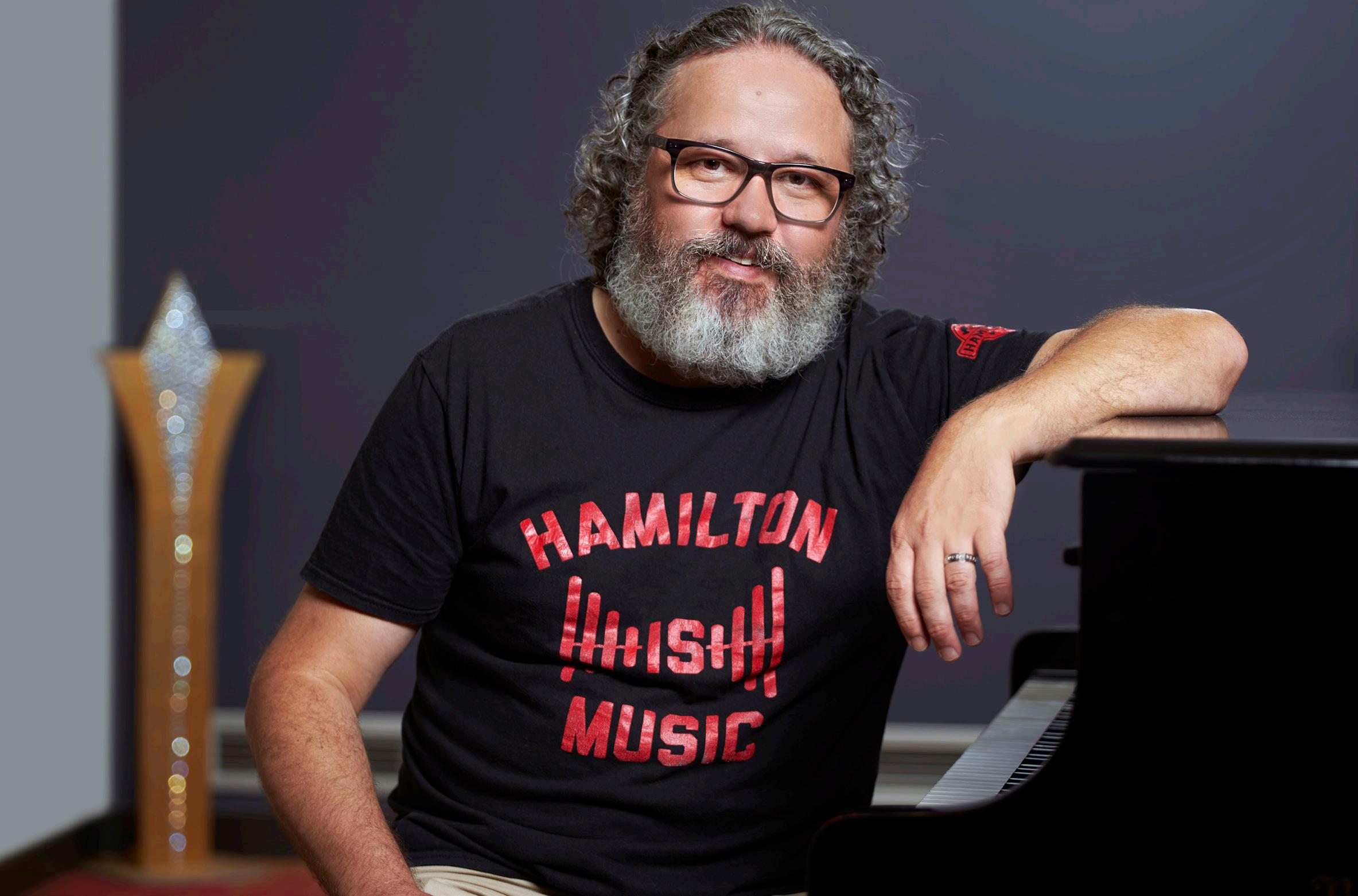
The leader of the legendary punk band The Killjoys and the singer, songwriter, guitarist and producer of horror-rock band Sematary Spawn, Trebilcock has also been an awardwinning film composer for over 20 years, with credits including the horror-comedy Crabs!, The Fight Machine, and numerous others.
Fleet has been the director of the Hamilton Film Festival for 19 years and most recently founded the Hamiton School of Media Arts in July 2022. A longtime film producer and composer of original music via his company
Bluepick Media, Fleet most recently directed Wild Child, a family-friendly wilderness challenge series for kids for Bell Fibe.
The two recently shared their insights on the artistry and business of film scoring with HAMILTON CITY Magazine.
THE BASICS
“When you write for cinema or TV, you’re serving the story,” says Fleet, “whereas as a recording artist, you are serving yourself, and then the audience.”
The cinematic composition process ideally begins in the pre-production stages of the film. The composer and director meet to
40 HCM FALL 2023
/ARTS & CULTURE
PRODUCER, COMPOSER AND FILM FESTIVAL DIRECTOR NATHAN FLEET SAYS A FILM SCORE MUST ALWAYS SERVE THE STORY.
map out “sketches” of what the music could sound like. Alternatively, Fleet notes, you would meet during post-production, after the principal photography has been completed, and have a “spotting session,” deciding where the music should go, what it should sound like, and what the purpose of the music is (for example, creating tension, foreshadowing, picking up the pace of the scene, and so on).
Fleet notes that, while not ideal, sometimes during editing the editor or director will create a placeholder “temp score,” usually music from an existing film or piece of music, then go to the composer and say, “we want this, but just change a few notes.”

However, often the editor and director grow so attached to the temp score, there’s no way for the composer to match it with their original music. “Hopefully you get on board early enough where they can use your music in the temp positions. I had to do a sound-alike version of Metallica’s ‘Master of Puppets’ for a TV show once. Not impossible, but also not possible at the same time, but I did it, and it aired!”
Trebilcock will often come on board at the script stage, making notes and musical sketches based on that. “I’ll write based on what I feel from watching the movie in my head,” he says. “On the other hand, sometimes I’ll work from a ‘locked picture,’ which means the movie is complete and ready to go, except for the audio elements. Sometimes a movie is delivered to me in chunks, which I score one at a time.”
Trebilcock can usually “hear” what needs to be done while watching a movie with no score, almost like he’s taking it down as he goes. “It’s more like I’m playing the movie, and accentuating dramatic turns that are already present. I watch the actors’ eyes a lot, picking up on turns that might be less obvious.”
WHERE TO FIND COMPOSING GIGS
“I always say that no one is looking for you until they know you exist,” says Fleet. “You have to put yourself out there. The city now has production companies, film studios, film festivals, distribution, and hundreds of crew members living here. Meet directors, producers, and editors. Also try to meet some music supervisors who may be able to sync license your existing music in shows.”
As a longtime fan of horror, sci-fi, comedy, and cult films, Trebilcock sought out productions in those genres. “Strange and weird stuff, I speak that language,” he
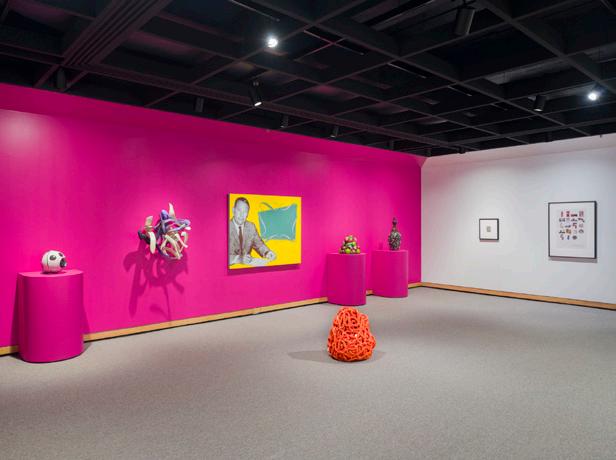
says. “I would get in contact with people I thought were making really great, creative stuff that resonated with me,” adding that sometimes it could be a project as small as writing a song to play in the background of a scene, and other times, a full score. “I’ve been lucky enough to find some great working relationships and friends who I’ve worked with on multiple projects. Now, thankfully, the strange and weird stuff seeks me out!”
While the majority of his work still comes from the U.S., Trebilcock has worked with a few local filmmakers and has even had screen time in a few films such as Ouija Shark 2 and Creature from Cannibal Creek. Trebilcock also facilitates kids summer camps at the Hamilton School for Media Arts.
“As a composer for film, I think it’s important to keep your filmmaking chops up as well as the musical ones – so that’s very helpful, since I haven’t been able to find the time to make my own in a couple of years.”
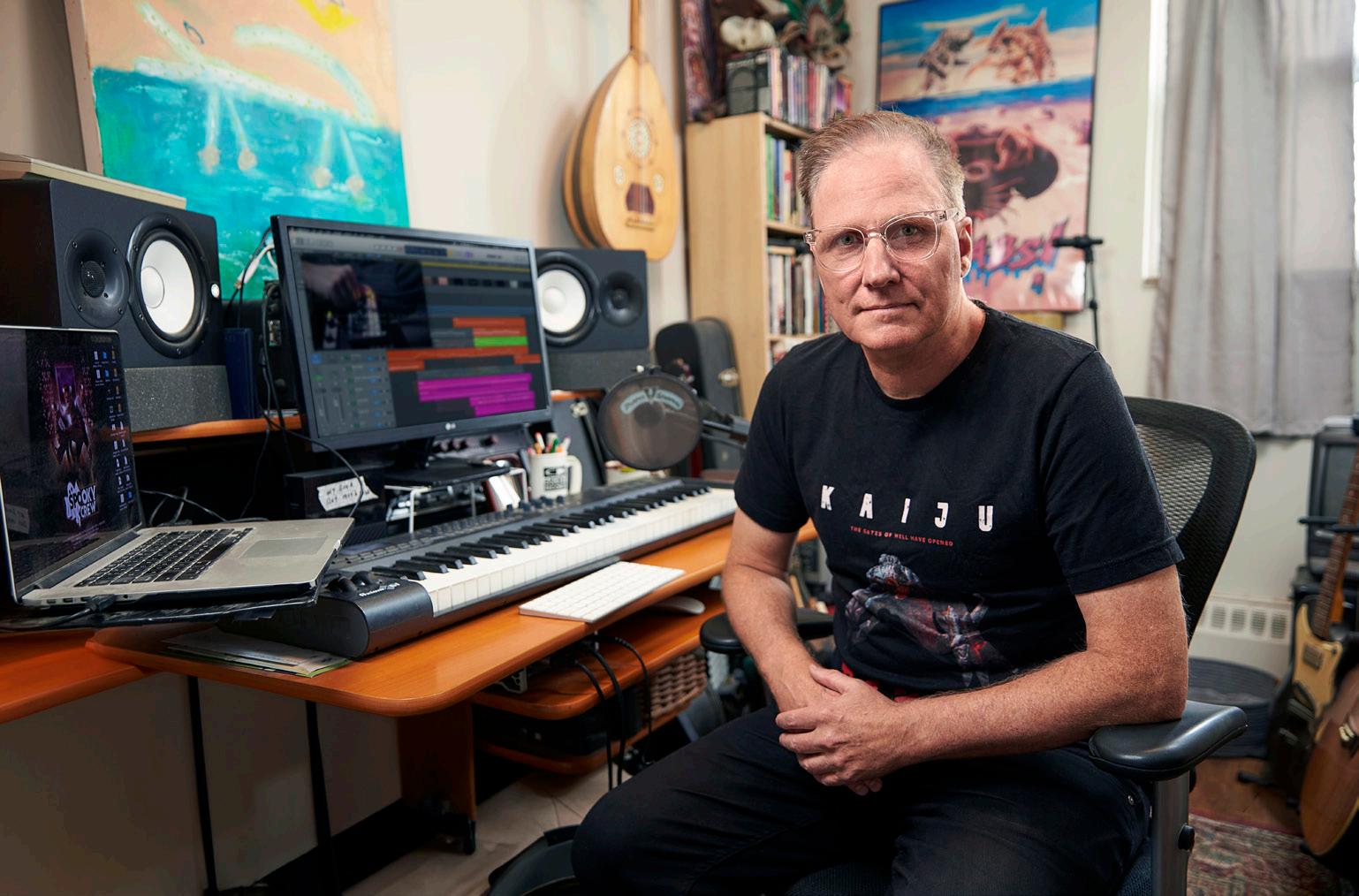
THEIR TOP SCORE PICKS
For Fleet, the best is the original 1977 Star Wars soundtrack by John Williams. “Nothing hits me harder than that opening track,” he says. “At age 6, I was hooked. At age 51, I’m still hooked. It can take you to another galaxy!”
Says Trebilcock: “Bernard Herrmann was a big one, although I didn’t know it at first. As a kid I loved movies like Jason and the Argonauts, Journey to the Center of the Earth, The 7th Voyage of Sinbad, then Hitchcock, Scorsese, DePalma, and finding out it was all scored by the same guy was pretty mindblowing! His scores are always unique, letting the movie have its own voice, yet always appropriate, fitting the movie like a glove.”
He adds Toronto’s own Howard Shore as an honourable mention, and his music for David Cronenburg’s films from Shivers to Crimes of the Future. “Just beautiful stuff. I used to walk around with headphones on listening to an audio recording of The Fly. Just audio with dialogue, sound design, and music and it could still make me cry.” n
FALL 2023 HCM 41
COMPOSER MIKE TREBILCOCK CAN USUALLY ‘HEAR’ A SCORE IN HIS HEAD AS HE’S WATCHING A MOVIE WITH NO SOUND.
HAMILTON CONSERVATORY FOR THE ARTS OFFERS THEATRE, DANCE, MUSIC, AND VISUAL ARTS CLASSES, WORKSHOPS AND CAMPS FOR CHILDREN, TEENS AND ADULTS, ALONG WITH PERFORMANCE OPPORTUNITIES.
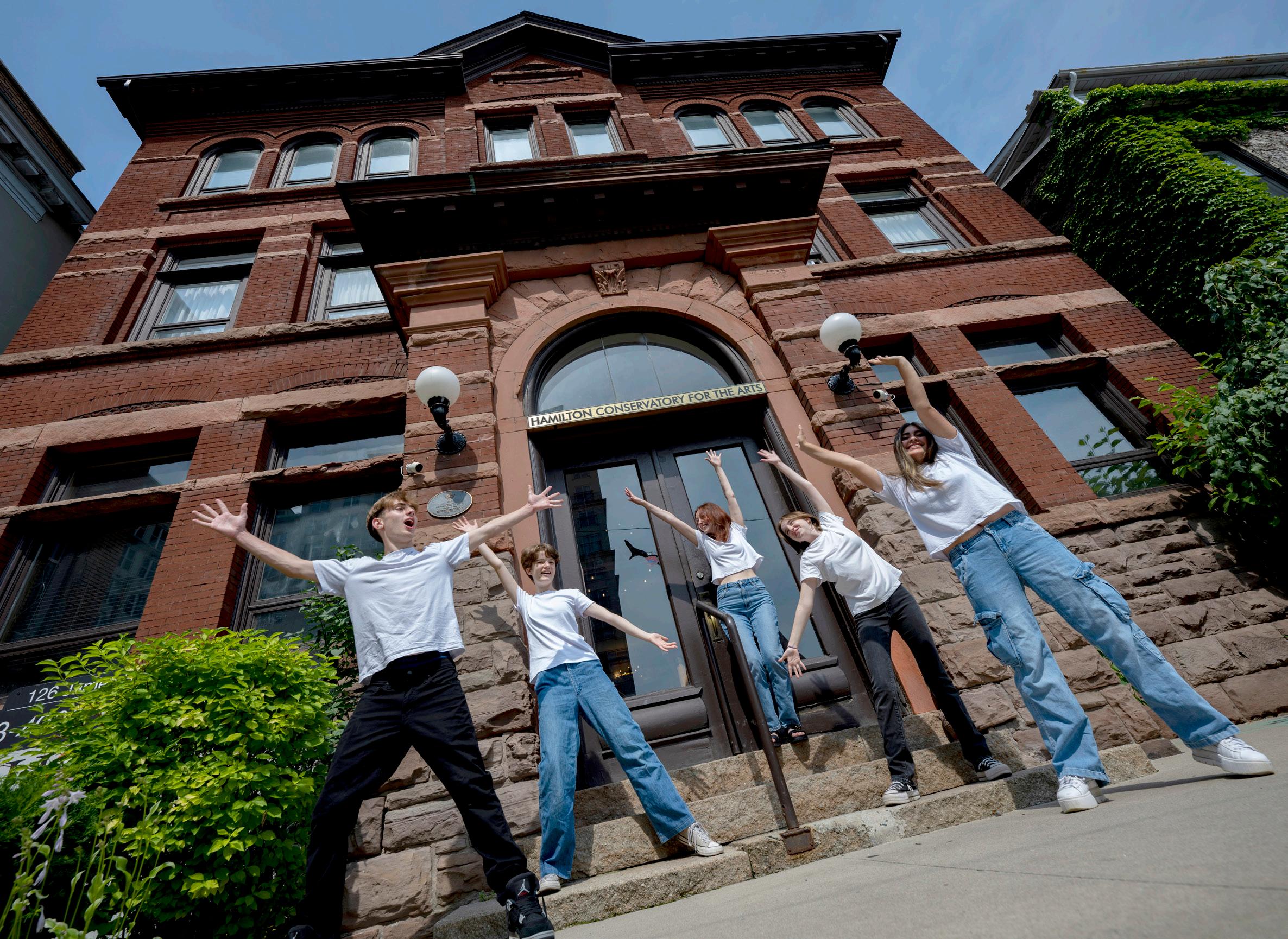
‘THIS IS THEATRE, BABY!’
By ANNIE ROSENBERG | Photos By JOSEPH AMARAL FOR HCM
42 HCM FALL 2023 /ARTS & CULTURE
TEACHER STEPHANIE HOPE LAWLOR, CENTRE, WITH SOME OF HER STUDENTS OUTSIDE
THE HAMILTON CONSERVATORY FOR THE ARTS.
In the attic of the Hamilton Conservatory for the Arts, Jay Watson hooks her thumbs through her jeans, puts on a top hat and strikes a pose. “This could be a fun prop to play with.”
“Not bad,” says Almeida. “My prop is dead energy.”
Beside them, a grey-hooded teenager balances a Starbucks coffee and a script. “I’m Luka,” he announces.
Here, the acting students are rehearsing the spring showcase. This year’s offering is The 39 Steps, a juicy whodunit with a heaping dose of Monty Python humour.
Directing the showcase is acting teacher Stephanie Hope Lawlor, who is sitting atop a wooden desk, her back rod-straight as she jots copious notes in her script. “Let’s go from the top of the scene. Take two minutes, grab some water, and pre-set your props.”

One student picks up his dog-eared script; another moves a prop; another pins a sticky note to a crowded call board: “AUDITIONS!”
“If you blank, just call ‘line’,” Lawlor says.
The students gather on the small stage at one end of the room, where Bridget steps forward. “Welcome to the London Palladium theatre.”
“Nice! But could you sell it a bit more?”
“Welcome to the London Palladium theatre!” Bridget calls out.
“Perfect!”
Luka raises his hand. “Can we be like, whispering and stuff in the background?”
“Absolutely!”
Lawlor’s evolution from actor to teacher and head of HCA’s theatre department began in Toronto.
“I was living in TO for a few years after I finished theatre school,” she says. “My apartment was kind of … well, the ceiling was leaking and the floors were slanted. I was working a part-time job just to make ends meet so I could go on auditions. Something had to change, to move.”
Her move from Toronto to Hamilton was a serendipitous one.
“I booked a gig doing The Sound of Music in Hamilton, my hometown. Luka’s older sister played one of my siblings and his mom was one of my acting teachers at the Conservatory. I gave up my apartment in Toronto, thinking I’d go back in a couple of months, but I ended up staying after the show ended. I needed a job.”
Lawlor had taught for a number of
years, so when the HCA needed a theatre department coordinator, Lawlor jumped at the chance – and is now one of four theatre instructors among 32 HCA faculty.
“When I came back to Hamilton after growing up here, I walked into the Conservatory and thought, this is a building full of stories. What better place to be creative and share the knowledge I gained at school and in the industry than right here?”
Conservatory founder and artistic director Vitek Wincza’s trajectory has been more circuitous. While on tour in Hamilton with Poland’s Mazowsze Dance Company, he defected to Canada with $200 and a dream of presenting dance to the world. In 1997, he seized his chance and bought the building at 126 James St. S. that would become the Hamilton Conservatory for the Arts.
“The Conservatory is an arts hub; a place where you can be inspired no matter your interest or level of engagement. We want to create an environment where students can thrive. And we want to inspire them to do that,” says Wincza.
“It works both ways,” Lawlor chimes in. “My students inspire me every single day. One big shift I had in teaching was that instead of feeling the pressure of going into class and saying, well, what am I gonna do to inspire them, it became, what will I see them achieve today?”
“Watching the students work is a great feeling,” Wincza adds. “It gives me such a sense of purpose. Creating a welcoming environment is so important because art belongs to everybody. Not just talented kids
NEED TO KNOW
or rich kids, but everyone.”
Back at the rehearsal, Lawlor leaps up on the stage, where Angie grips a fake revolver.
“Let’s work the gun bit,” Lawlor says. “You just made your upstage hand your downstage hand. What happens when you do the bang with your downstage hand?”
She takes the gun, demonstrates the action.
“Can we scream at the gunshot?” Luka asks.
“Yes! I would love it if you did!” She thumbs through her script.
“Make sure you’re still working on your lines when you’re not in the scene,” she /continued on next page
Hamilton Conservatory for the Arts founder and artistic director Vitek Wincza graduated from the State Ballet School in Gdansk, Poland, and performed for the Musical Theatre of Gdynia, Poland; the Ballet Theatre of Lodz; and the National Dance Company Mazowsze, where he toured throughout North America. After several performances in Hamilton Place, Wincza decided to stay permanently in Canada.
In 1982, after his defection, he operated his own dance school in Burlington and Hamilton. On Aug. 20, 1997, Wincza revived and expanded the 100-year legacy of the Hamilton Conservatory of Music into the Hamilton Conservatory for the Arts with over 100 programs in music, dance, drama, and visual arts, offering workshops and camps for children, teens and adults along with performance opportunities. HCA also operates two charitable arms, including Arts For All, which grew out of Wincza’s desire to nourish and inspire students facing barriers. Arts For All was launched in 1999 as Culture for Kids in the Arts.
In 2011, Wincza was the recipient of the City of Hamilton Community Arts Award and in 2013, he was nominated as RBC Citizen of the Year for Hamilton.
FALL 2023 HCM 43
STEPHANIE HOPE LAWLOR RETURNED TO HER HOMETOWN TO TEACH AT THE HAMILTON CONSERVATORY FOR THE ARTS.
instructs. “Because the minute you put down your script, you forget because you don’t have your safety blanket.”
During the break, students shared their thoughts about Lawlor’s classes.
“I’ve always grown up around masculine stuff like sports,” says Bridget. “I have a creative side to express and I can do that here because she just lets us play and go with the flow. She’s so caring.”
“My favourite thing about this class is Stephanie’s personality,” Almeida adds. “Not too cold and not too hot!”
Helping her students thrive goes beyond teaching acting alone.

“The kids come to learn acting and have fun, too. And some kids really find a home here. I mean, if they go on to become a professional actor, that’s great. But I think for a lot of them, it’s a safe place where they’re celebrated for being creative and goofy and all of those things you try not to be when you’re a kid in front of your friends. And I always encourage them to just be themselves, whoever that is.”
Lawlor says she grew up “so stinking shy.”
“I quit ballet because I was too shy. I quit acting because I was too shy. But I grew up seeing a lot of theatre. I wanted to be an actor, but I didn’t know how. And I came to acting in my own time. So, I wait until the students are ready, until they trust me. I offer them time and space and the opportunity, but I never force them.”
She turns to the cast. “Let’s jump to Cat’s demise.”
“My untimely demise!” Cat protests.
The others watch as Cat performs an elaborate death scene.
“There’s a lot of death in this play,” Jay offers.
Lawlor looks up at the sun, streaming in from the skylight.
“And now I get to work in this beautiful place surrounded by all of this artistic history and magic. For the stars to align like that was incredible,” she says.
“Yesterday, I was sitting on my back porch with a glass of wine, my feet up, putting sound cues together for one of the shows. And I thought, in what other job do you get to go home and do that? It never stops being creative. Because this is theatre, baby!” n


44 HCM FALL 2023
/ARTS & CULTURE
“All you Need Is Love ... Love Is All You Need”
THE HAMILTON CONSERVATORY FOR THE ARTS HAS A MANDATE TO BRING THE ARTS TO EVERYONE.







FOR EVENT INFORMATION GREYCUPFESTIVAL.CA
PARTNERS EXPERIENCE THE GREY CUP
IT IS MEANT TO BE /greycupfestival @greycupfestival @greycupfestival
SIGNATURE
THE WAY
Photography by Tourism Hamilton
CROWN & PRESS: A NEW ART EXPERIENCE
ARTIST JULIA VEENSTRA AND HER FAMILY HAVE OPENED A GALLERY AND CAFÉ ON OTTAWA STREET NORTH THAT AIMS TO ELEVATE ARTISTS AND MAKE ART ACCESSIBLE.
By KRIS OSBORNE
Many great new business ventures were dreamed up during the pandemic. That’s the story of Crown & Press.
The initial idea to open a gallery came about in the summer of 2020, when Julia Veenstra, her husband Doug and their daughter and son-in-law, Abigail Veenstra and Justin Scholman, were vacationing in Deerhurst. Scholman, who has a degree in fine art and history, shared in passing conversation that he’d “love to work in an art gallery.”
This simple statement sparked an idea in Julia Veenstra and catapulted the conversation in a more serious direction.
The “vacation just turned into a business meeting,” Scholman says with a laugh. Soon, Veenstra reached out to her nephew Elias Dummer, who had been helping her with marketing for several years. The idea for Crown & Press, and the business model around it – a gallery and café that makes prints available for every piece – were developed from there. All members of the family, artists and creators in their own right,
began dreaming up what would become a gallery and café like no other in Hamilton.
Veenstra is not new to the gallery world. In the 1980s, before becoming a mom, she studied illustration at Sheridan. She then had five kids and, at the time, worked only for commissions. In 2001, when the kids were between eight and 15 years old, the family moved to Africa to work as missionairies in Tanzania and Kenya. It was there that Veenstra painted people and market scenes, but says that in Tanzania the people were the central element of her work.
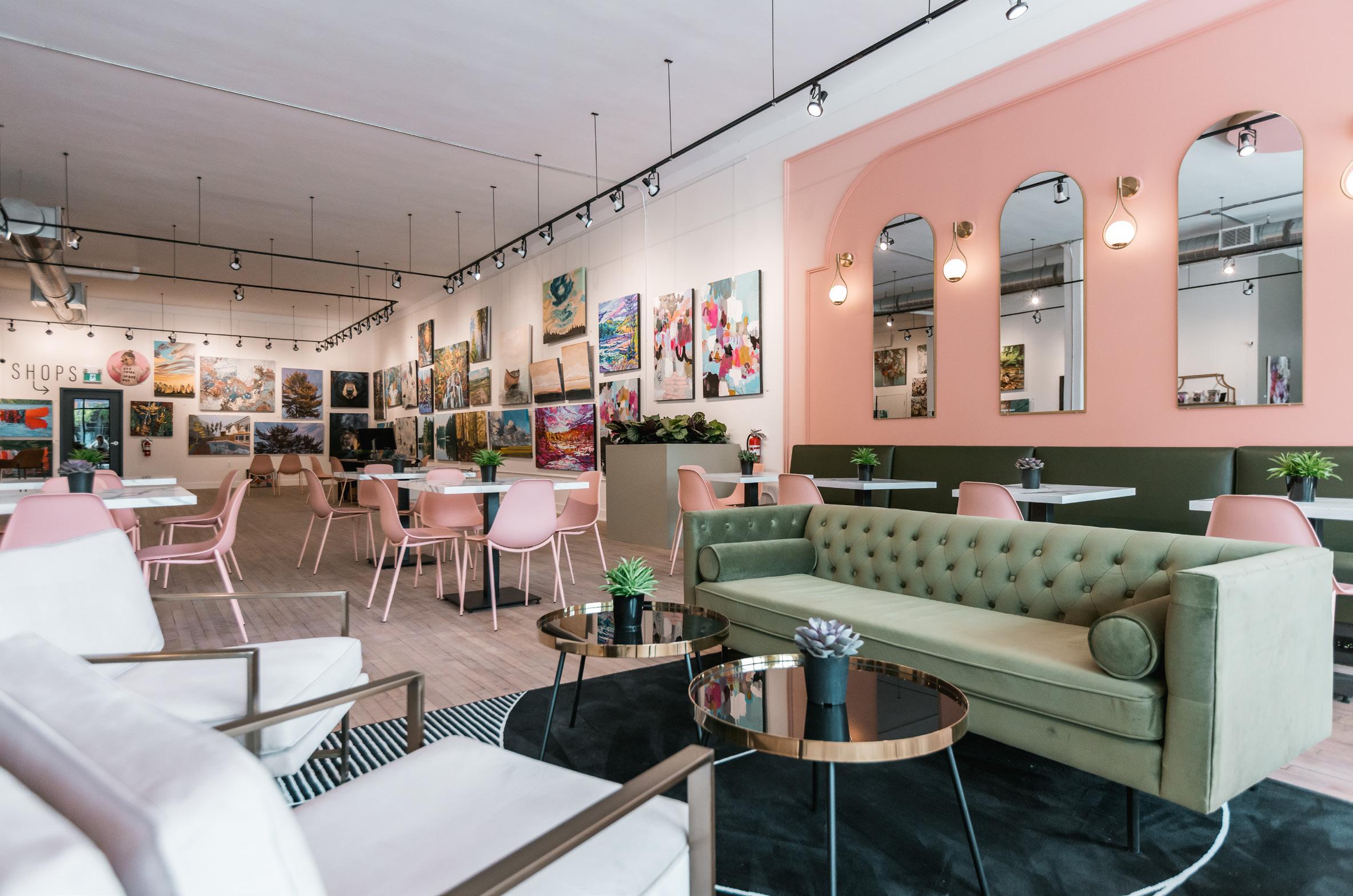
46 HCM FALL 2023 /ARTS & CULTURE
MECATEMUCIMUSAN DESTION NIM NULLAUT UTEM ES MODI ASI DOLORENDAE. ET UTE VELENIET AS ESSUNTI.
PHOTO: KAYLA LEFRANC
“They were so colourful and vibrant against what was sometimes a dry backdrop.” When she returned home, the bright contrast of the Canadian landscape captured her attention and her art was reinvigorated. “The colour of our (Canadian) seasons grabbed me,” she says. Her work began taking on more vivid colours as she aimed to capture the Canadian landscape and what she describes as “special moments.” Veenstra says that we can all track back to a moment rooted in our senses that “comforts and reassures us when remembered,” like a particular smell or taste. Her work aims to evoke emotion and those cherished memories within us.
For over a decade, Veenstra worked out of her gallery on James Street North, successfully creating and selling her art. “Hamilton has been very, very good to me,” she says. She quickly began to outgrow the small space and started her own version of a Square Foot Show, a three-day online art show that sells one-of-a-kind pieces on a first-come-first-served basis for a set $300 price. The first time her show opened, Veenstra sold 80 paintings in the first eight minutes! She knew this was a fruitful way to garner interest in her work and to support other artists. So she, along with her partners, bought the Square Foot Show URL.
The show has grown into a platform that showcases artwork from both established and emerging artists, levelling the playing field for creators and buyers. The idea behind the show “is that all the art is sold at the same price, regardless of the artist’s experience level,” says Veenstra.
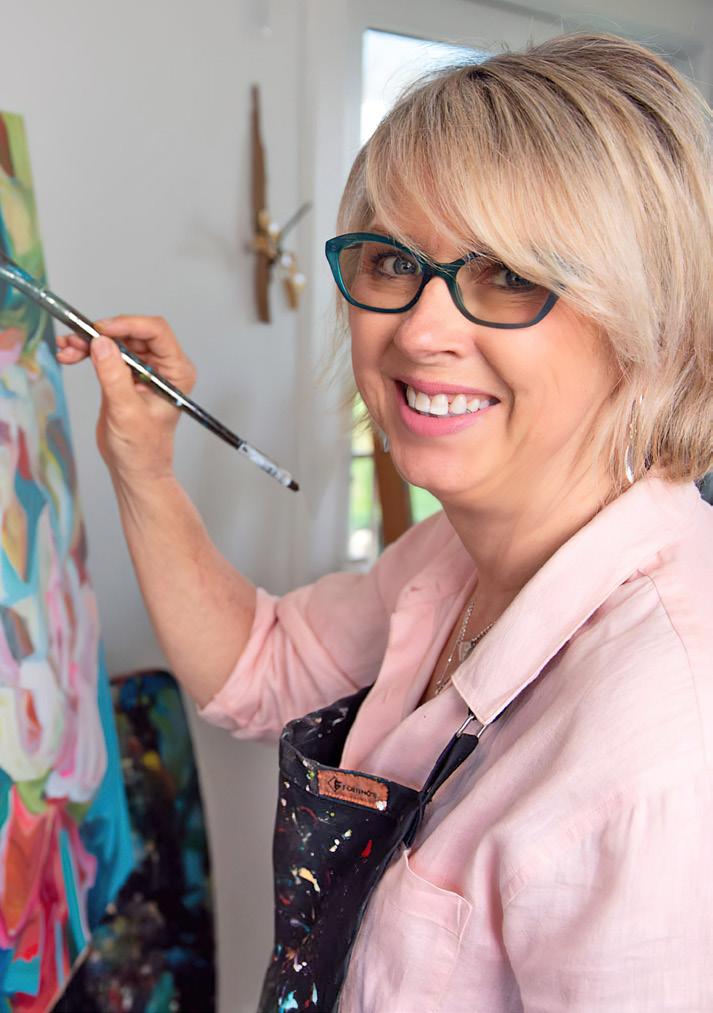
But Veenstra is a tactile, present person who also wanted people to have access to art in person.
This became impossible when the pandemic hit and she was forced to move out of her James Street studio and back home into a converted garage that Doug, a contractor, built for her. There she was able to continue painting and fans had a place to view and buy her art. But the pandemic dragged on and regularly having customers at her home became difficult to maintain. So when Scholman shared his interest in running a gallery, the idea of Crown & Press as a physical space ignited a flame and things progressed quickly.
In February 2021, the family found a 3,500-square-foot storefront on Ottawa
MORE ONLINE: hamiltoncitymagazine.ca
Street and immediately began transforming it. The family convinced Doug, who has more than 26 years of experience in construction, to take on the role of contractor. He was initially reluctant to undertake the massive transformation job, calling it “the biggest (he’s) undertaken.”
But hearing the positive comments from first-time visitors has made the challenges of construction worth it, he says. He now loves spending time in the space and hopes that visitors consider it their own.
Designed by Veenstra’s son-in-law Shawn Cuthil of Refresh Renos, it’s apparent that tremendous thought and care went into balancing beauty with practicality. Cuthill saw it as an opportunity to maintain one of the only Art Deco historical facades in the city.
“I tried to stay true to the curves and elegance of the Art Deco style,” says Cuthill, adding that he didn’t want it to be “too stuffy and fancy for people to feel comfortable.” Cuthill is a contractor, not a designer, which
he says allowed him more freedom “to be a little more daring and unsafe” in his design choices.
In a stroke of luck, the family was delighted to discover, under the existing floor, beautiful hardwood that they were able to restore. The result? Contemporary elegance, with a confident dusty rose and sage green colour scheme.
“I’d love to work in an art gallery.” The statement that sparked Veenstra’s vision has transformed into a literal family affair, with every member involved taking on a partnership in the business. Scholman is now running the gallery in what he calls “a dream come true.” And it was Abigail, who envisioned “a beautiful collaboration between coffee and art.” With 15 years of experience working in cafés and masters’level education and training as an opera singer, she quickly saw how the two worlds could marry.
Since its grand opening in mid-June, the space is already bustling with people who feel like regulars.
“We have a lot to offer here,” says Dummer. “We already have this great little moms group hanging out on the carpet with their babies every Friday. We recently had a baby shower in the space, and we have people from across the city reaching out all the time with different ideas for how to use our space. Our business is built on the idea that art is for everyone, and we want to make it as accessible as possible.”
Dummer, the former frontman of Juno award-winning band The City Harmonic, is especially keen to host events that help make great songwriting more accessible. Having recently moved back to Hamilton from Nashville, he’s inspired by “songwriter nights” at places like Nashville’s The Bluebird Cafe, where songwriters share the story behind their most well-known songs … and then play them.
The family wants the space to be enjoyed by all kinds of artists and art-lovers. They are open to rental proposals, mentorship opportunities and partnerships.
They built a modified catering kitchen in the basement for businesses whose goods they sell, which at the moment is a growing list of local entrepreneurs like Sippy Cup Coffee Roasters, Grain & Grit, Fairweather, Northern Crow, Planted, and Pleasant Cookie Co. n
FALL 2023 HCM 47
JULIA VEENSTRA IS A WELL-KNOWN HAMILTON ARTIST WHO, ALONG WITH HER FAMILY, HAS OPENED CROWN & PRESS. PHOTO: TIM CARR scan the qr code to see a full version of this story, read about Julia v eenstra’s career and en J oy more photos.
WORKERS’ PICNIC LEONARD HUTCHINSON (CANADIAN 1896-1980) WOODBLOCK ON PAPER ED. 16/50
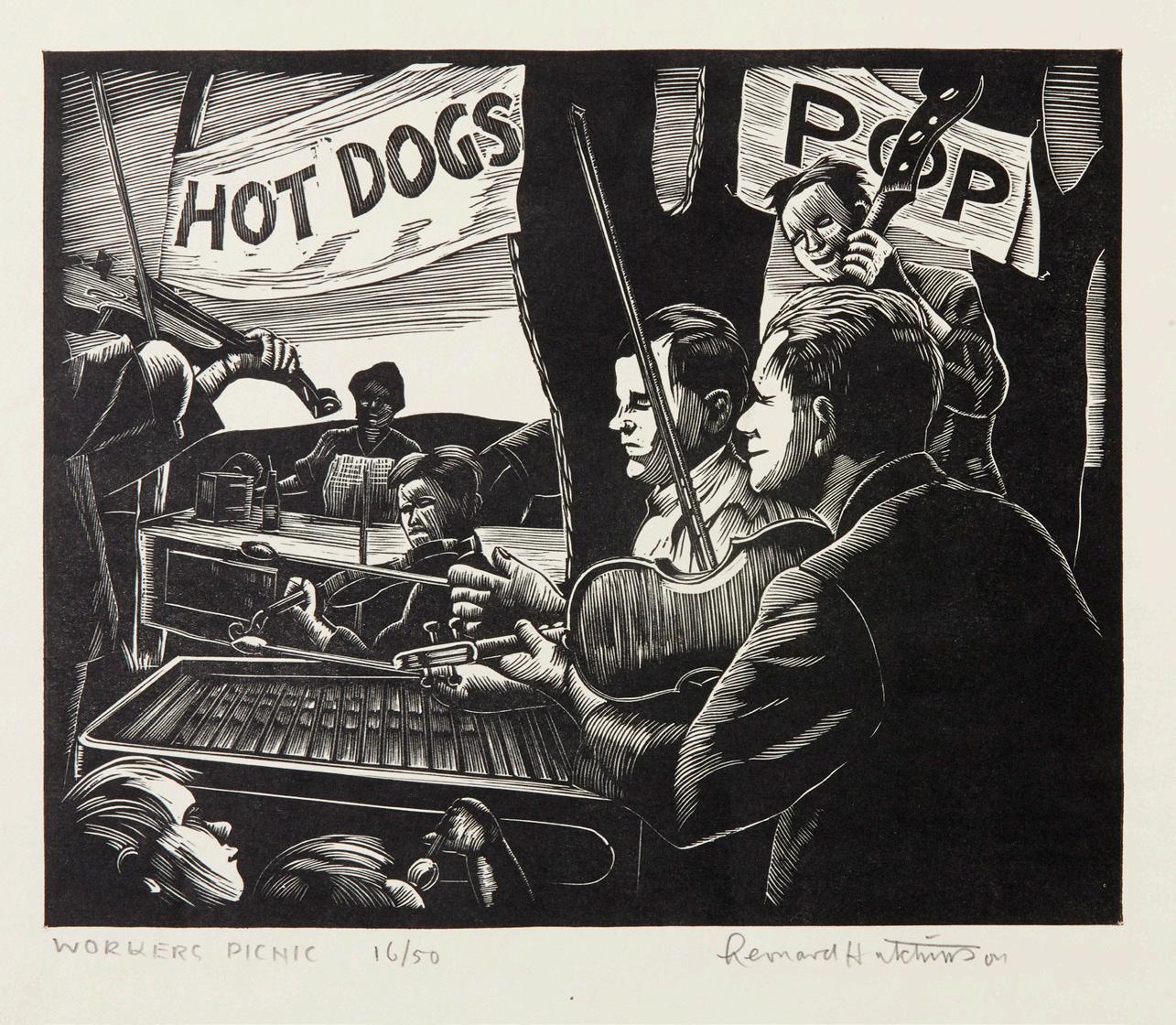
The hidden identity of artist
LEONARD HUTCHINSON
HIS DEPRESSION-THEMED, WORKER-CENTRED ART IS CONSIDERED AN ‘IRREPLACEABLE’ HISTORICAL RECORD. HUTCHINSON UNDERSTOOD WHAT IT MEANT TO BE MARGINALIZED.
By PAUL WEINBERG
Leonard Hutchinson is best known for evocative 1930s Depression-themed and Japanese-style woodblock prints of working people and places like barns, mills, homes, and landscape in and around Hamilton.
In his lifetime Hutchinson produced 136 such prints and they have been exhibited in art galleries across Canada, including the Art Gallery of Hamilton in 1995.
What draws you to them is their directness and simplicity, minus any rhetorical signage
accompanying them, observed the Globe and Mail’s art reviewer John Bentley Mays in 1981, one year after Hutchinson’s death.
Hutchinson also produced drawings, water colour and oil paintings and thousands of photographs, all carrying a similar theme.
Mays called the entire body of Hutchinson’s work “a unique and irreplaceable” historical record of a time period that still haunts us today.
Manchester-born but with Romani roots (which he kept hidden) Hutchinson came
from a nomadic people with a long history of experiencing persecution across Europe. This provided him with an understanding and sympathy for marginalized and deprived folks in his adopted Canada.
Although the man only lived in Hamilton from the early 1920s to the early 1940s, Hutchinson can be called a Hamilton artist.
In 1923, he left Tillsonburg in southwestern Ontario where his parents lived to attend night art classes at the Hamilton Technical Institute. He also did odd jobs, including dock work.
48 HCM FALL 2023
/ARTS & CULTURE
ART GALLERY OF HAMILTON GIFT OF JOHN AND GISELA SOMMER, 1993
Hutchinson subsequently taught at the same school and began producing and exhibiting his art, which he continued throughout the 1930s.
In 1936, Leonard Hutchinson was appointed governor and curator at the Hamilton Municipal Art Gallery (today’s Art Gallery of Hamilton). He belonged to arts organizations and was appointed to various prestigious positions, including associate of the Royal Canadian Academy.
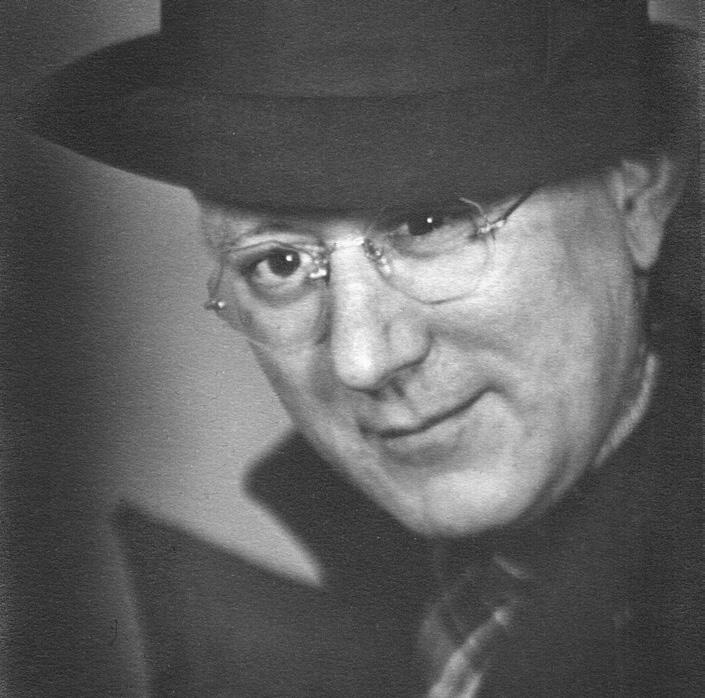
Sometime during the 1940s, Hutchinson made a sudden move out of Hamilton (never to return) to Toronto, followed by taking up extended residence in his new country house near Thornhill. The man dubbed the country’s best printmaker was no longer producing any art, including prints.
Instead, he took up work as a construction foreman.
Grace Inglis, who wrote an essay in book form accompanying a 1995 AGH exhibit of Hutchinson prints, suggested a reason might be that print-making was going out of fashion as the decade progressed.
Some might see this switch in careers by Hutchinson as a downward spiral in one’s life and even a personal failure. But that is not the case for Hutchinson as an English Romani, says his daughter Lynn Hutchinson Lee.
“He never lost sight of the social class he came from.”
In the 1970s, there was a renewed interest in Leonard Hutchinson at a time of cultural and political nationalism.
In that spirit, Lynn, under the name Lynn Hutchinson Brown, wrote the introduction for the 1975 NC Press book, Leonard Hutchinson, Peoples Artist: Ten Years of Struggle, 1930-1940.
There is a certain dichotomy in how Hutchinson functioned in Hamilton, writes Inglis.
In the late 1930s, he marched in solidarity with industrial workers seeking unionization alongside the likes of Sam Lawrence, the future pro-labour mayor.
He also hobnobbed with local Hamilton businessmen, teachers, and other elite figures who were the supporters of the arts in the city.
“My dad was not reserved. He was talkative, charming, flirtatious, eloquent, and enjoyed company,” says Lynn.
The back story is that early in his life Hutchinson had artistic ambitions.
To accomplish that, says Lynn, her father
proceeded to “re-invent himself” as a middleclass Englishman without the social class or racial prejudices of the times getting in the way of a career.
“I think what happens is when you come from an ethnic group and you have negative experiences and there is a lot of hatred, you hide it, “ she says.
Lynn learned as a child that her father’s mother was Romani but paid little attention to her family origins until later as an adult when she fully embraced them.
Leonard Hutchinson was half-Romani. He was born in 1896 in Manchester to Lizzie Lee, a Romani servant. The father was her employer in Manchester, a doctor, and a non-Romani.
The details are murky but it appears that Lizzie left that job and the doctor behind and paired up with a Romani man, Tony Hutchinson. The couple raised Leonard (now Leonard Hutchinson) and three other children.
Lynn never met either Lizzie or Tony. She did hear that Lizzie, her grandmother, was a striking figure with “flaming red hair, dyed with henna.”
In Europe, not all Romanies are constantly on the move in their caravans.
In the case of Tony and Lizzie and their fellow English Romanies or Romanichals (as they are formally called) they were entertainers travelling from place to place.
They made large puppets, each the size of a small child, for shows where young Leonard also played the violin.
“The Romanichals travelled or worked, trading or performing at fairs, as well as for seasonal agricultural work. A large feature of Romani travel throughout Europe was forced migration,” says Lynn.
Just a few years before the First World War started, Tony and Lizzie moved to the Tillsonburg area, joining one of Leonard’s sisters who had settled there earlier.
The couple and Leonard took up residence on one of the vast tobacco farms where they joined other migrants from Europe in the hard work of picking tobacco.
“They were pretty poor when they arrived. They were poverty-stricken,” says Lynn.
Leonard Hutchinson who was illiterate as a child (as was his mother) learned at some point how to read on his own.
Eventually, Tony and Lizzie earned enough money to buy a truck, which gave them the means to perform puppet shows on other local large tobacco farms.
The couple also bought land in the Tillsonburg area and built houses for themselves and Leonard’s sister.
At some point, Leonard went to England to serve in the British army in the First World War and later returned.
Grace Inglis at the AGH wrote that Leonard Hutchinson died in 1980 at the Our Lady of Mercy hospital in Thornhill after experiencing a series of strokes.
His second wife Grace Fugler, originally one of Leonard’s art students in Hamilton and an accomplished print maker in her own right, passed away a little over a decade later.
Fugler was the mother to Lynn Hutchinson Lee, a visual artist who has taken a literary turn. In 2022, she won the Joy Kogawa award for an excerpt from her unpublished novel Nightshade, which was inspired by her family’s experience in the tobacco fields.
Today, in Hamilton, courtesy of Lynn, you can view Leonard Hutchinson’s work on the Pipeline Trail just beyond the Main Street East and Ottawa Street North intersection. Among the murals permanently displayed on fencing or the side of garages are two Hutchinson woodcuts – Websters Falls and Builders of Roads.
This is just the kind of popular display of art that Leonard Hutchinson would have appreciated. n
FALL 2023 HCM 49
MORE ONLINE: hami Ltoncitymagazine.ca
scan
the qr code to see more artwork by Leonard hutchinson.
LEONARD HUTCHINSON HID HIS ROMANI IDENTITY BUT IT INFORMED HIS DEPRESSION-ERA PRINTS, PAINTINGS, AND PHOTOS. PHOTO: SUPPLIED
THE STUBBORN ARTIST
THIS YEAR HAS BROUGHT THREE EXHIBITIONS ABOUT THE CITY’S ARTISTIC HISTORY – AND THE TRIALS OF ITS ARTISTS – AT THE ART
GALLERY OF HAMILTON, M c MASTER MUSEUM OF ART AND HAMILTON
ARTISTS’ INC.
There is a special place on my bookshelf for Climbing the Cold White Peaks, a book produced by Hamilton Artists Inc. in the mid1980s that chronicles Hamilton’s art history from 1910-1950.
I bought my copy, signed by author Stuart MacCuaig, a dozen years ago at Under the Moon, a bookstore that was once a personal favourite of mine on James Street North. A coffee shop has long erased the bookstore’s memory but MacCuaig lingers as an inspiration for the work that has followed to preserve Hamilton’s cultural memory.
Climbing the Cold White Peaks documents a city that once, as a matter of pride, exported all its artists to larger cities before forging its own artistic identity around labour activism and a fledgling feminism. This history taught
By STEPHANIE VEGH
my younger self about the stubbornness and collaboration it takes to remain an artist in Hamilton, where civic support for the arts has been uneven at best.
While Hamilton’s greatest artistic strides came in the decades after those captured in MacCuaig’s book, 30 years would pass before conversations among members of the Hamilton Arts Council (in which I was heavily involved as executive director) would lead to Building Cultural Legacies, an online database that catches us up to the year 2000 through archival materials, articles, and artist interviews. A modest exhibition at the Art Gallery of Hamilton accompanied the platform’s launch in 2019, but this past year has seen an outburst of three further exhibitions honouring our local art history.
“The Bigger Picture: Art in Hamilton
1950-2000” expanded upon the mission of Building Cultural Legacies with a large-scale exhibition at the Art Gallery of Hamilton shaped in part by Bryce Kanbara, who had also been instrumental in organizing Climbing the Cold White Peaks. His determination to organize an open call from the local community resulted in a staggering salon of artworks spanning a half-century of local artists. Wildly eclectic, this gallery hang gave physical form to an era of open-minded experimentation that flourished in less formal social spaces than this.
At the McMaster Museum of Art, “The Contemporaries: This Must Be The Place” recognized eight artists who graduated from McMaster University’s studio art program in the late 1980s and exhibited prolifically as a collective in the years that followed. The
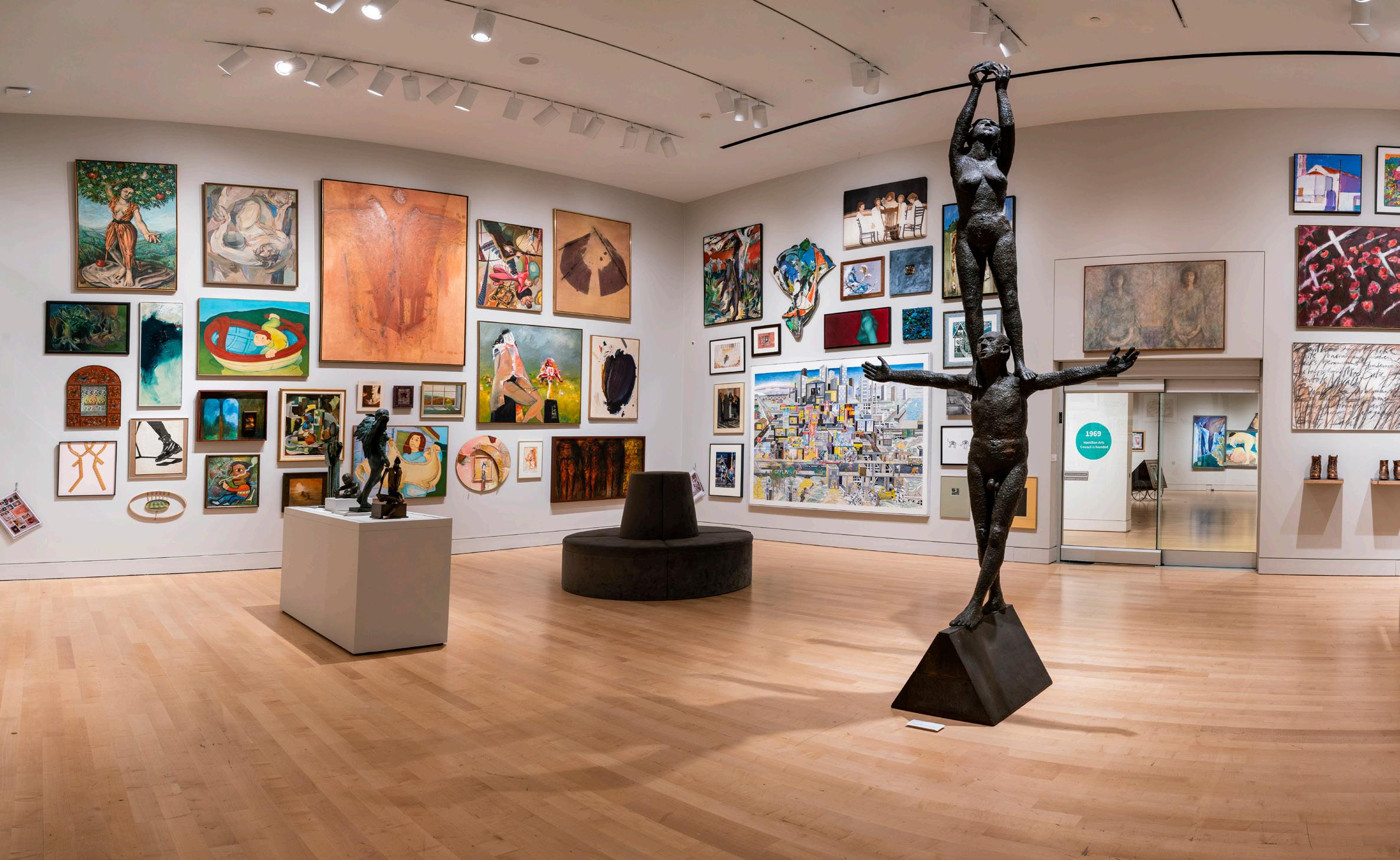
50 HCM FALL 2023 /ARTS & CULTURE
raw physicality of materials and figuration that united their practices has its echoes in the AGH’s salon, while an array of archival materials in the MMA’s exhibition traced the cultural impact of the contemporaries through media coverage of exhibitions in self-made spaces that also hosted punk bands and bar nights.
Co-curated by Kanbara and Paul Johnson, “Group of Seven R.I.P. (Remembering Inc. Pioneers)” at Hamilton Artists Inc. was planned for the Inc.’s 45th anniversary in 2020 before being delayed by the pandemic. Presented this summer, the exhibition elevated a scrappy assembly of stories and scrawled-upon photographs over finished works of art to honour seven personalities who were active in the Inc.’s early days.
Bob Mason and George Wallace are readily recognizable as artists whose public gestures endure in memory – consider Mason’s flotilla of caribou in Cootes Paradise in the 1990s, or Wallace’s iconic, near-androgynous bronze figures found in many public spaces
in our region. Others are notable for the organizational skill and eccentricities with which they shaped our landscape.
Among these is Jackie Kay, a “civil servant and a renowned tap/jazz dancer,” and artistphilosopher David Avon, whose absurdist program for Cable 14 played from a cathode ray-tube television in the gallery. MacCuaig hovers at the margins of these stories as a friend to writer and poet Gleave Harris at the time of his too-soon death. Gordon White also lived a short yet radiantly ambitious life in his tenure as Inc. administrator before succumbing to AIDS in 1988. A statement contributed by Carol Podedworny, now director of the MMA, pays tribute to his enduring influence as a mentor during her first-ever gallery job at the Inc.
Jewel Foster, another Inc. administrator who established experimental film programs during a time of police suspicion and attempted censorship, was lovingly remembered through a textile collage created by her daughter, artist Thea Haines. A note
by Inc. peer Sam Robinson pinned askew to the wall, almost as an afterthought, recalled Jewel and other Inc. members who regularly brought their children into the gallery – a habit that cultivated a future generation of artists who, like Haines, remain active in this city and beyond.
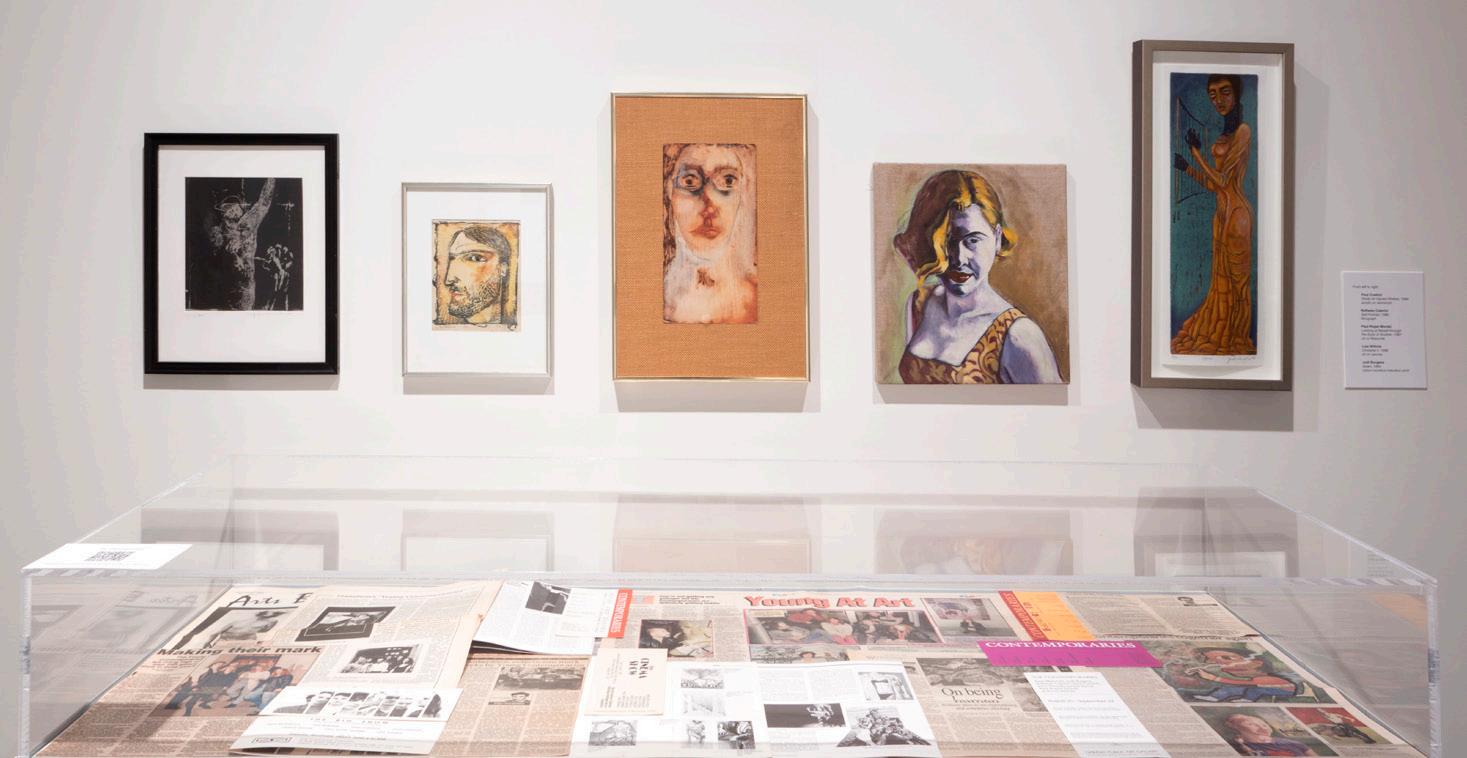
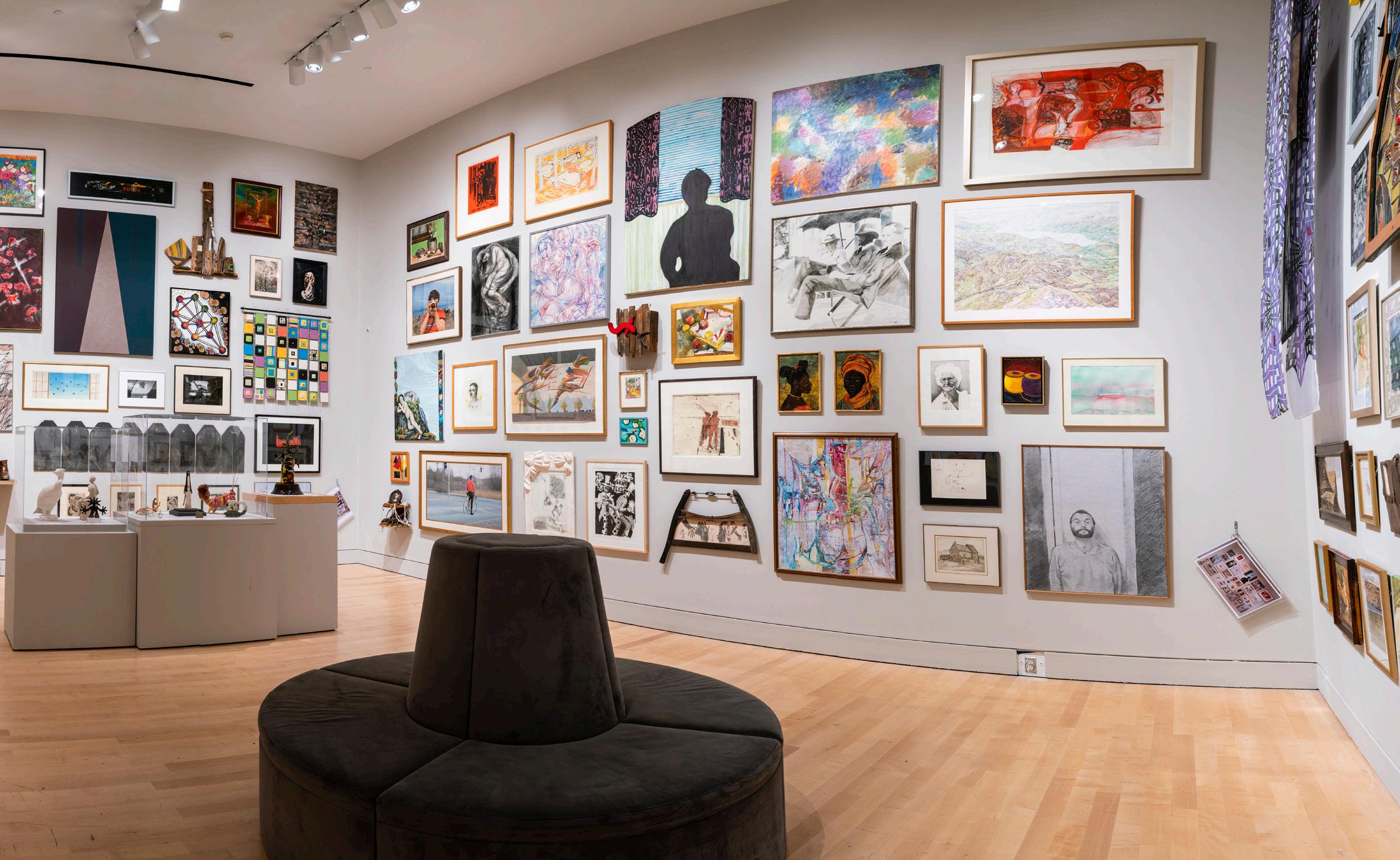
Preserving these stories from one generation to the next – through mentorship, parenthood and gossip alike – is the continuity that any art community needs to endure the gentrifying forces that many saw coming. New buildings and businesses have sprung up on James Street North where empty lots and vacant storefronts once gave rise to an art scene that can feel like a reckless dream in hindsight. I remember viewing luscious oil paintings in a storefront where the floor was caved in to reveal the basement below, a skeletal horse sculpture suspended in a disused kitchen, an apartment gallery strung with yarn, taut like lasers.
“The phrase ‘art for art’s sake’ is not logically admissible for nothing is for its own sake,” David Avon wrote in a reflection among many pinned to the Inc.’s wall. “Everything is in relation to another thing.” In times of rapid change, this work of reclaiming our relations from the past takes on a new necessity – as defiance in the face of erasure, as lessons in adaptation and renewal. n
FALL 2023 HCM 51
MAIN: INSTALLATION VIEW OF THE BIGGER PICTURE: ART IN HAMILTON 1950-2000, 2022. ART GALLERY OF HAMILTON. PHOTO BY: LISA NARDUZZI. LEFT: INSTALLATION VIEW THE CONTEMPORARIES: THIS MUST BE THE PLACE, MCMASTER MUSEUM OF ART, JANUARY 17 – MAY 19, 2023. PHOTO BY BOB MCNAIR.
NATHAN WHITLOCK’S NEW BOOK LUMP FEATURES DARK HUMOUR, UNLIKEABLE CHARACTERS AND THE FATAL CONTRADICTIONS OF A MODERN FAMILY.
By Jessica Rose
In Lump, the latest novel by Nathan Whitlock, even the most unlikeable characters are not quite evil. “In fact, that was the whole point of the book,” says Whitlock. “Even people who have empathy and some sense of self-awareness are capable of awful things. The best people have blind spots.”
A darkly funny novel, Lump introduces readers to Cat, a discontented middle-class stay-at-home mom whose mundane life is set ablaze by multiple crises at once, including an unexpected pregnancy and a cancerous lump in her breast. Cat does what many of us might want to do in this scenario – she runs away from her life and responsibilities. What comes next is a satirical book about relationships, privilege and the need to escape.
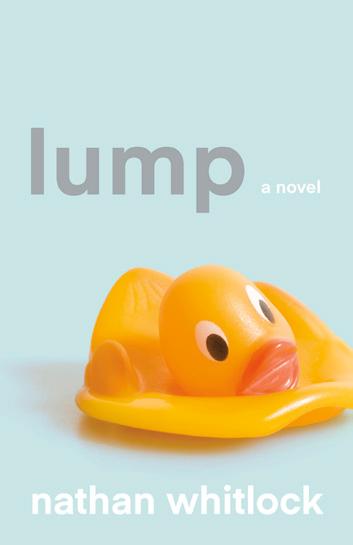
“It’s also about parenting and marriage and class and creepy men who never quite grow up and gentrification and the occasionally fatal contradictions that exist in every modern family. And there is some yoga!” adds Whitlock.
A fairly recent transplant to Hamilton from Toronto, Whitlock wrote the bulk of Lump, which is set in Toronto, before moving here. However, Hamilton is where he did much of his revising and editing.
“My wife (Meaghan Strimas, herself an award-winning writer) sometimes makes fun of how quickly I fell in love with living here – I think it took me about 12 hours,” says Whitlock.
Since moving to Hamilton, Whitlock has launched a new podcast called “What Happened Next: A Podcast About Newish Books,” which features honest, funny conversations with authors. His guests have included local authors Erin Pepler and Nicola Winstanley, among many others.
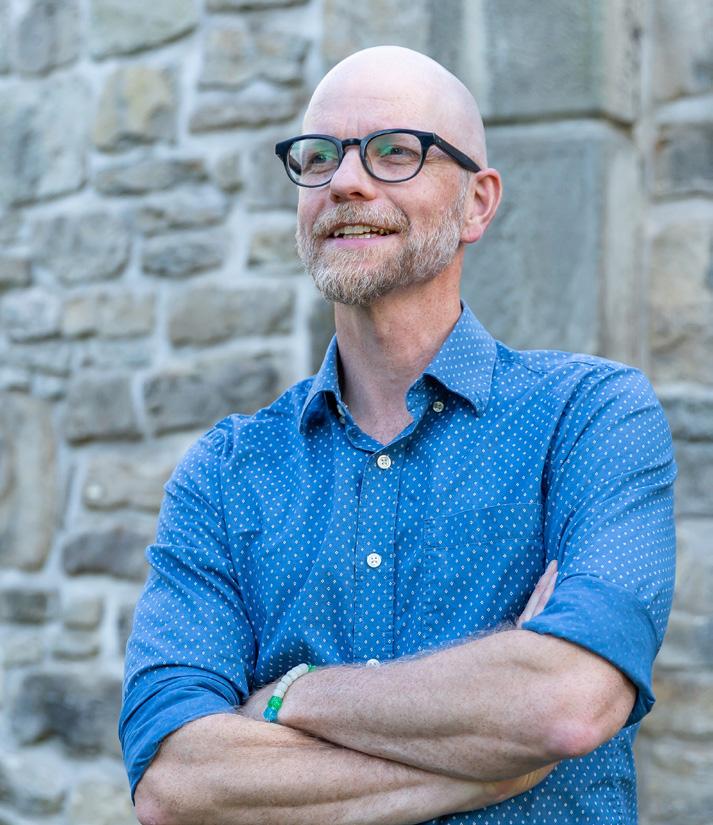
“The best conversations I have with writers are about frustrations and struggles and humiliations: Events where nobody shows up, interviewers that forget the name of the book, the hell of Goodreads reviews, etc.”
Whitlock is also a drummer, recently forming The Approximators, a live karaoke band born at the Sharp Words Book Fair
at Hamilton’s Bridgeworks in February. It’s become a monthly thing at the Casbah, with local writers such as Jamie Tennant, Sheila Murray, and Amy Jones getting up to sing.
“The thing I love about Hamilton’s literary community – which I am also still getting to know – is the same thing I love about the city, which is that there is so little anxiety about status and competition and ‘brand,’” he says. “People here are far less interested in acting cool –which, ironically, makes them cooler.”
So, what’s next? Whitlock is halfway through a messy draft of his next novel. This one will be set in Hamilton.
OTHER LOCAL READS
THE GREAT OUTER DARK
DAVID NEIL LEE
Nearly a decade after it began, David Neil Lee’s Midnight Games Trilogy concludes with its final installment — The Great Outer Dark. The trilogy, in which the Cthulhu Mythos (a fictional
universe, originating in the works of American horror writer H. P. Lovecraft) comes to life, takes place in post-industrial Hamilton, urging readers to not only expect the unexpected but to expect the impossible! In The Great Outer Dark, Lee takes readers on a voyage across the galaxy with protagonist Nate Silva who “arrives home to find Hamilton in the grip of a monstrous triumvirate.” Lee, a master of suspense, once again keeps readers on the edge of their seats.
HOPE FOR THE BEST, PLAN FOR THE REST: 7 KEYS FOR NAVIGATING A LIFE-CHANGING
DIAGNOSIS
DR. HSIEN SEOW AND DR. SAMMY WINEMAKER
Friends, colleagues at McMaster University, and now co-authors, Dr. Hsien Seow and Dr. Sammy Winemaker have spent their careers helping those facing serious, often terminal, illnesses. Together, they’ve launched the “Waiting Room Revolution” an advocacy initiative that includes a podcast, and now a book, that aims to improve the patient and family illness experience. Hope for the Best, Plan for the Rest draws on their decades of experience caring for thousands of patients, revealing seven keys for a better illness experience. Talking about death isn’t easy; however, this essential guide will equip patients and families with real-life stories, tips, and exercises that will empower them after a life-changing diagnosis.
AMY WU AND THE RIBBON DANCE KAT ZHANG;
ILLUSTRATED BY CHARLENE CHUA
Illustrated by Hamilton’s Charlene Chua, the Amy Wu picture book series by Kat Zhang follows a Chinese-American girl who shares her culture with her friends through food, art, and more. The newly released fourth book Amy Wu and the Ribbon Dance is a love letter to Chinese ribbon dancing, taking readers along on a musical journey brought to life by Chua’s vibrant illustrations. Chua’s work has won several illustration awards and books she’s illustrated have been nominated for OLA Blue Spruce & Silver Birch, Lambda Literary Awards, USBBY Outstanding International Books, and other honours. n
52 HCM FALL 2023
/ARTS & CULTURE
NATHAN WHITLOCK. PHOTO: SUPPLIED
ART AND ABOUT
There
of fun
inspiring arts
TALL TALES
culture events
PET PROPAGANDA

If your dog thinks that they are pretty special because they keep your floor crumb-free, you might want tell them about the latest exhibit at The Warplane Heritage Museum. “Even A Dog Enlists” is an encapsulation of the crucial role that animals played in war – both as active participants on the field and as featured figures in the propaganda of the time, when their images were used to increase national pride and enlistment. These heroic animals throughout the Allied countries made a tremendous sacrifice for us all, so all joking aside – give your own furry friend an extra tight hug tonight. Until March 18, Warplane Heritage Museum, warplane.com
FEELING SKETCHY
Do you ever suddenly feel the need to create? Hopefully it happens on a Thursday, when each week visitors are invited to drop in to the McMaster Museum of Art to take part in unguided Sketching Sessions. While surrounded by the museum’s vast collection, budding artists are encouraged to simply sketch, drawing inspiration from the variety of the M(M)A’s works. A little imagination is mandatory, but no registration is required, and neither is preparation – shared art supplies are provided. Thursdays 4:30-6:30, McMaster University, museum.mcmaster.ca
Celebrating its 15th year, Telling Tales, Canada’s preeminent children’s lit festival, returns to the Royal Botanical Gardens this fall. With the garden as its backdrop and an aptly named 2023 theme of “Stories Help Us Grow,” the event welcomes Canada’s finest children’s authors and illustrators to share their work with visiting tots and their families. A literary extravaganza for the younger set, the two-day affair features five stages hosting more than 30 presenters, local artists and live performers where the outcome promises to lead to a solid nap and a strong curiosity about what happens when the page is turned. Sept.16-17, Royal Botanical Gardens, rbg.ca
WALK THE LINE TO BURLINGTON
Whether or not The Man in Black and his distinctive bass voice was part of your formative years, there is no arguing that the music catalogue of Johnny Cash is one of an icon. The Burlington Performing Arts Centre’s We Walk The Line, the full-scale tribute to the legend featuring singer Ward Cornforth, somehow manages to highlight notable touch points from the entirety of Cash’s illustrious career. Diehard fans will enjoy the personal anecdotes scattered throughout the evening’s setlist, while the entire audience will reacquaint themselves with the lasting impact the legendary singer-songwriter’s 50-plus years in the public eye had on the history of music and culture. Oct. 27, Burlington Performing Arts Centre, burlingtonpac.ca
CREATIVE TRIP BY COLLECTIVE ARTS
Collective Arts has long been a champion for artists from around the world, providing canvases in the form of cans, making the recognizable vessels nearly as well-known as the beverages they contain. This championing continues at its Creative Trip weekend party, when the brewery welcomes visitors 19plus to take in an interactive art experience and live musical performances by the U.S. Girls, the Born Ruffians, and more. Parched visitors can get creative too, choosing from the variety of beer and cocktail choices on offer (non-alc options are also on tap). Sept 22-23, Collective Arts, collectiveartsontario.com
THE BIG SCREEN
From its modest 2004 beginnings at the Staircase Theatre, the Hamilton Film Festival has grown into a world-class, multi-venue event. While the original focus was to promote locally made films, the fest now attracts films and audiences from around the world, having presented works from over 50 countries. Despite this far-reaching scope, the festival continues to have Canada as a focus and Hamilton at its heart – the favourite child that is experiencing its own boom as a major film location destination. This year brings a new venue to the stage – the Ancaster Memorial Arts Centre, home of the city’s Film School, where the festival’s future is waiting in the wings. Oct. 21-29, multiple venues, hamiltonfilmfestival.com
FALL 2023 HCM 53
is never a shortage
and
and
in Hamilton and Burlington. Here are a few of our favourite local happenings.
scan the qr code Make our t hings to d o section your go-to destination for city life and arts and culture events listings! ha M iltoncity M agazine.ca /ARTS & CULTURE EVENTS
ACCESSIBILITY
Getting around for everyday tasks is a challenge for those using a wheelchair.
“I have to plan every single move I make in a day so I know I’m not going to get caught out if I have to pick up the kids and there’s no ramp into the building. You go to a friend’s home for a visit – they say it’s all accessible but it is not. Doorways are often too narrow, or there’s small steps into a room, or you can’t get into the bathroom. Our society is full of challenges for people with physical mobility issues, people using wheelchairs. I have a lot of upper body mobility that allows me to plow through things but many others cannot.”
Brian was the catalyst to make Hamilton beaches accessible to people with wheelchairs. When the beach paths re-opened in 2020 (after COVID restrictions), Campbell contacted the City and his local councillor. He thought they were going to get right on it, but it stalled and another summer was wasted.
“The City didn’t have any idea of what to do. I did most of the research for them as the City bureaucracy is slow. We had to give
them suggestions. We looked at what other cities have done. Port Colborne and Port Dalhousie gave us some ideas of what could be done to make the beach more accessible. They finally installed a special ramp, but we could use three or four of these ramps in different areas of the beach. Then the City of Burlington followed suit at Burlington Beach.”
FINDING STRENGTH
Brian’s advice to anyone in a similar lifealtering situation is to take all the help that’s offered. He and Claire have relied on a very strong, tight-knit group of family and friends.
“The initial human response to people offering you help in situations is, ‘No, no, I got it. We’re good. We can do this. We can power through,’” he says. “You need to take the help because it’s way more difficult than you think it is. Not necessarily from a physical standpoint but the emotional drain and the mental drain, not just on you, but your family and the people around you. Help is the key.”
Brian also strongly advocates speaking with a mental health professional.
“It’s a big thing and you can’t do it on your own. Even the strongest of people need help. I recognized that right away when I was still in the hospital. One of the first things I did was ask my doctor for a referral to a mental health professional, even if it’s just for reassurance or just a touchstone of some sort. Claire and the kids have been amazing in that respect for me as a sense of support and being able to keep me grounded. But to have somebody who’s trained to deal in somebody’s mental health really helps. And they’re able to recognize the signs that may be taking (you) down a darker path.”
Ultimately, Brian has what he needs right at home.
“We’re a very strong family ourselves, the kids help us get through. Claire is definitely the driving force behind everything we do. We’re a good team. Claire reminds me all the time about how inspirational I am for other people but I don’t see it that way. I’m just living my life and I’m still enjoying my job. Other than regular day-to-day grind stuff, I couldn’t imagine myself doing anything else.” n
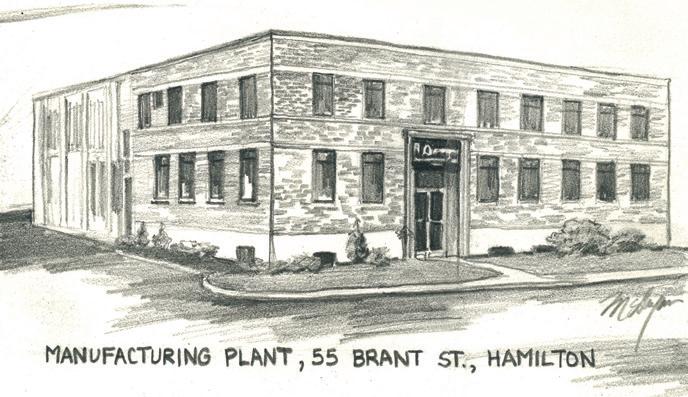
54 HCM FALL 2023
/CITY LIFE
Make Denninger’s your destination this Fall! HAMILTON IS HOME TO DENNINGER’S
/continued from page 16 OUR
BEST KEPT SECRET! FOR NEARLY 70 YEARS, DENNINGER’S HAS BEEN PRODUCING THEIR OWN SAUSAGES, SPECIALTY COLD CUTS AND SMOKED MEATS IN THE NORTH END OF HAMILTON, DELIVERED FRESH DAILY TO ALL OUR STORES.
Hamilton tea company founder brews up first cookbook
SUPER TONICS BY LAKE & OAK TEA CO.’S MEREDITH YOUNGSON SHARES RECIPES FOR ‘NOURISHING, FEEL-GOOD BEVERAGES’ THAT MAXIMIZE HEALTH BENEFITS.
Entrepreneur and holistic nutritionist Meredith Youngson, founder of the popular Hamilton-based tea company Lake & Oak Tea Co, has released her first cookbook Super Tonics
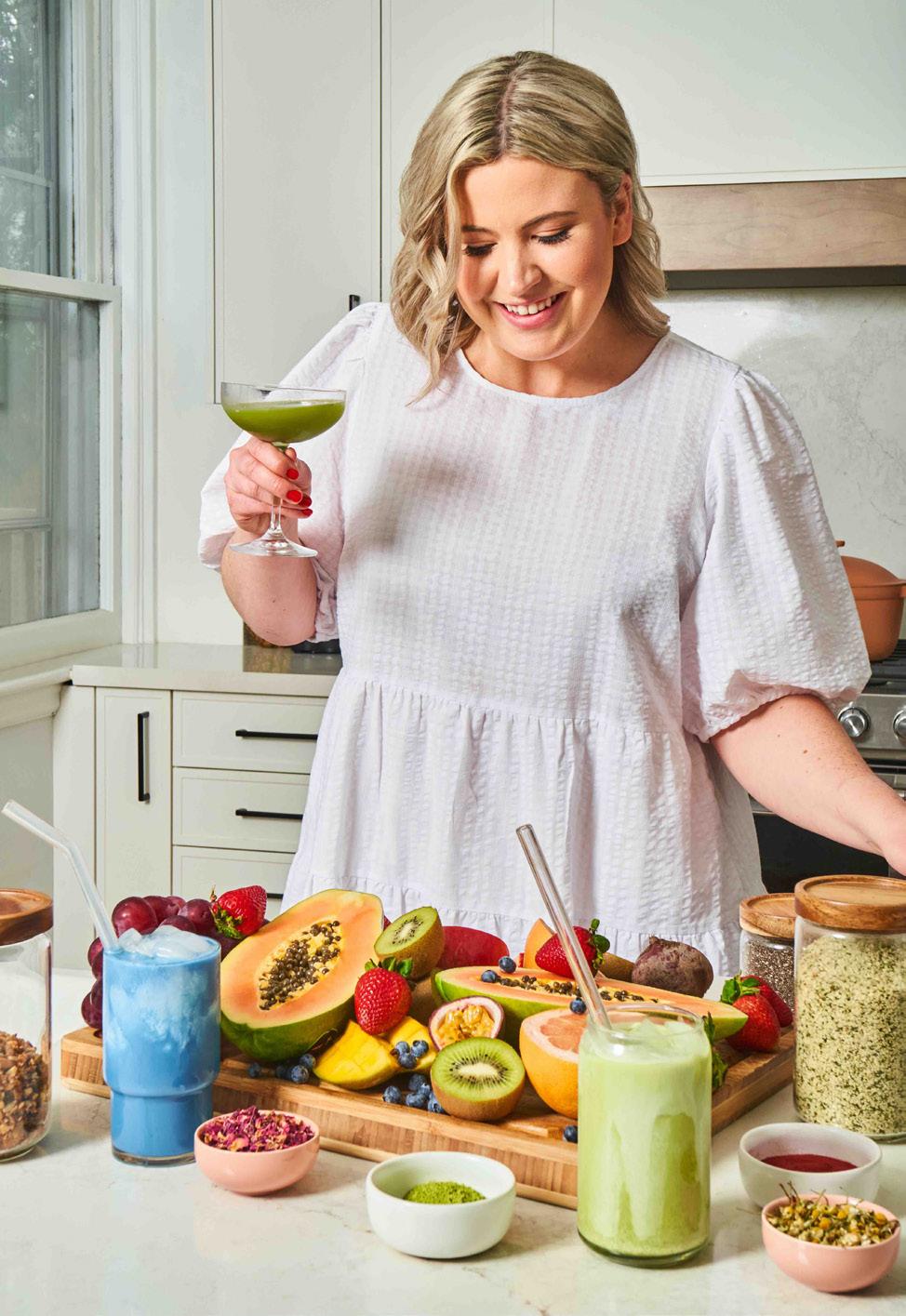
Searching for a way to naturally address her experience of anxiety and digestive problems was what brought Youngson to tea. Instead of looking at what she could take out of her diet, she was inspired to look at what she could add to it to help ease her symptoms. Tea worked and had the benefit of tasting great. That realization is what led to the creation of Lake & Oak Tea Co. five years ago. Now, aromatic and flavourful tea and latte blends with names like Happy Belly, Tangerine Sunshine, and Chill Mama have made their way into shops, city- and country-wide.
Youngson was trying to find a way to keep the tea business “interesting, relevant, sexy and fun” in the summer months and began playing around with new recipe ideas. It was through this lens that she wrote the cookbook proposal that got her the deal.
Lake & Oak Tea Co. and Super Tonics have a similar mandate: to make small moments feel special. Youngson also began experimenting with incorporating adaptogens, superfoods, and functional herbs into her recipes as a way to maximize health benefits.
Tonics are defined in the book as “nourishing, feel-good beverages” and they run the gamut from smoothies to coffee and tea-based drinks to everyday fruit and veginspired sips to cocktails.
With more than 75 recipes, Super Tonics “is a guide and cookbook that empowers the wellness-curious to make next-level superfood-packed drinks (and snacks) at home.” And despite its name, the book also offers recipes for both heartier snacks and light meals.
Youngson designed recipes “to be delicious with or without the recommended adaptogen powders or superfoods.”
If you’re looking for a bit of healthy inspiration or just want to upgrade your drinking game, Super Tonics is a great place to start. n – Kris Osborne
FALL 2023 HCM 55
scan the qr code to read Kris o sborne’s full story and to see some of m eredith youngson’s recipes. MORE ONLINE: hamiltoncitymagazine.ca
MEREDITH YOUNGSON, FOUNDER OF LAKE & OAK TEA CO., HAS RELEASED HER FIRST COOKBOOK SUPER TONICS PHOTO: JULES LEE
DISHING ON THE DELIS
WHETHER POLISH, PORTUGUESE, JEWISH OR ITALIAN, THERE ARE PLENTY OF LOCAL DELICATESSENS SERVING UP DELIGHTFUL MEATS, SANDWICHES, SWEETS AND HOT ENTRÉES.
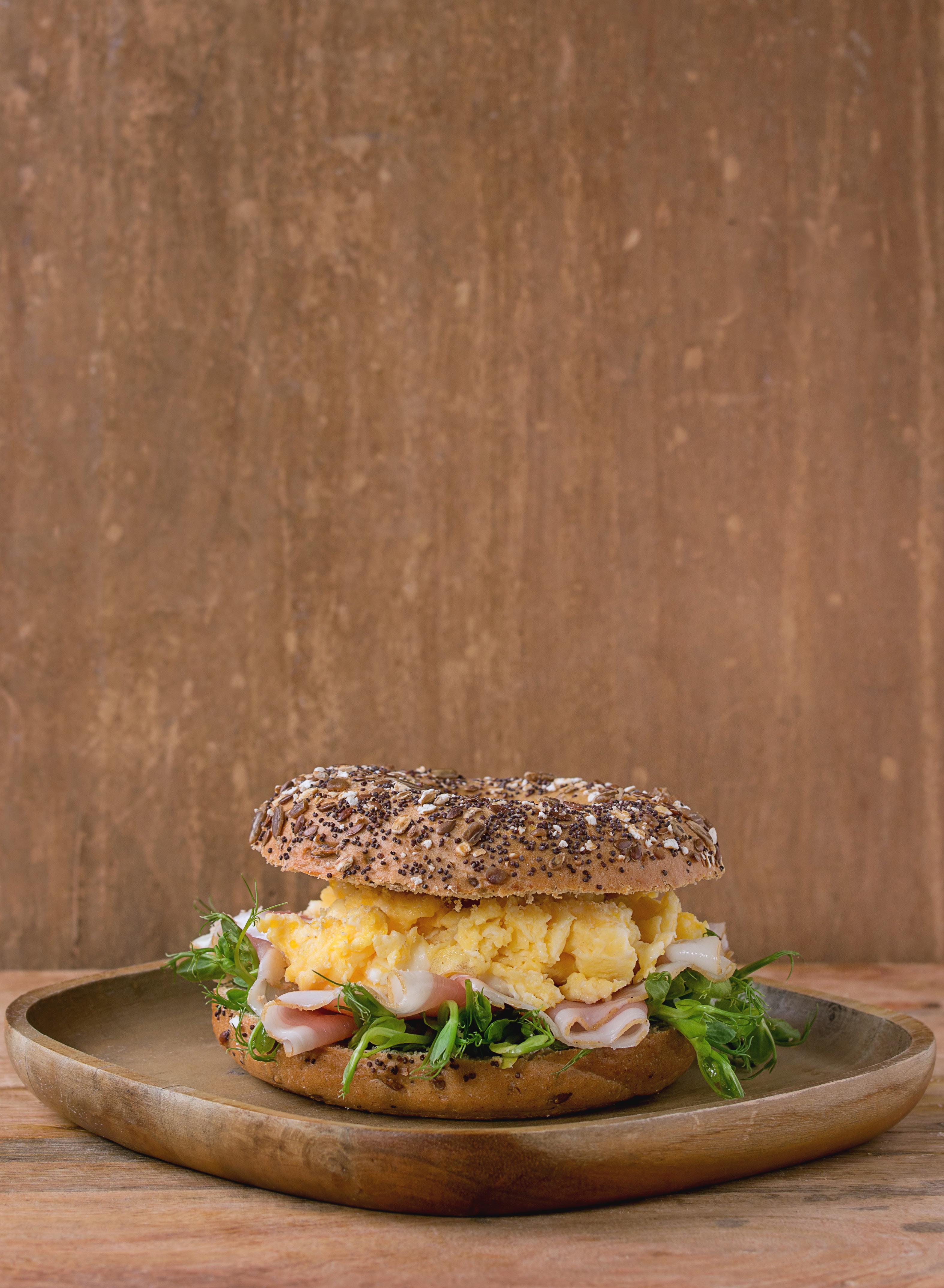 By HEATHER PETERS
By HEATHER PETERS
56 HCM FALL 2023 /FOOD & DRINK
It’s hard to describe exactly what a delicatessen is. Many people have their favourite delis to stop into, but what actually defines a delicatessen is hard to pinpoint. Dictionaries define a delicatessen as “a store selling cold cuts, cheeses and a variety of salads, as well as a selection of unusual or foreign prepared foods.” And though there is no culture that delis are specific to, they are said to have originated in Germany in the 18th century. In Hamilton and Burlington, we are spoiled for choice when it comes to deli options from all cultures. Here are some favourites.
STAROPOLSKIE DELIKATESY
711 Barton St. E., Hamilton
If you aren’t part of the Polish community in Hamilton, it’s possible you haven’t heard of Staropolskie Delikatesy. This hidden gem on Barton Street is one you will want to stop by ASAP. Staropolskie Delikatesy has to be one of the most reasonable deli meals in the area. Alongside all of its Polish and European imported grocery items, it serves up traditional Polish fare such as pierogies, cabbage rolls, sauerkraut, goulash, sausages and sandwiches. There is no written hot food menu, so just speak to the servers behind the counter and you’ll enjoy a delicious meal!
WESTDALE DELICATESSEN
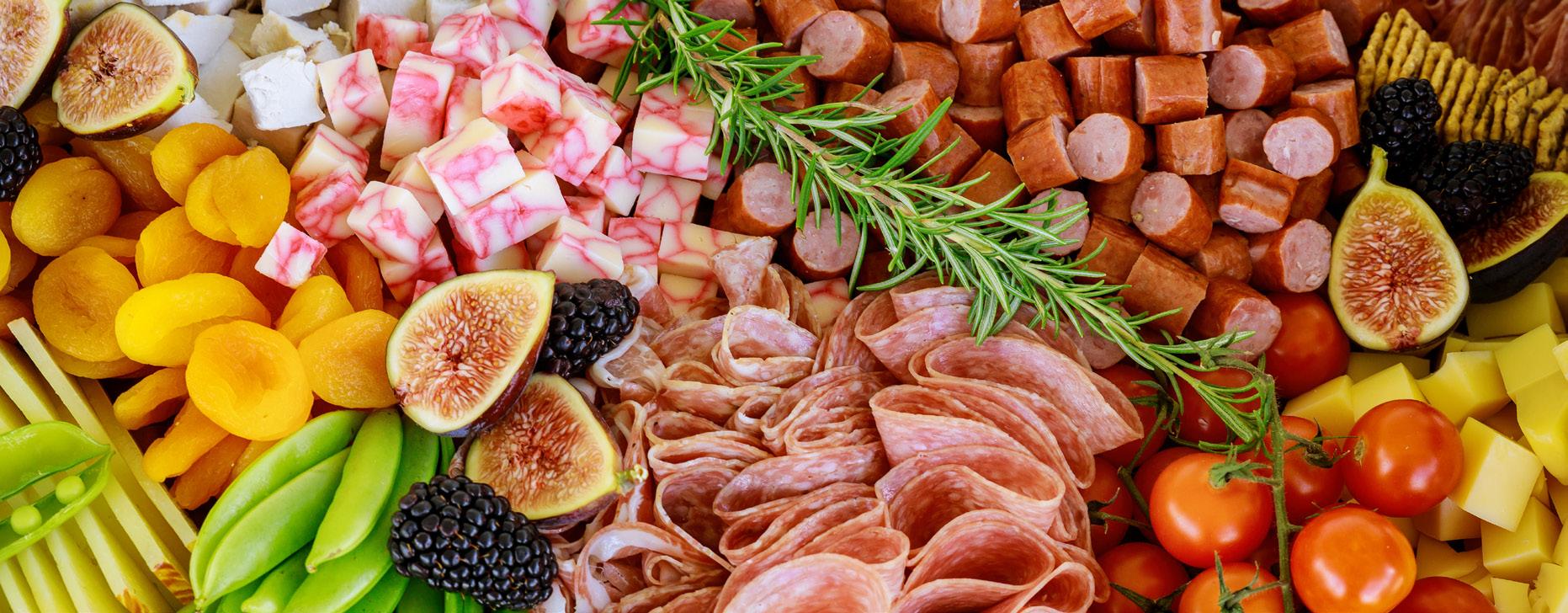
893 King St. W., Hamilton
Though Westdale Delicatessen is right on the main stretch of King Street in Westdale, this is another little hole-in-the-wall that you may have passed without taking notice, but once you see the Montreal smoked meat, pastrami or corned beef sandwiches, you will not forget them! They are piled high with meat and made in the traditional way with mustard on rye (if that’s your style). Smoked meat not your thing? There is a variety of other sandwiches, soups (frozen, too!) and entrées to choose from at this family-run deli, along with many European grocery items.
PANE DEL SOLE BAKERY
175 John St. N., Hamilton IG: @panedelsole
This Italian bakery on John Street North, just past Cannon, truly has it all! The variety of offerings brings customers in, and value for portions and variety in options keeps the customers coming back for more. For over 50 years, Pane Del Sole has been family run and it is specifically known for baked goods like cannolis, zeppoles, cakes, cookies and tiramisu. In addition to sweets and baked goods, the family also offers a sandwich and hot foods counter (think pasta, meatloaf, roast beef and more), where the portions are large and the prices are reasonable!
ZARKY’S FINE FOODS
Various locations around Hamilton zarkys.com
Family-run since the 1980s, Zarky’s has become a Hamilton success story that began with one location and has grown into three locations throughout the Hamilton area. On Concession Street, Dundurn Street, or Hempstead Drive, you can find many of your grocery staples at Zarky’s Fine Foods, alongside a fresh deli counter, a from-scratch bakery section, a prepared foods section and frozen entrées to take home. All of the entrées are made from scratch and include shepherd’s pie, stuffed peppers, lasagna bolognese and cabbage rolls.
OLÁ BAKERY & PASTRY
230 James St. N., Hamilton IG: @ola_bakery_pastries
Mostly known for baked goods – such as natas, croissants and cakes – along with specialty coffees, one should not overlook the sandwiches at Olá Bakery. Cut fresh from the deli counter at the back of the James North restaurant, these sandwiches are made fresh to order and piled high with the meats of your choice. Sandwich options such as turkey, capicola, bifana, fried egg and more are served alongside fresh-made soups of the day. Pick out one of the popular pastries to go with it, and you’re set!
ROMA BAKERY & DELI
233 Barton St., Stoney Creek romabakery.ca
Roma Bakery has become a household name in the Hamilton community, mostly through the cheese-less Roma pizza, which is a must-have at any Hamiltonian gathering or party. But did you know that there is a Stoney Creek bakery, which carries baked goods, breads, slab and nonslab pizzas and hot foods? Hot foods include everything from lasagna and gnocchi to veal parmigiana, arancini and oven-roasted chicken and potatoes. Roma even carries deli items like imported cheese, cured meats, cold cuts and antipasto.
/continued on next page
FALL 2023 HCM 57
SWEET PARADISE BAKERY & DELICATESSEN
630 Stone Church Rd. W., Hamilton
419 Dundas St. E., Waterdown sweetparadise.ca
With two locations, Sweet Paradise has been a Hamilton favourite for more than 35 years. In addition to all of the usual grocery products, Sweet Paradise is also a from-scratch Italian bakery, caterer and food-maker. Well-known for decadent sweets and pastry offerings such as cannolis, cream puffs, zeppoli and pies, Sweet Paradise does much more than sweet. Sweet Paradise also offers prepared meals either fresh or frozen, a bakery section for breads and a deli counter with cheeses and meats such as prosciutto, soppressata, capicola, pancetta and many more. Be sure to try the paninis and subs!
ALVES MEATS & VARIETY
157 MacNab St. N., Hamilton IG: @AlvesMeats
Alves Meats & Variety is another true hidden gem of Hamilton. This Portuguese store not only offers many Portuguese-imported grocery options that can be difficult to find, it also offers an entire hot foods section at the back of the variety shop. The prices for hot foods at Alves Meats cannot be beat! Try the bacalhau (codfish medley), roast chicken, bifana sandwiches, Portuguese sausage, and the potatoes.
DUARTE’S SUPERMARKET
417 Barton St. E., Hamilton
FB: @DuartesSupermarket
Serving up a variety of imported grocery items from Portugal, Duarte’s on Barton is Hamilton-famous among the foodies. Not only does this family-run supermarket have many grocery staples, but it features a complete deli counter, fresh meat counter, selections of cheeses, pastries and a hot foods and sandwich section. Try stomach-filling options like the spicy meatball sandwich, the chicken parm sandwich, pasta entrées or hoagies.
EURO MARKET DELICATESSEN
3480 Fairview St., Burlington
euro-market-delicatessen.business.site/
Located on Fairview Street in Burlington, Euro Market Delicatessen has been serving up Polish delicacies to the community for years. Specializing in imported Polish and European preserves, spices, teas, sauces, treats and sweets, plus smoked meats and cheeses, you really can find it all. The friendly servers at Euro Market Delicatessen also offer dessert options, and a hot table with choices such as chicken cutlets, soups and cabbage rolls.
GLOW VARIETY & GROCETERIA
177 Glow Ave., Hamilton
FB: @Glow Groceteria and Deli
Glow Variety and Groceteria has been around the Parkview neighbourhood since the 1960s (and actually used to include a bowling alley, back then!) These days, what might seem like a corner store from the exterior is actually a neighbourhood gem filled with yummy fresh items. You can find all the regular grocery items, fruits and produce but in the back of Glow Groceteria, you will find a popular sub counter with piled-high sub options including turkey, roast beef, BLT, Genoa salami, and cappicolla.
HAMILTON KOSHER
889 King St. W., Hamilton hamiltonkosher.com
On the main stretch of Westdale Village, you’ll find Hamilton Kosher. All products bearing the Hamilton Kosher label are certified kosher by the Vaad Hakashrus of Hamilton, Rabbi Green – but it’s not just for those following a kosher diet. The team at Hamilton Kosher offers catering for special events, butcher services, products like poultry and meat and prepared foods. Prepared offerings include everything from garlic ribs, BBQ chicken, and beef pastrami to potato latkas, cucumber salad, matzo balls and knishes. Try something new (or an old favourite) at Hamilton Kosher!
NONNO’S PLANT-BASED BUTCHER
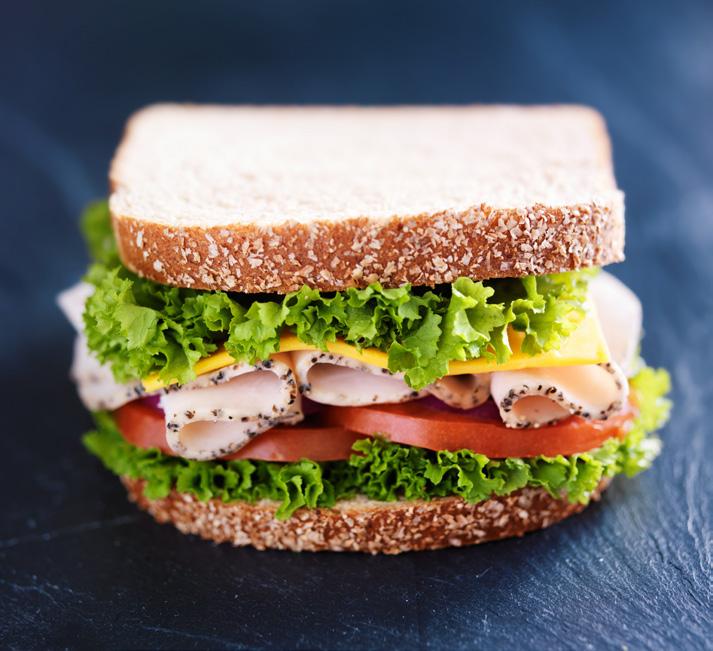
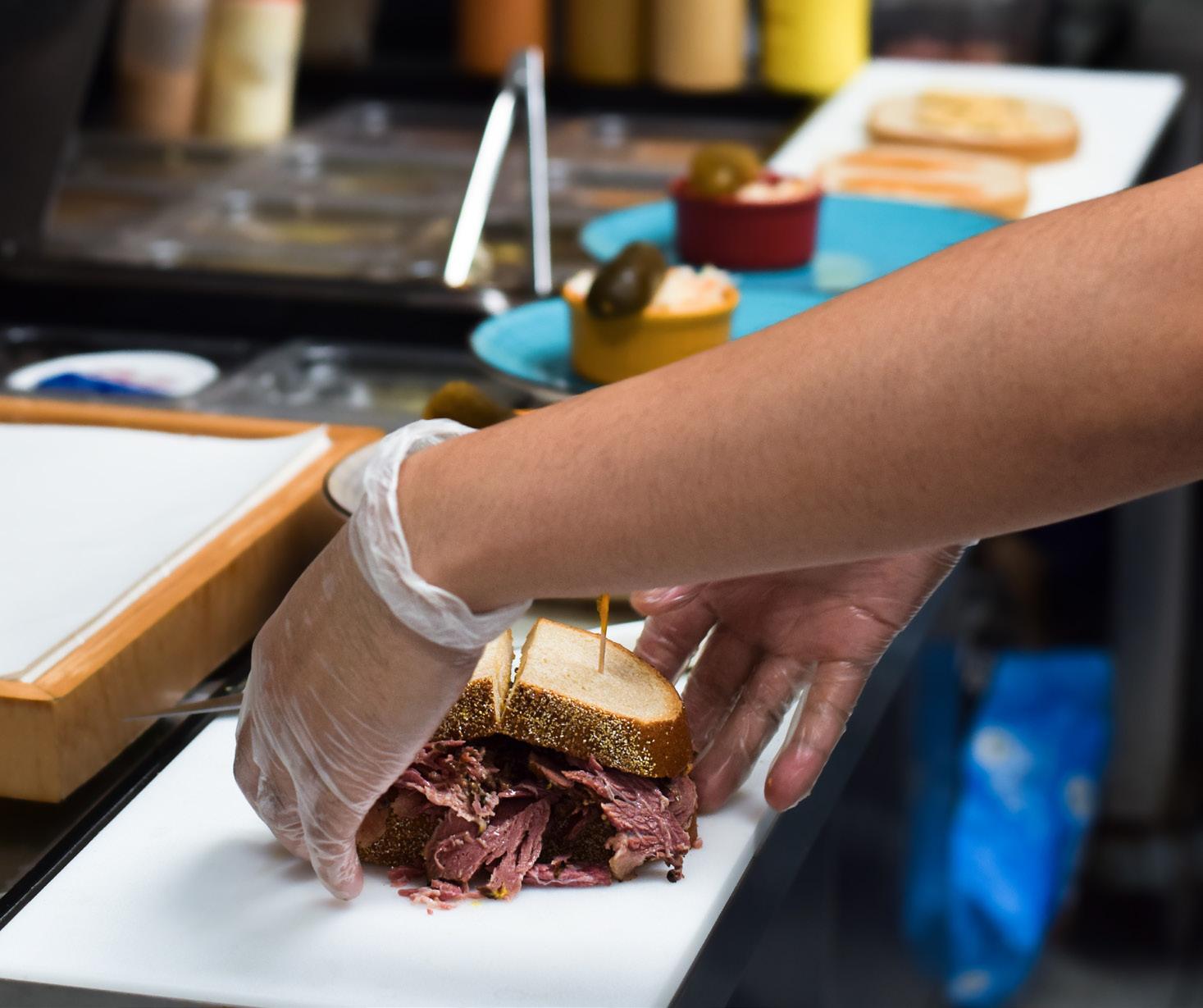
Hamilton Farmers’ Market (Lower Level) 35 York Blvd. nonnos.ca
A new addition to the Hamilton Farmers’ Market is Nonno’s Plant Based Butcher, though if you weren’t told ahead of time, you might not know they are fully plant-based. Nonno’s is all about “bringing back nostalgic flavours, textures and foods that many of us grew up enjoying” through fully vegan, soy-based cold cut offerings like roast beef, corned beef, chicken cutlets, baccala, pastrami and more. They pile these vegan options high on sandwiches, subs and hoagies that would impress any meat lover and vegan alike. n
58 HCM FALL 2023
/FOOD & DRINK
THE VETERANS AND THE NEWCOMERS HESS VILLAGE:
HAMILTON IS A CITY BLESSED WITH GREAT FOOD AND DINING DISTRICTS. WE WILL REGULARLY BE PROFILING LOCAL CULINARY CORRIDORS AND WE START HERE WITH HESS VILLAGE.
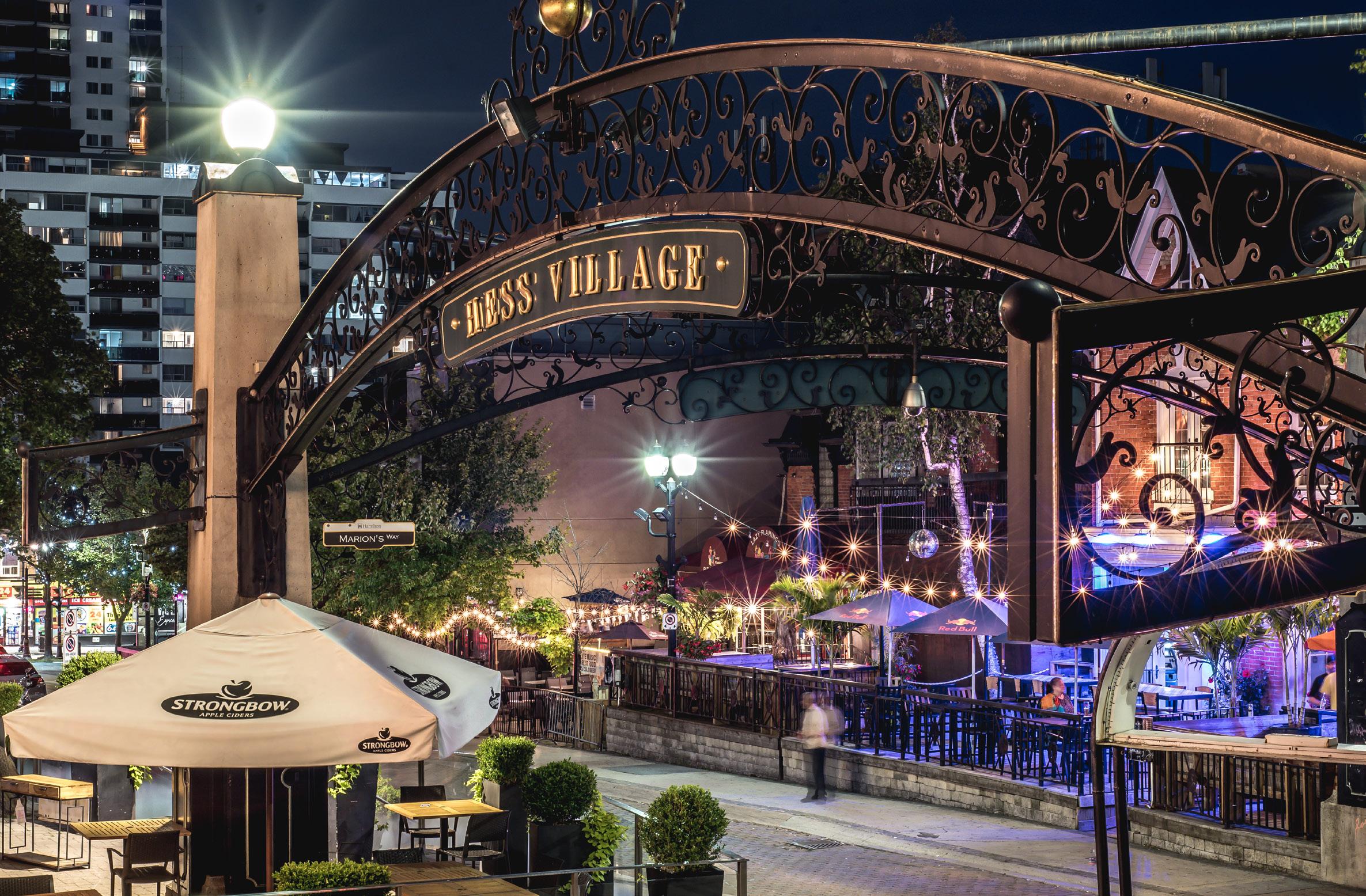 By DIANE GALAMBOS
By DIANE GALAMBOS
My earliest memory of Hess Village is a visit to a stylish salon to have my “colours” done – a fabric draping session that determined what colours enhanced my appearance. It was a transformation that required only changes to one’s wardrobe. Trivial perhaps.
The current transformations in Hess
Village are not.
They become especially interesting within the context of Hess Village’s history, keeping in mind that condensing 50 years of a complex story may lack nuance. It began in the early 1970s and had everything to do with shopping. The mall trend was still thriving –Jackson Square opened in 1972 – but there was also a trend toward “shopping villages.”
The most notable at the time was Yorkville in Toronto.
All one needed was a “village” and beginning in 1971 a Hamilton team began to buy the Victorian houses in what is now referred to as Hess Village – Hess Street between Main and King, scooping up part of George Street, too. Many houses had been /continued on next page
FALL 2023 HCM 59 /FOOD & DRINK
PHOTO: BOB HATCHER FOR HCM
neglected and the real estate was considered to be ideal for high-rise apartments. Instead, according to reports at the time, they were purchased and carefully restored with attention to historic details. By 1972, 14 homes had been purchased, and eventually 33 houses comprised “the village” – stores, services and a few restaurants. It’s unclear whether Hess Street was cobblestone but George Street became a cobblestone pedestrian mall in 1980.
But the charming cobblestone foreshadowed a bumpy road. The development company went bankrupt in 1979. The resulting public misconceptions about the village’s status left it like a ghost town. Retailers were stoic, loved the village, found rent to be cheaper than in malls and declared in a 1980 Hamilton Spectator report that any stigma attached to the village could “be overcome if the merchants work together.” They anticipated that new downtown hotels and the Hamilton Convention Centre would push visitors to Hess.
In the early 1980s, the stigma was exacerbated when the principals of the original development team were convicted of fraud and imprisoned for a time. These were also tough economic times with exorbitant interest rates. Walk-in traffic remained quiet, some shops were replaced by services, and yet nothing stifled hope. Many still saw enormous potential in Hess Village.
Successive stages focused on pubs and the local music scene. Then pubs were slowly replaced by clubs that attracted crowds who partied into the wee hours of the morning, earning the village’s moniker as a hip entertainment district. Increasing rowdiness, vandalism and occasional violence saw the addition of paid police patrols in the mid2000s. With a portion paid by all bar owners, this became a costly issue. Media coverage was rarely positive and negative stigma prevailed – as did hope from the Hess Village community.
Celebrated photographer Gerry Laarakker (who died in 2021) opened the Laarakker Portrait Studio in Hess Village. A quote from him decades earlier in a 1986 Hamilton Spectator article still said it all: “In spite of all the Hess Village bashing, we will survive. In spite of the media, in spite of political games, we are alive and well.”
Clearly for Hess Village the “bumps” were
not only in the road. Some may say it’s been a long time coming, but a change is once again underway and you may not have noticed. COVID delivered a sort of reset, with some clubs closing and new businesses moving in. The towers that threatened to replace local real estate in the 1970s are indeed rising –but this time around the village.
The Platinum Condos at Queen and King sit diagonally across from Vrancor Group’s almost-completed Hampton Inn. They have also proposed several condo towers for the nearby Strathcona area. An Apex condo project is planned at Queen and Main.
While the density of some proposals is unclear, there is no doubt that the overall population of the neighbourhood is increasing. The new projects have all scored high walkability numbers that point to Hess Village as a community core, with the promise of the eventual LRT at the doorstep.
While late-night club activities resulted in some merited negative press, current restaurateurs are optimistic that the stigmatization of Hess Village will soon be a thing of the past. No one is predicting that the after-dark scene will disappear but hope it will be balanced by a busy day-time crowd – a diverse demographic sharing a growing and evolving neighbourhood. Next time you hit the cobblestones, stop and visit.
RADIUS
The restaurant (which now uses a lowercase R) first opened in 2012 in a rented historical home in Corktown and transitioned with new ownership in 2018 and a new chef – Dan Burcher – since spring 2022. Their decision to purchase and move to a space in Hess Village has invigorated current transformations. Managing partner Dan Trevisani says they are keen to be part of the revitalization.
Beautifully renovated, inviting indoor and patio spaces (as well as a second-floor event space) provide the backdrop to updated, eclectic lunch, dinner and brunch menus that are top-notch, developed and still evolving with input from a nutritionist. The signature goat cheese spring rolls and the chicken Waldorf tartine (toast) I ate were outstanding. Promoting local partners was evident in the use of Dear Grain sourdough. Chef Burcher has licence to be creative and says the energy of the radius team is a good match to his own passion.
radius continues to have an impressive drinks program that includes creative zeroalcohol cocktails (try the Dreamsicle!). Several nights per week, the restaurant transitions to an after-dark lounge. Diversity is evident in services and patrons and local interest in urban casual dining has been reflected in increased takeout.
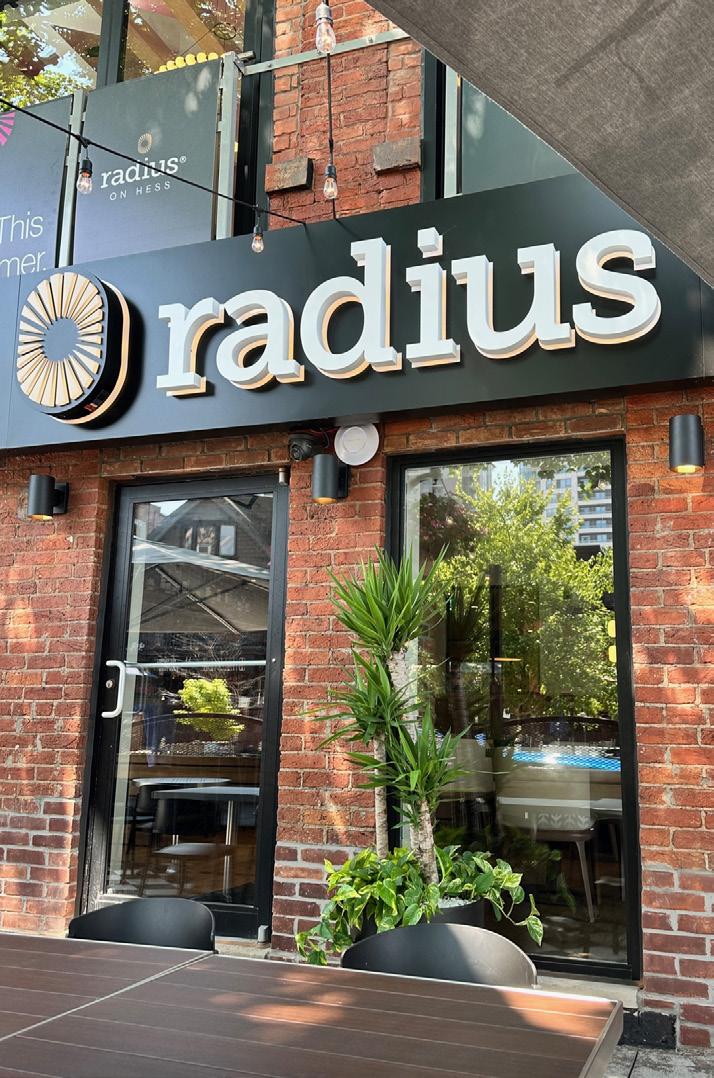
ELECTRIC DINER
The transformations linked to radius are not without precedent. In the mid-2010s, events elsewhere in the city were setting the stage for changes on George Street. News articles at the time gushed about the migration of chefs from Toronto to Hamilton – the “place to be” for innovators.
Settling in Hamilton were Erika Puckering and Jamie Ewing, who opened Electric Diner in 2019. They were attracted to Hamilton –which they say has a heart – to raise their growing family. The couple love the 1980s and crafted Electric Diner as a tribute to that decade, central to their youth. Expect whimsy and nostalgia, trivia nights – and great food. Puckering stresses that what COVID taught many merchants is that “food first” is the way to go if you want to survive.
My recent visit was partly motivated by their irresistible cajun corn “ribs” and their featured Nathan’s Famous all-beef dog, with liquid gold cheese sauce, bacon and hickory
60 HCM FALL 2023
/FOOD & DRINK
RADIUS HAS MOVED TO HESS VILLAGE FROM ITS LONG-TIME LOCATION ON JAMES STREET.
PHOTO: DIANE GALAMBOS
sticks. There’s a children’s menu – which, up until recently, hasn’t been typically found in Hess Village eateries. No matter the age of the diner, Fruit Loops and Lucky Charms are available on the breakfast menu.
But it was passionate work – not Lucky Charms – that accounted for the team recently receiving the Hamilton Chamber of Commerce’s small business achievement award. Puckering is excited about recent and planned Hess Village developments and hopes that will include events aimed at rebranding.
“That’s the investment we need to go forward within Hess Village – getting people to see it in a different light.” She stresses that new visitors are always so impressed (as are the many visitors to their second location in the Lister Block on King William Street).
ANDIAMO
The family theme is echoed at Electric Diner’s neighbour Andiamo (Italian for “let’s go”). Tapping into three decades of family experience, owner Dre Bucci – in a midpandemic leap of faith – resurrected the classic barbershop concept and combined it with a café (and an event space), all with a retro ’60s vibe. The setting is stylish but joyful and pet-, family-, kid-friendly – and includes, at times, his adorable toddler.
“I’m a social guy,” says Bucci “and passionate about people.” He’s welcoming new demographics to Hess. His hundreds of clients are young and old and include the LGBTQ community. He hopes other personal services will open in the village. Andiamo features a walk-up window for takeout, cannolis from Sam’s Queenston Bakery, and Italian craft beer, wine and cocktails.
Transformations have coincided with some rebranding of Hess veterans. Koi opened as a sushi house in 2004, eventually evolving into American fusion cuisine. Now, co-owner Ken Collett says that they felt the time was right to return to their roots. With a new chef – Sam Girgis – they have rebranded as Koi Seafood House. The talented Girgis has decades of experience, which included, for a time, his own restaurant Souvlocke.
My Koi meal was extraordinary. The panroasted Atlantic salmon is worth describing. Cooked to perfection, it was plated with roasted king mushrooms, summer peas atop
mushy peas, topped with charred shishito, surrounded by amazing saffron potatoes, drizzled with warm mushroom ponzu dressing and garnished with fried shaved parsnip. The grilled Moroccan calamari made me open-minded to this menu item I usually ignore. All the food was outstanding. The Koi patio is pleasant, and while the interior décor is a bit more “clubby,” Collett says to look forward to a total renovation this fall.
Collett has been a fixture in Hess since the late ’90s with Funky Munky Rib House and Discotheque – since closed. His businesses also include nightclub Sizzle (which was heavily damaged by arson in July). Collett says he has high hopes for Hess and feels that as Hamilton is changing there are more who are willing to invest. Drop by for fab food, drinks and music.
THE GOWN & GAVEL
Established in 1979, The Gown & Gavel is a fixture and likely the most longstanding business in Hess Village. Boasting Hamilton’s largest outdoor patio bar, the indoor space –two connected buildings – is also substantial and attracts a more varied crowd in daylight with the Gown’s pub-style food. It is also well-known for Saturday night dance parties.
The Lazy Flamingo is another longstanding business remembered fondly by some of the newcomers in Hess. It’s been described as the premiere live music venue in Hess Village.
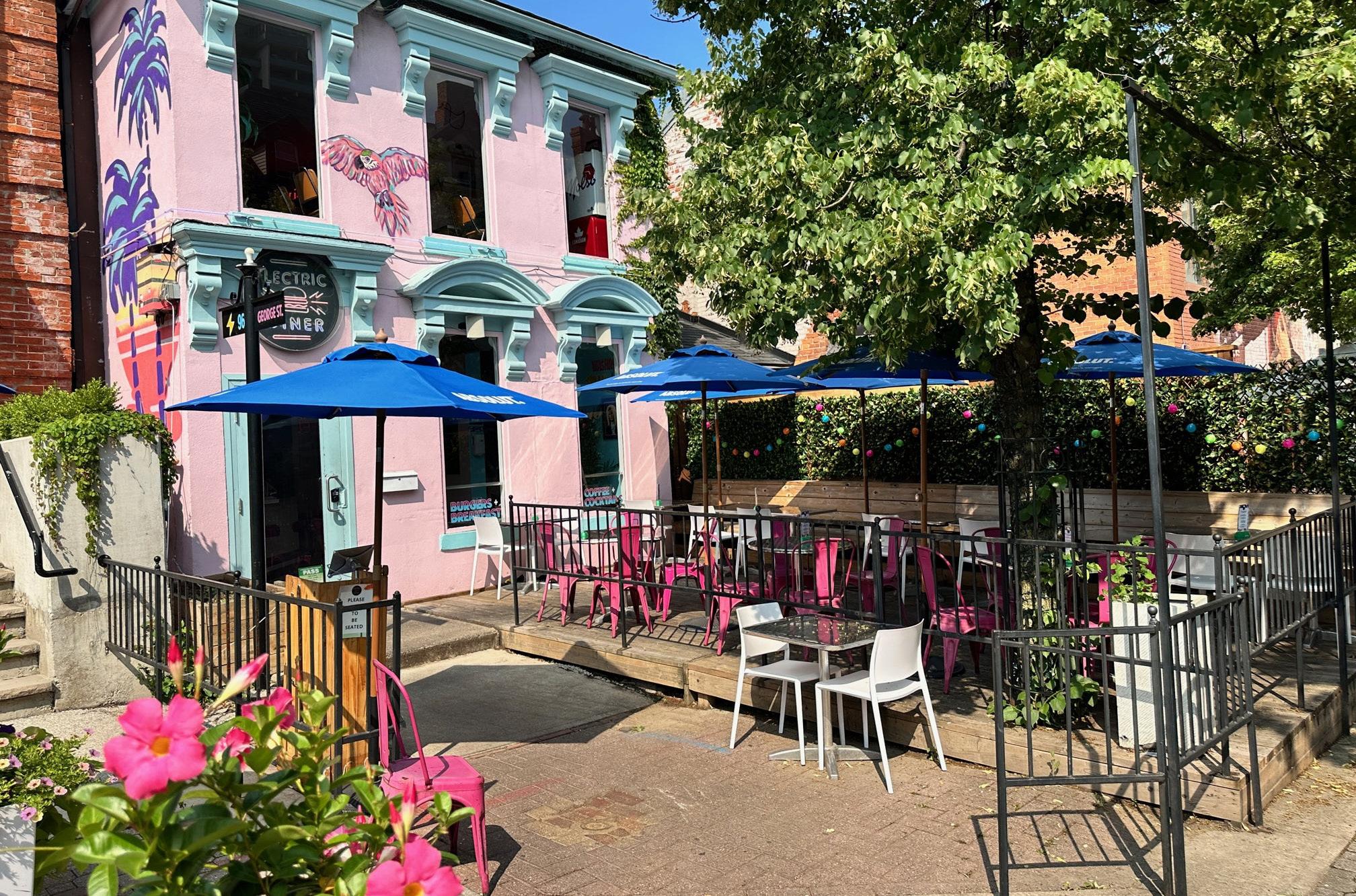
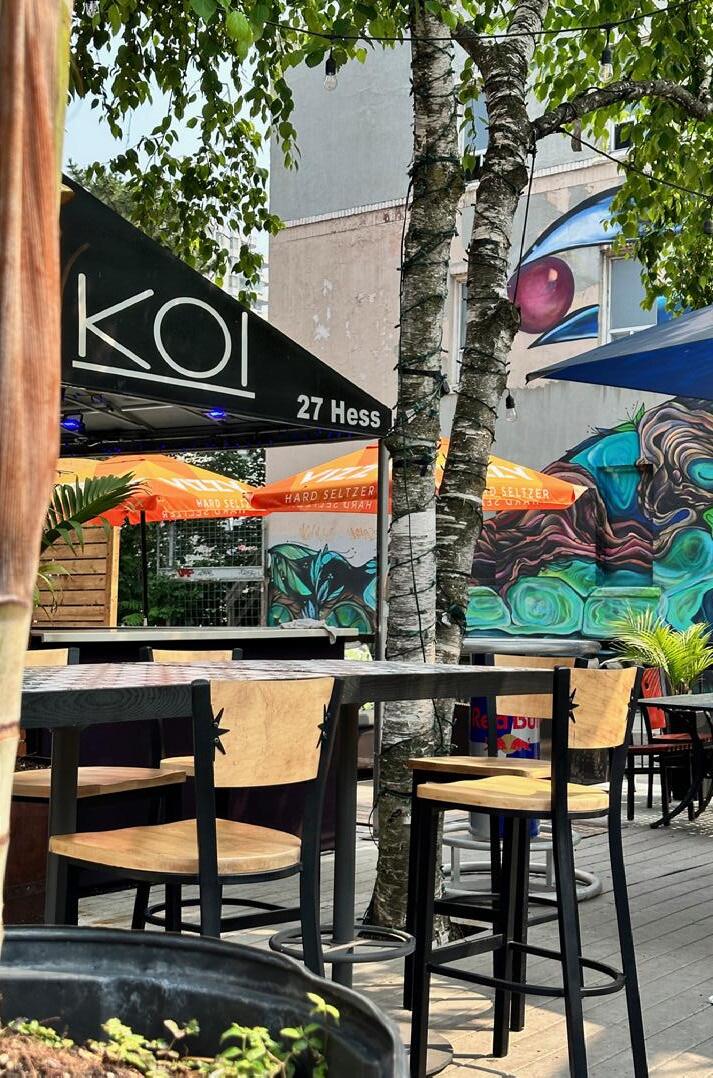
The King George Pub, open since 2022, is a traditional British pub with a modern feel, offering entertainment and classic (and varied) pub fare including cheddar ale dip, cottage pie and roast beef Yorkie and deepfried Mars Bar. Interior and patio spaces are welcoming.
Moody’s Pizza Bar & Arcade is a favourite go-to for those seeking pizza, pub food, craft beer, cocktails and a pinball and video arcade. Right next door, Amigos is a Tex-Mex eatery featuring nachos, burritos, fajitas, carnitas, churros and more.
Additional food attractions are Smoke’s Poutinerie and the newly opened Pizzeria Bros. There are rumours that a coffee house is also about to open. Hess Village is also home to the DDG Med Spa (Drop Dead Gorgeous) and The Witch’s Fix gift shop. n
FALL 2023 HCM 61
KOI
KOI OPENED WITH SUSHI IN 2004, THEN EVOLVED INTO AMERICAN FUSION, BEFORE REBRANDING AS KOI SEAFOOD HOUSE PHOTO: DIANE GALAMBOS
NODS TO THE COLOURS AND VIBE OF THE 1980S ARE EVERYWHERE AT THE ELECTRIC DINER, WHICH OPENED ON GEORGE STREET IN 2019. PHOTO: DIANE GALAMBOS
DWELLING IN POSSIBILITY
JANE ALLISON WAS BORN AT ST. JOSEPH’S HOSPITAL (SHE IS EVEN ON THE BABY WALL THERE) AND RAISED IN BURLINGTON. SHE FINALLY MOVED TO HAMILTON IN 2018 AFTER YEARS OF WORKING IN THE CITY, INCLUDING ROLES AS MANAGER OF COMMUNITY PARTNERSHIPS AT THE HAMILTON SPECTATOR AND PUBLIC RELATIONS OFFICER AT THE HAMILTON-WENTWORTH DISTRICT SCHOOL BOARD. SHE’S AN AWARD-WINNING COMMUNITY ADVOCATE, A PODCASTER, SPEAKER AND MODERATOR AND ESTABLISHED DOVETAIL COMMUNITY IN 2017.
What is Dovetail Community Hamilton all about?
At Dovetail Community, we create community engagement and communications strategies based on audience research and executable ideas. We get to the heart of human behaviours and tailor plans to build on those to achieve organizational goals. Dovetail also offers specialties in media training, facilitation services and champion/ambassador development.
What is the greatest satisfaction in the work you do?
When organizations become better versions of themselves, because of our collaboration. Identifying and then achieving goals through Dovetail’s work is so meaningful. That feeling of having an impact and building community is like few others.
Is there one concert or other artistic experience of your life that stands out for you?
Bruce Springsteen in my own city. I’m completely besotted by him to start with; all goofiness aside, I have learned a lot about building community from him. Seeing him play in our own backyard was a major life highlight. When we were standing in the pit of then-Copps Coliseum and he played Thunder Road, I cried with all the joy my Bruce-loving heart could squeeze out.
You’ve been involved in many community events and organizations Is there one that is particularly close to your heart?
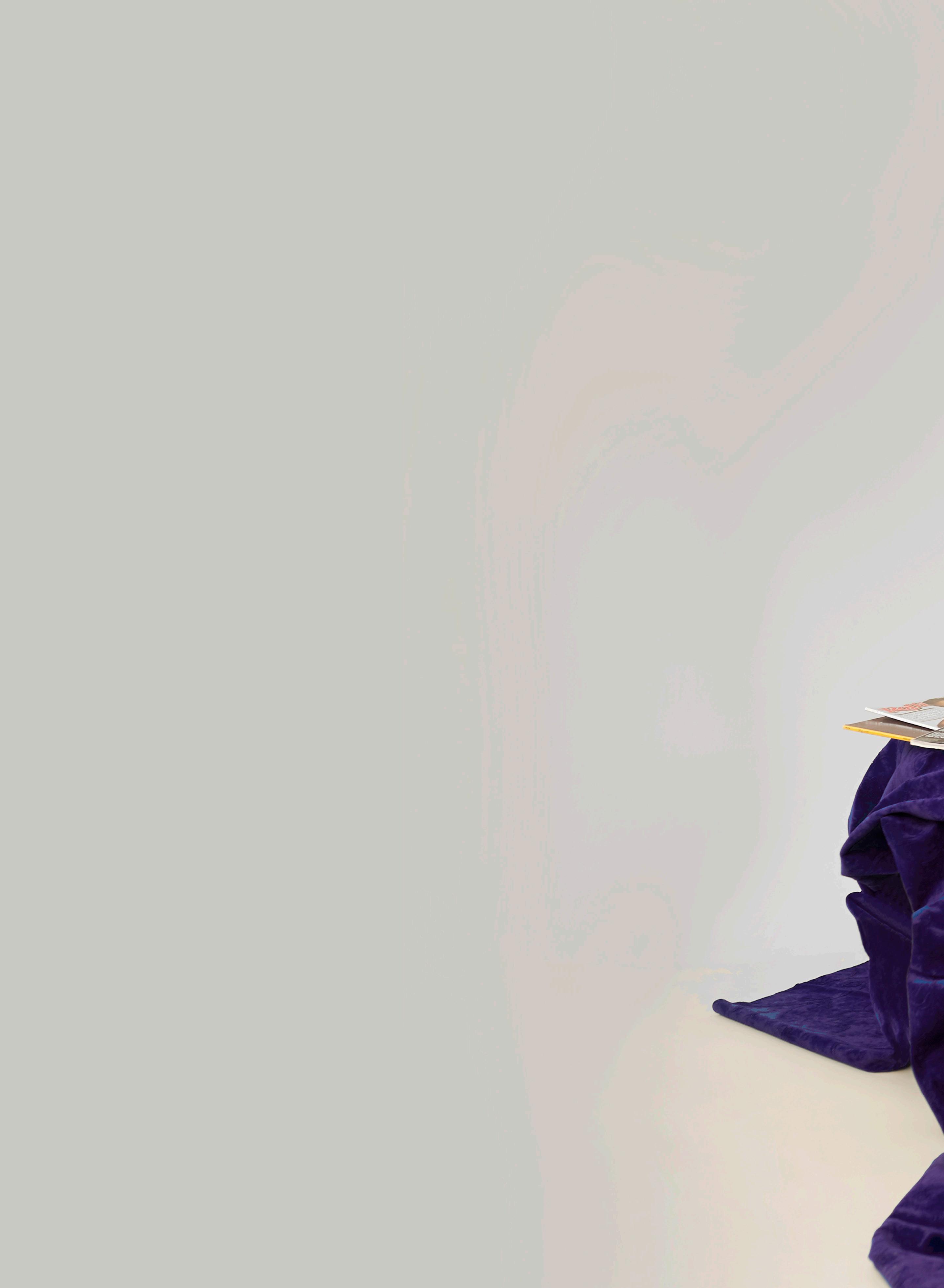
Usually the one I’m currently doing! One example is an amazing project by St. Matthew’s House, which will build lowcost housing for homeless and near-homeless seniors at 412 Barton. So meaningful. Anything to do with mental health and poverty reduction has been a through-thread for me. These are such determinants in the quality of life for a community. I was on the board of directors for BGC Hamilton-Halton (formerly the Boys & Girls Clubs of Hamilton) for many years and I loved it. What an amazing organization that has an impact throughout the city.
What is your favourite activity or event in the fall?
The season itself. It really is the psychological new year – I’m sure based on years of the start of school. I always feel as if I should buy a new pair of shoes and a pencil case. Everything feels cozy and as if we are all gathering together again.
What’s the best meal you’ve eaten in the city?
This is like asking which friend is your favourite! We are so lucky here in Hamilton with our food and hospitality community. I have had so many memorable meals here. I love being at The Aberdeen Tavern, Rapscallion and Radius. La Piazza Allegra, Sasso and Valentino’s for amazing Italian. The Capital Bar is terrific, and I love what is happening along Concession Street. And you cannot go wrong with a foot-long hot dog and a root beer from Easterbrook’s. Yum city.
What is Hamilton’s best-kept secret?
Its beauty. The green spaces, the architecture, the escarpment. The industrial core has its own beauty. When I was a little person, I remember my dad taking me to Spencer Smith Park in Burlington and sharing the idea that the steel mills we could see across the bay were beautiful because they meant prosperity. Plus, wine country next door. Need I say more?
Hamilton needs more of...?
A sense of self-esteem. We need to be proud of where we live and showcase its glory whenever we can. It has been very tough since the pandemic for sure – some of the challenges will be with us for decades. We need to believe in Hamilton and what is possible here. Let’s dwell in possibility. n
62 HCM FALL 2023
/CITY VIEW
MORE ONLINE:
scan
the qr code to see much more from Jane allison, including who inspires her and what has been the greatest gift of her life.
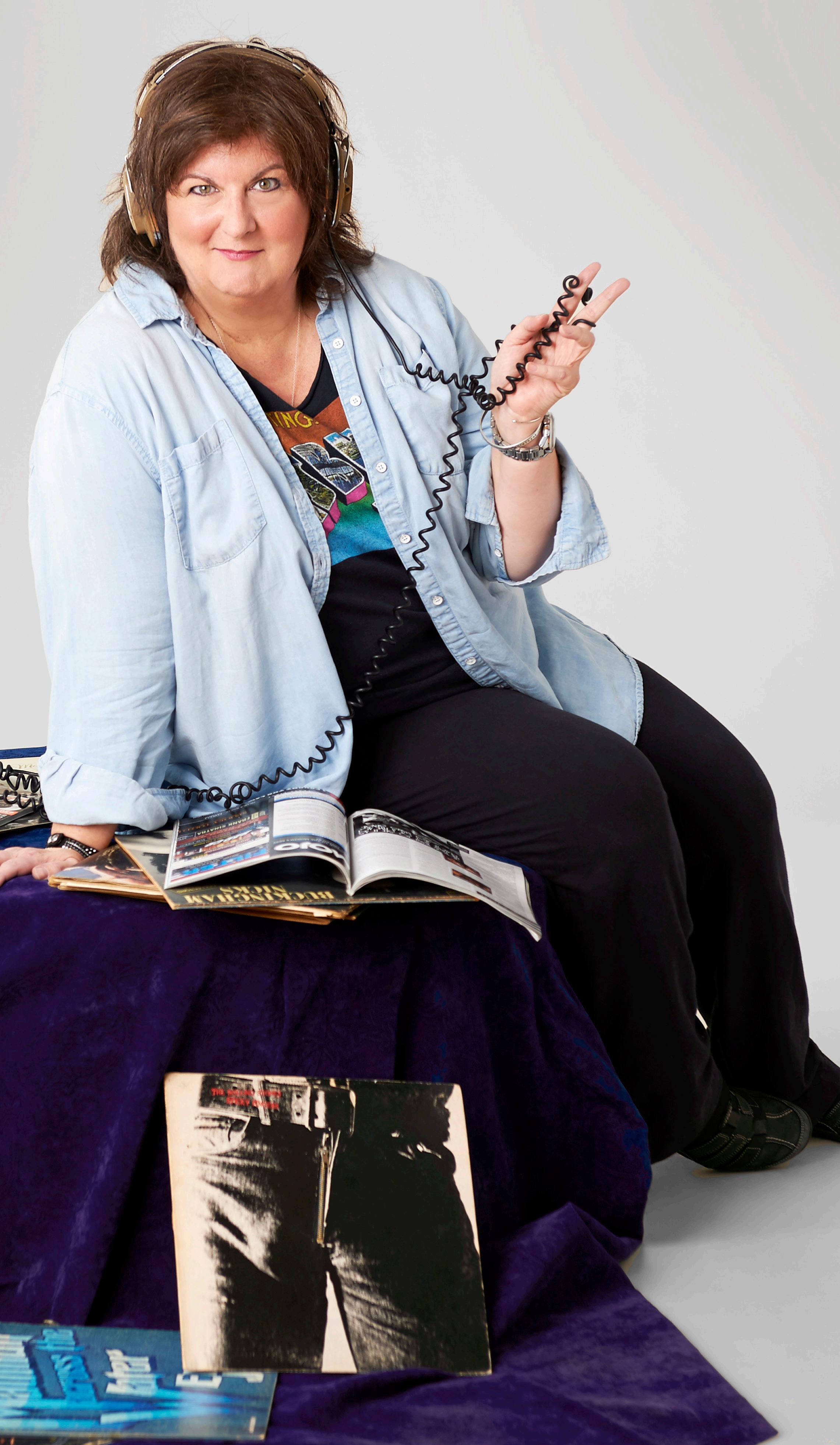
 PHOTO: MARTA HEWSON
PHOTO: MARTA HEWSON
TONIGHT,
THIS WEEKEND, NEXT MONTH?

what to do?
LET US HELP WITH THAT.
HAMILTON CITY MAGAZINE HAS CURATED EVENTS AND ACTIVITIES FROM DOZENS OF ORGANIZATIONS, PROMOTERS, CLUBS AND CULTURAL INSTITUTIONS IN THE HAMILTON AND BURLINGTON AREA.

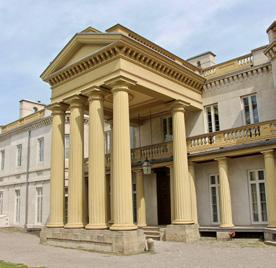











Instead of endlessly searching the internet, you only have to go to one place: hamiltoncitymagazine.ca. Check out the Things To Do section on our homepage menu and use the dropdown menu Find An Activity to search by the type of activity or event you’re craving. It’s all there for you – including our feature stories that highlight local events, found under Happening Now.

TOMORROW,
things to do scan the qr code to be taken direct LY to
and activities L
the events
anding page.
hamiltoncitymagazine.ca
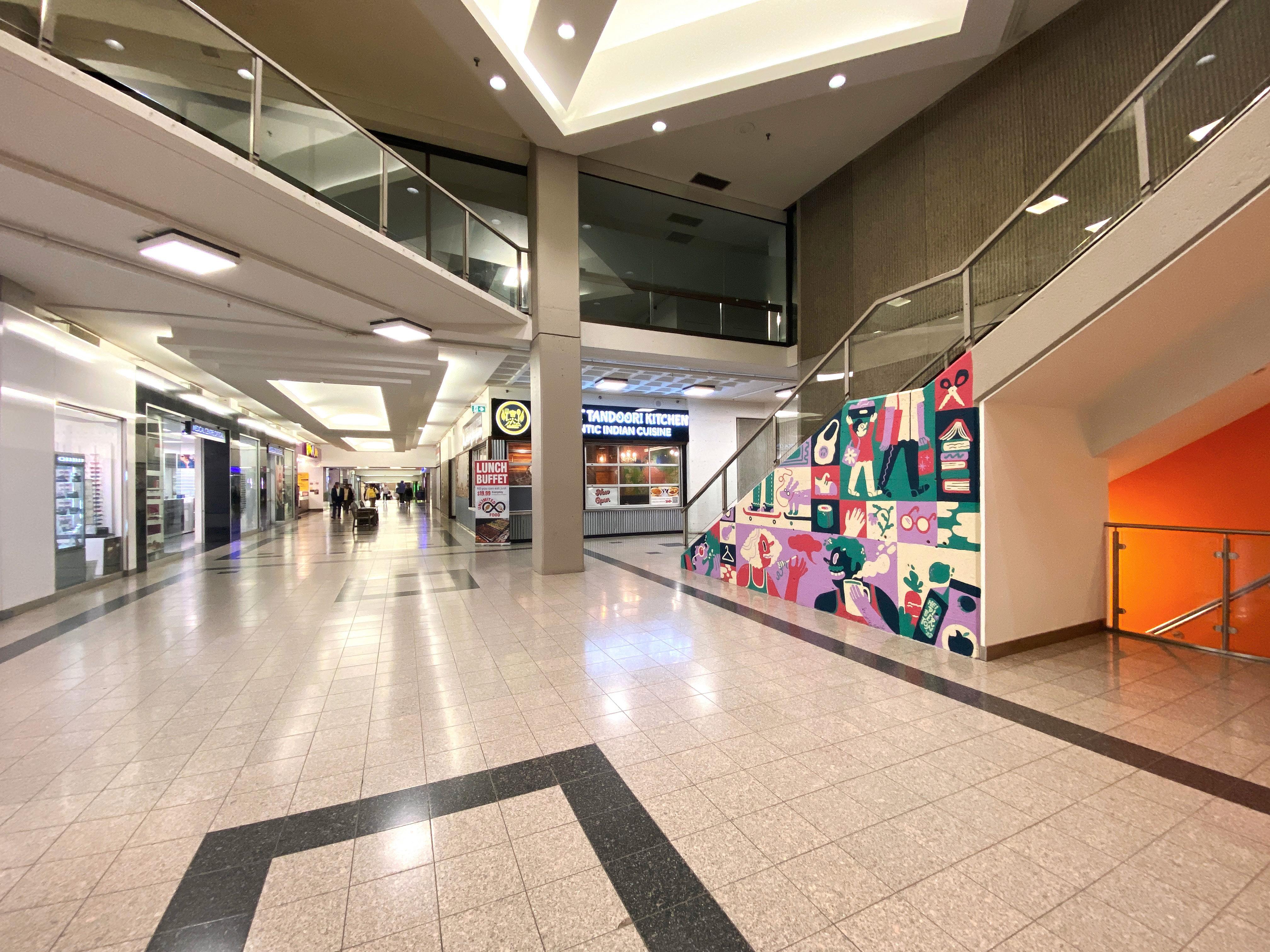
Mon-Sat 9:30 AM–6 PM | Sunday 12–5 PM 2 King Street West, Hamilton L8P 1A1
Celebrating 51 Years IN DOWNTOWN HAMILTON
Kayla Whitney, Aichoucha Haidara, Heidi Berton, and Sam Estrabillo!
MURAL BY HEIDI BERTON









































 By RYAN MCGREAL
By RYAN MCGREAL




















































































 By HEATHER PETERS
By HEATHER PETERS



 By DIANE GALAMBOS
By DIANE GALAMBOS





 PHOTO: MARTA HEWSON
PHOTO: MARTA HEWSON
















